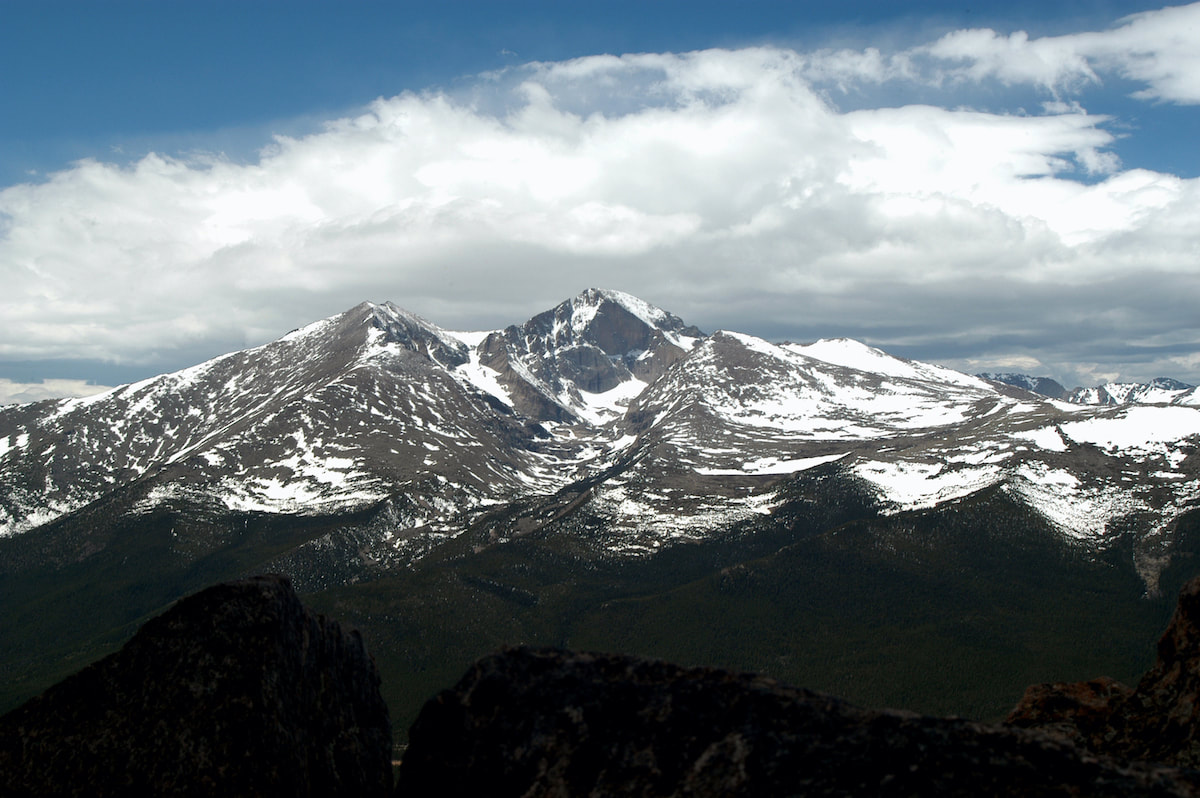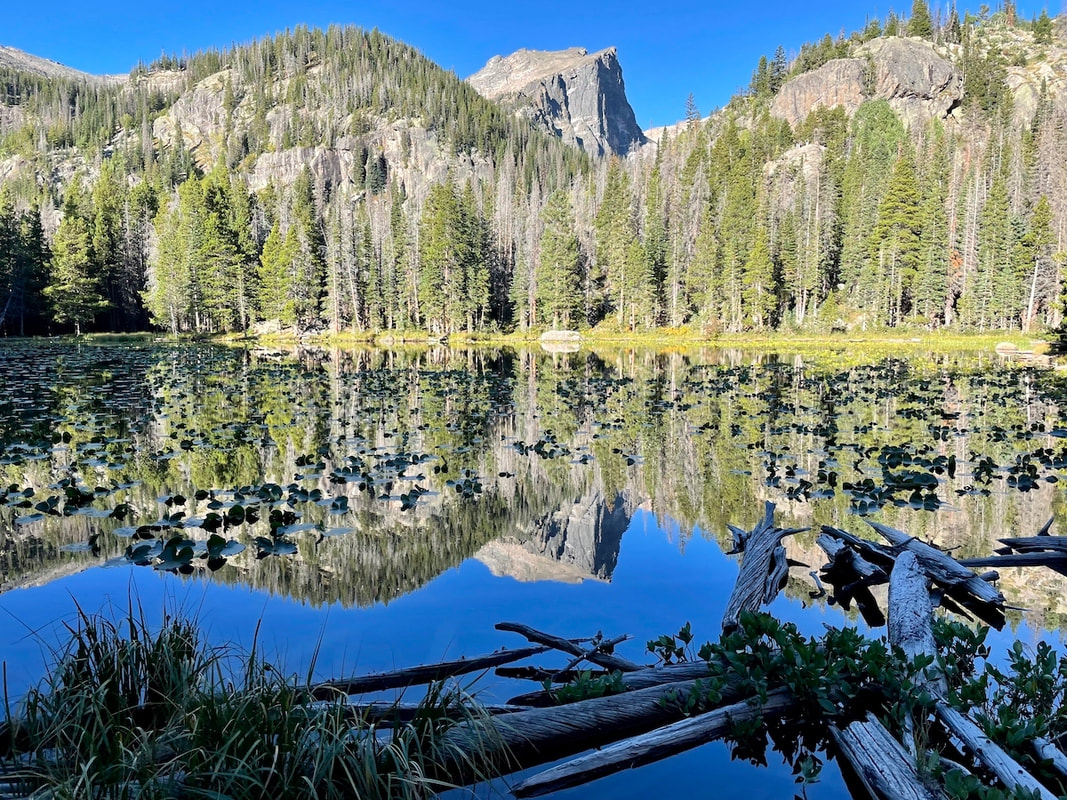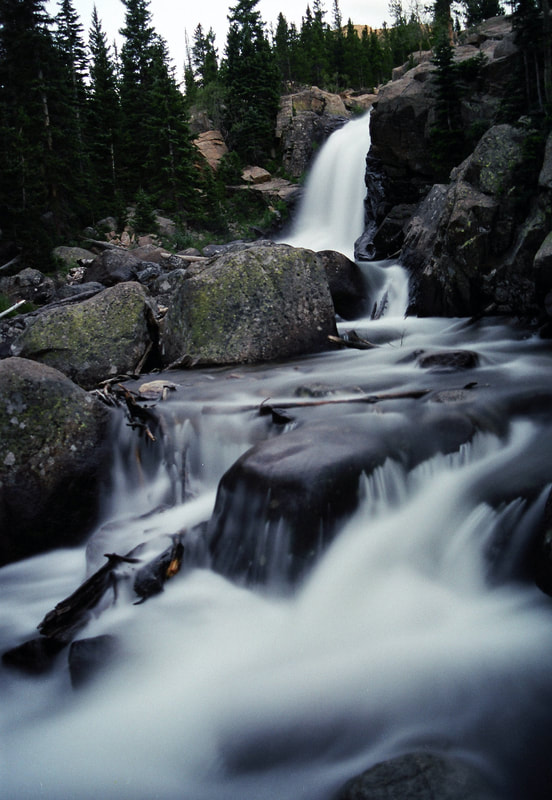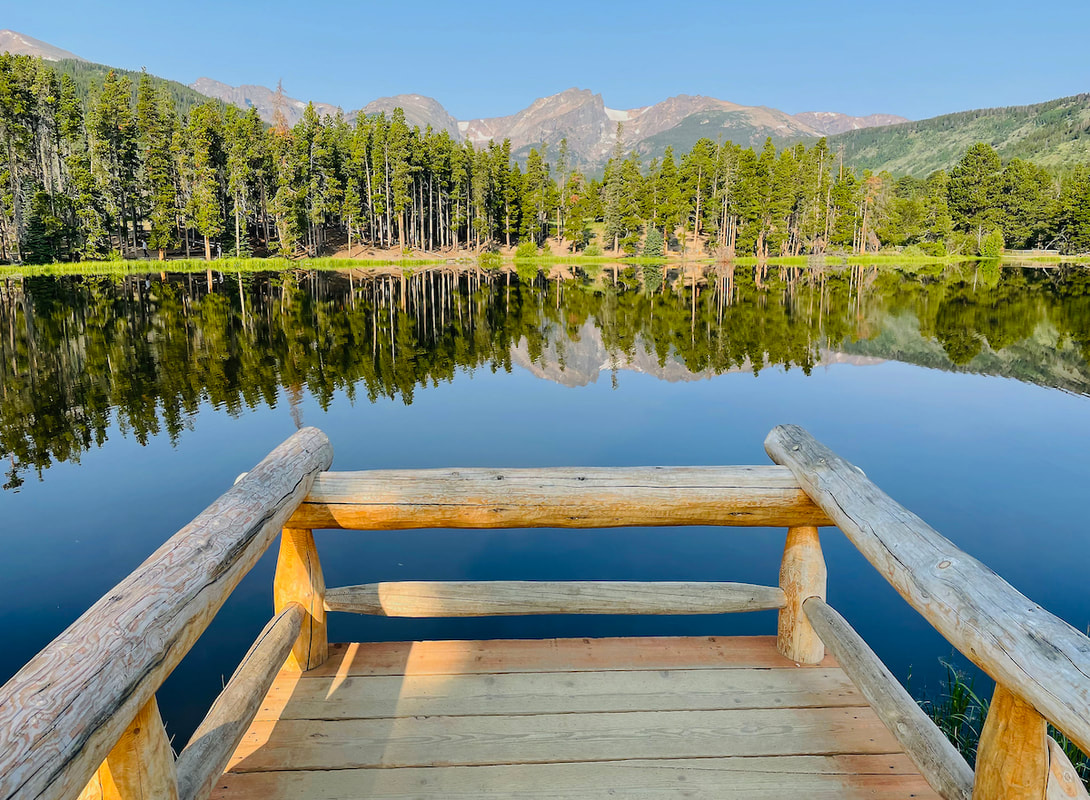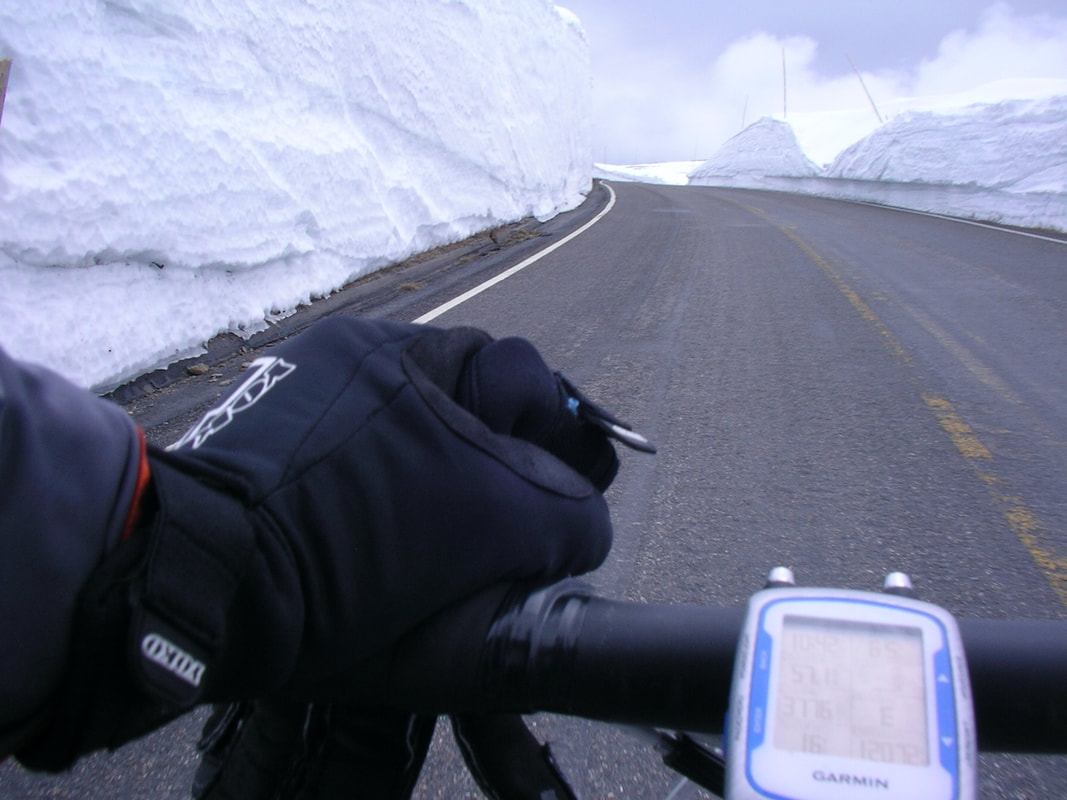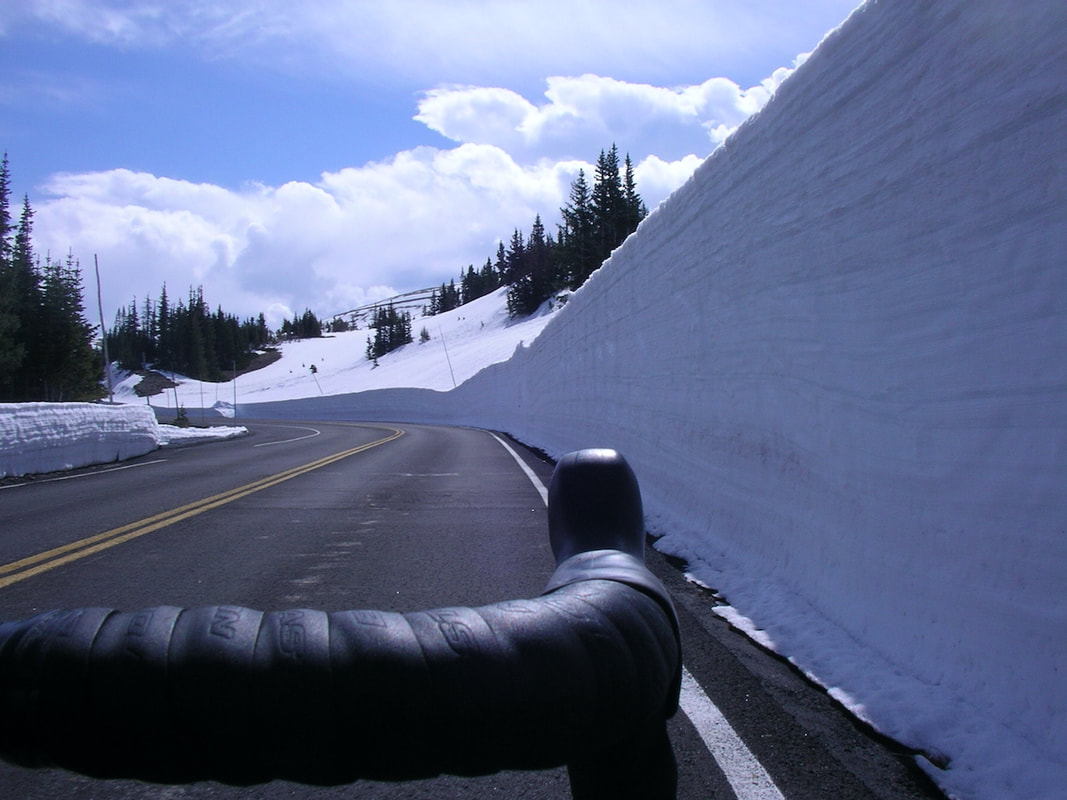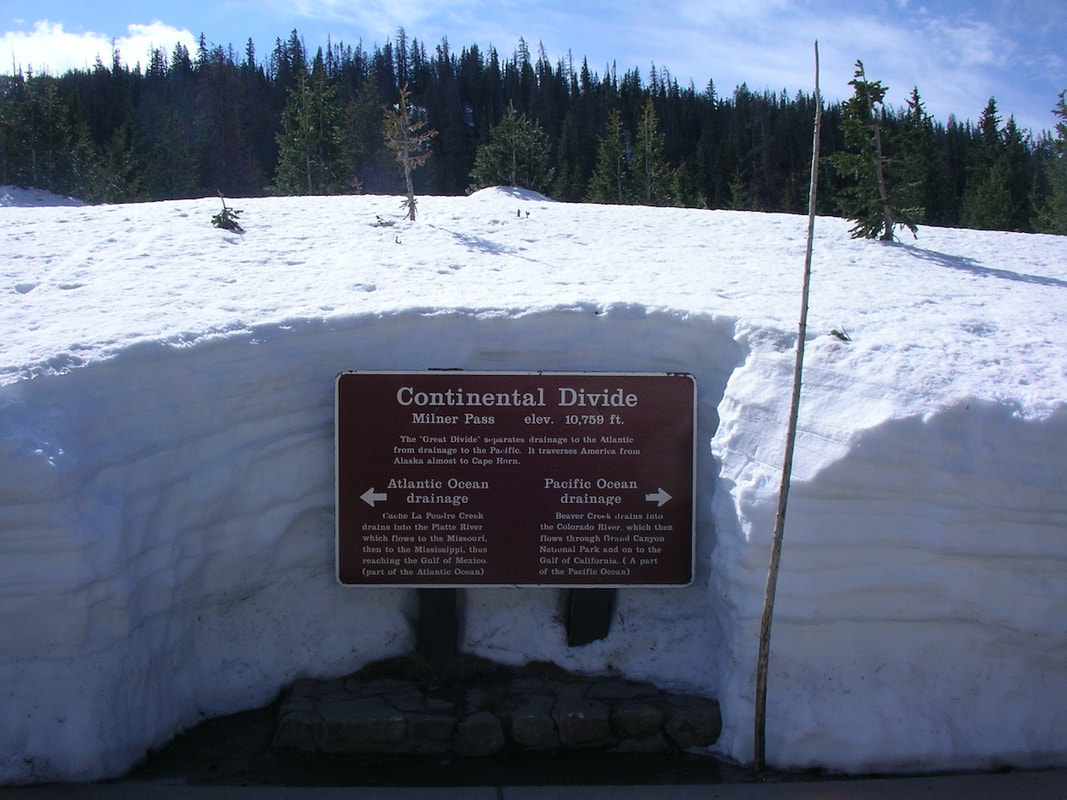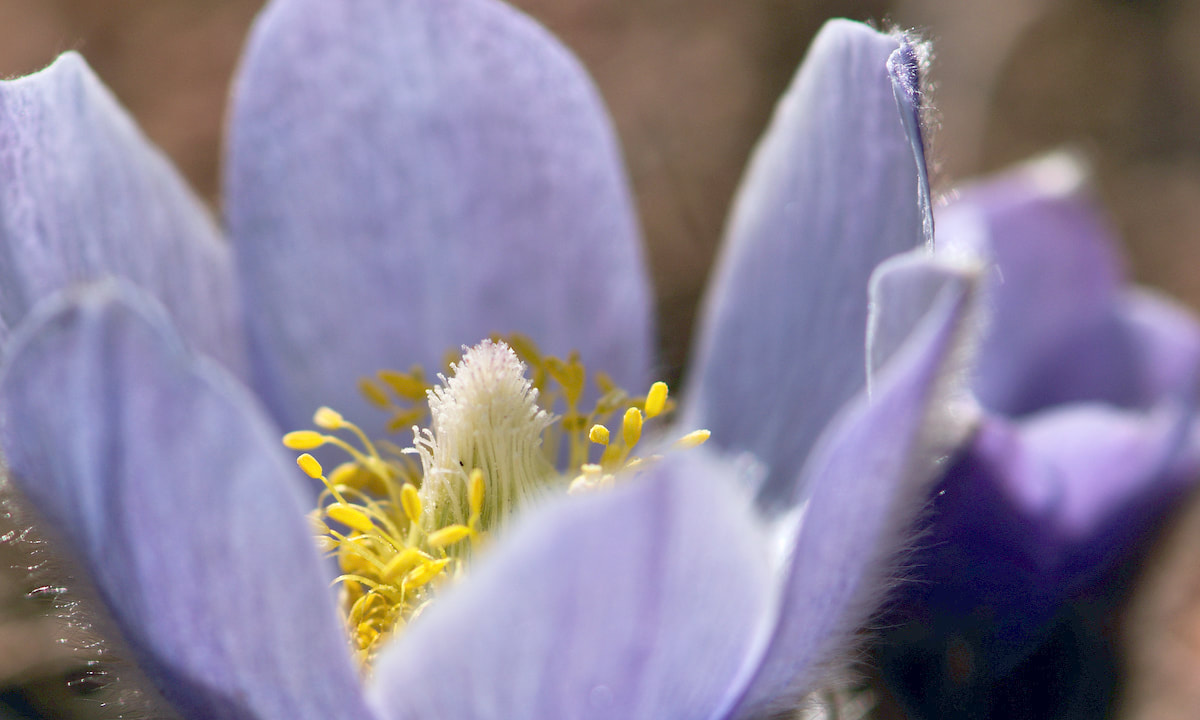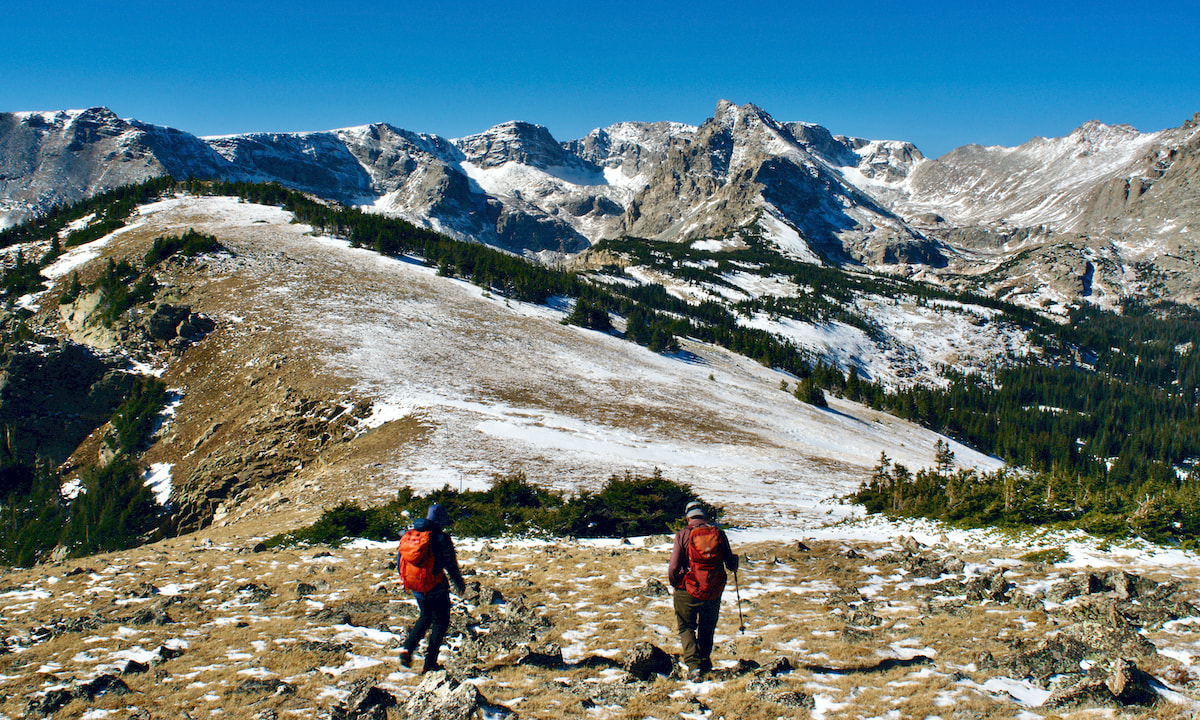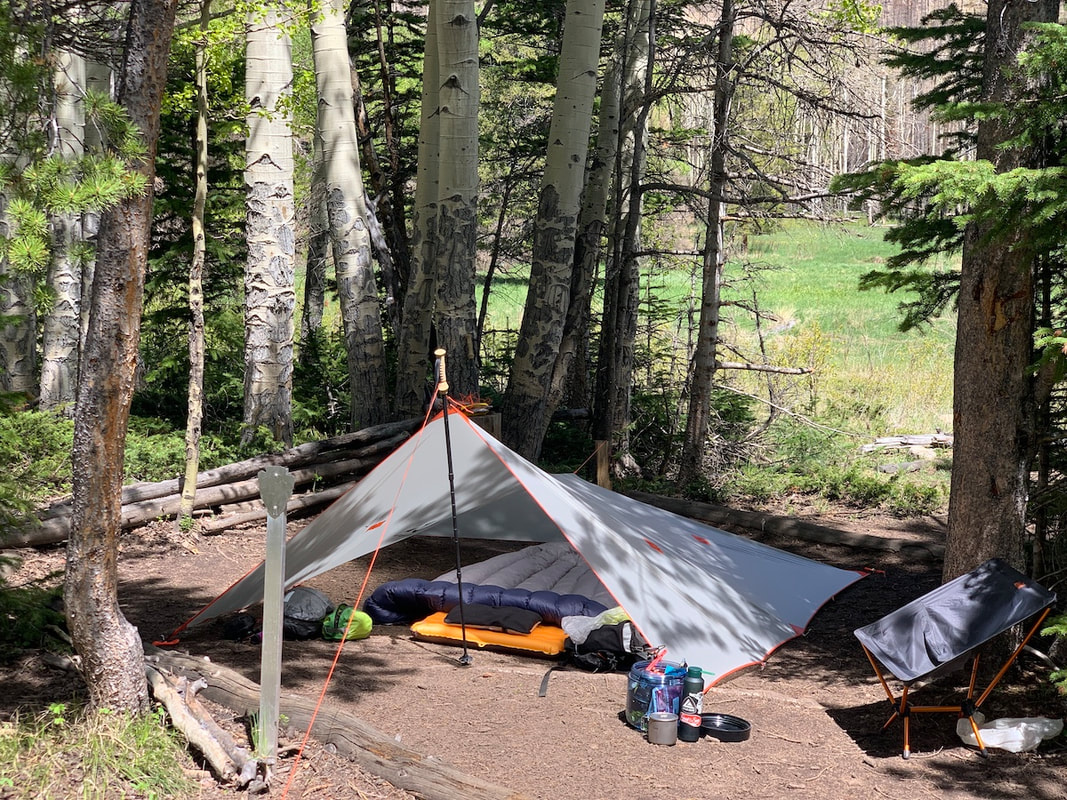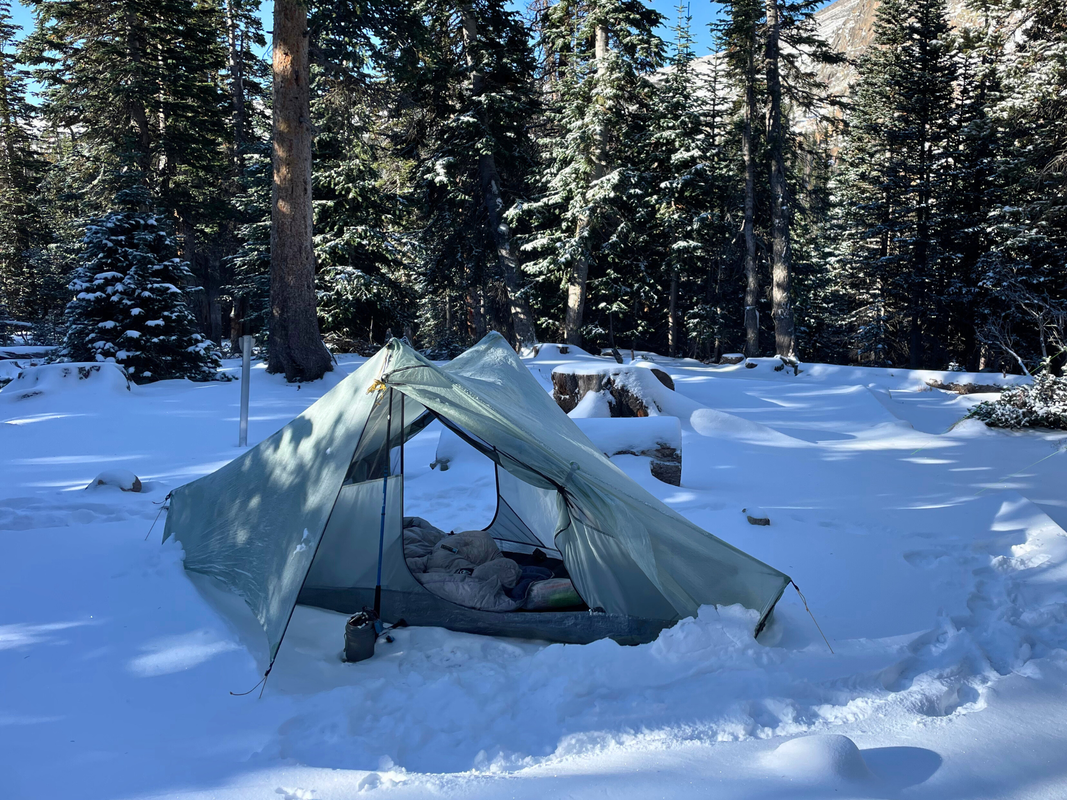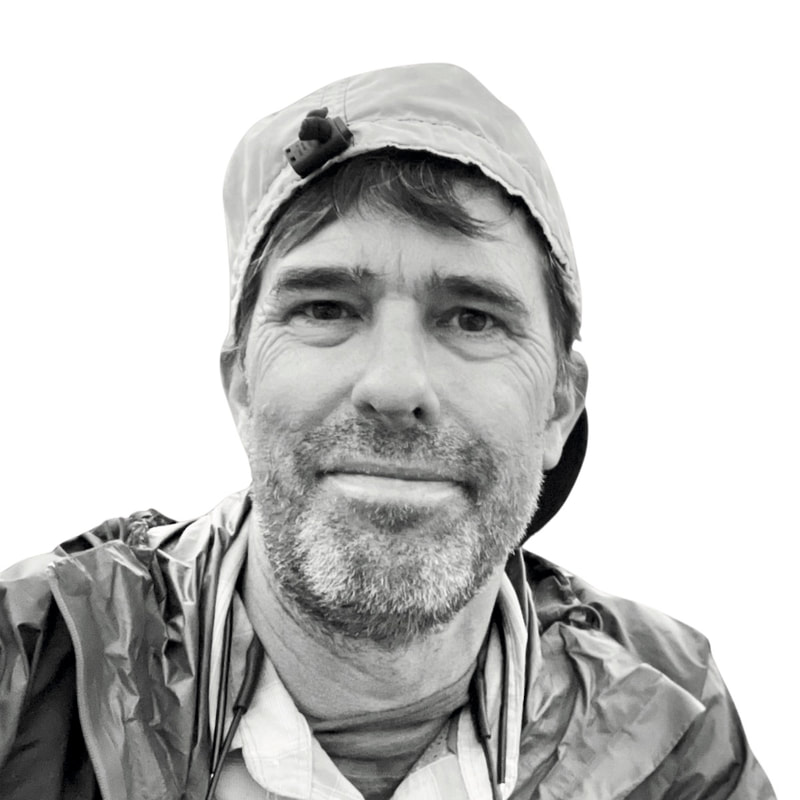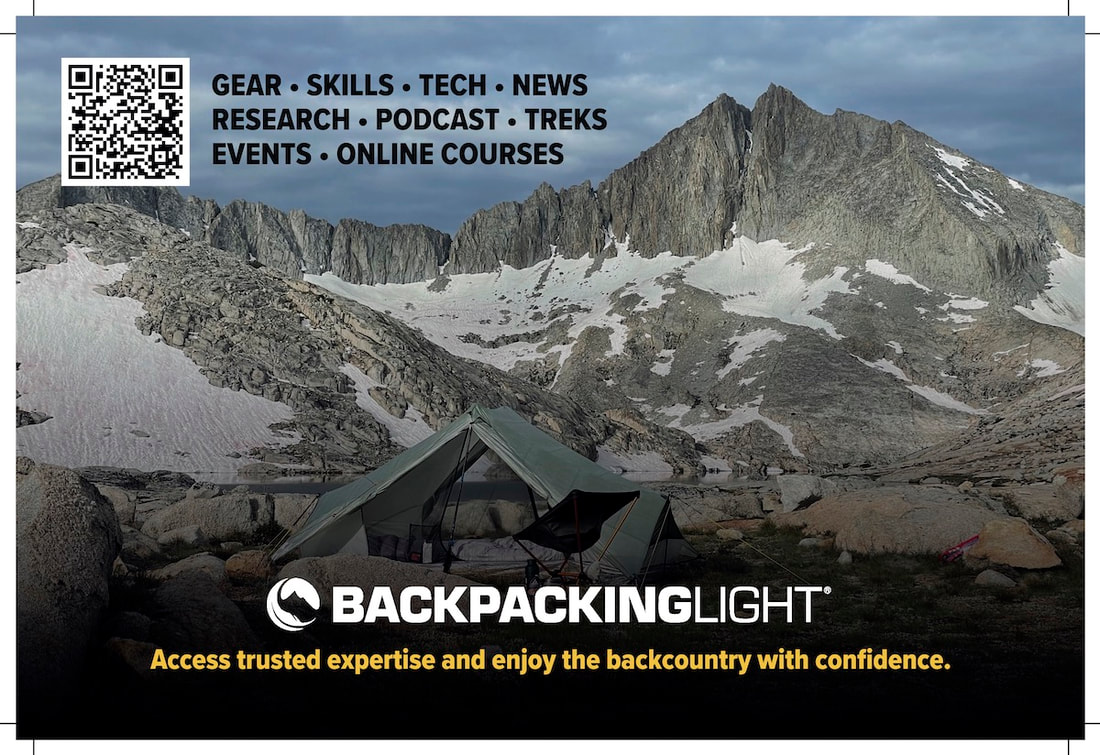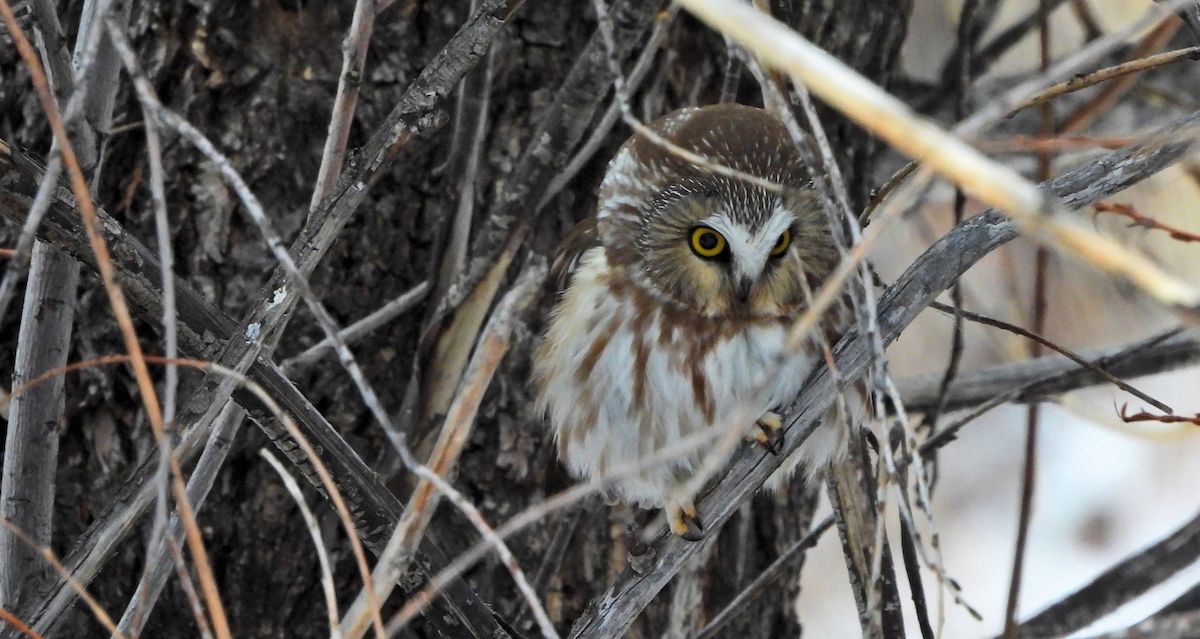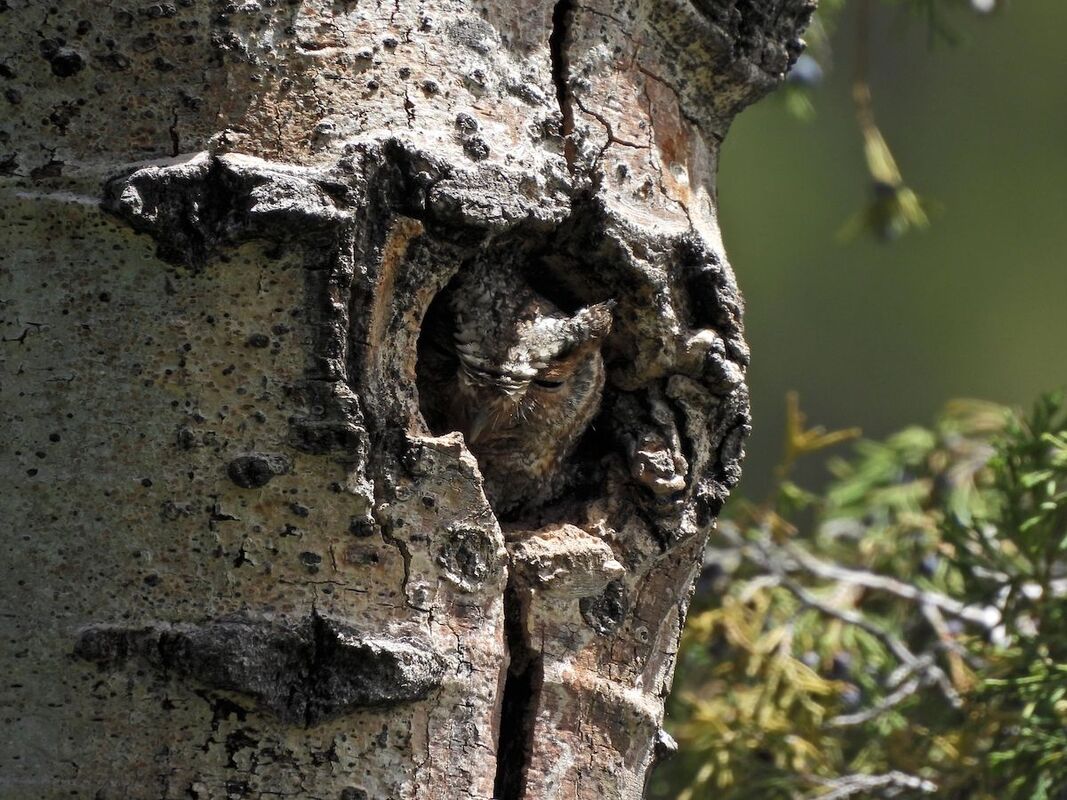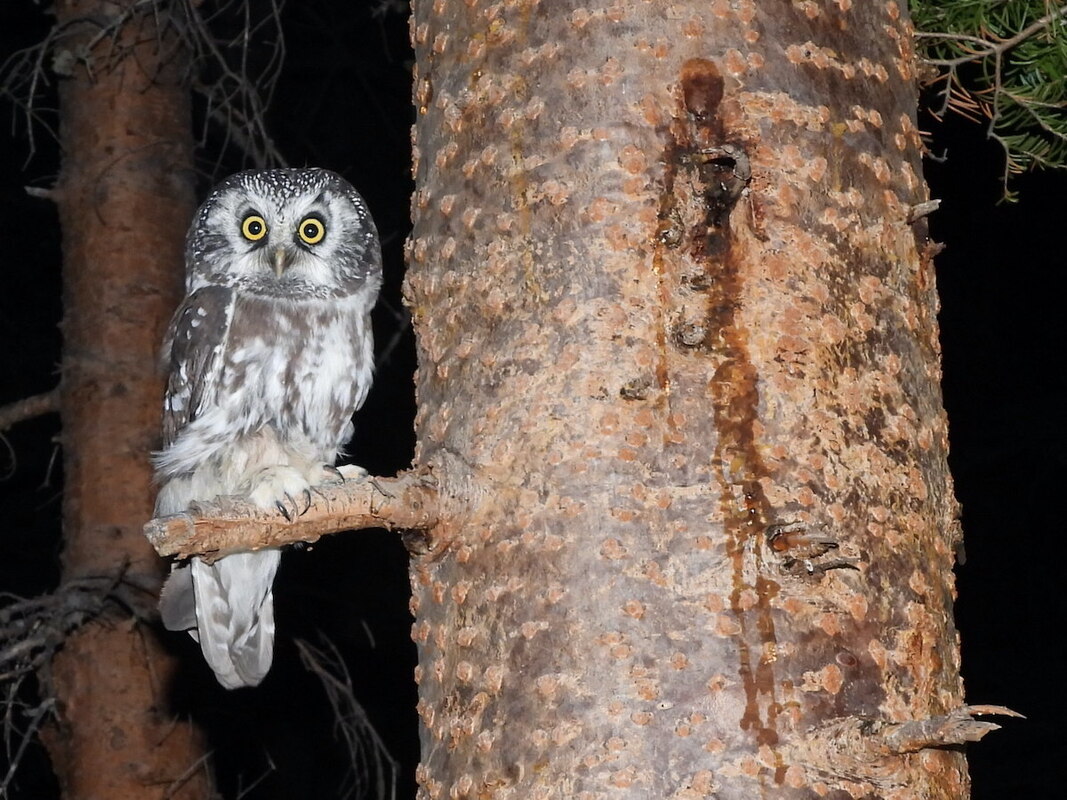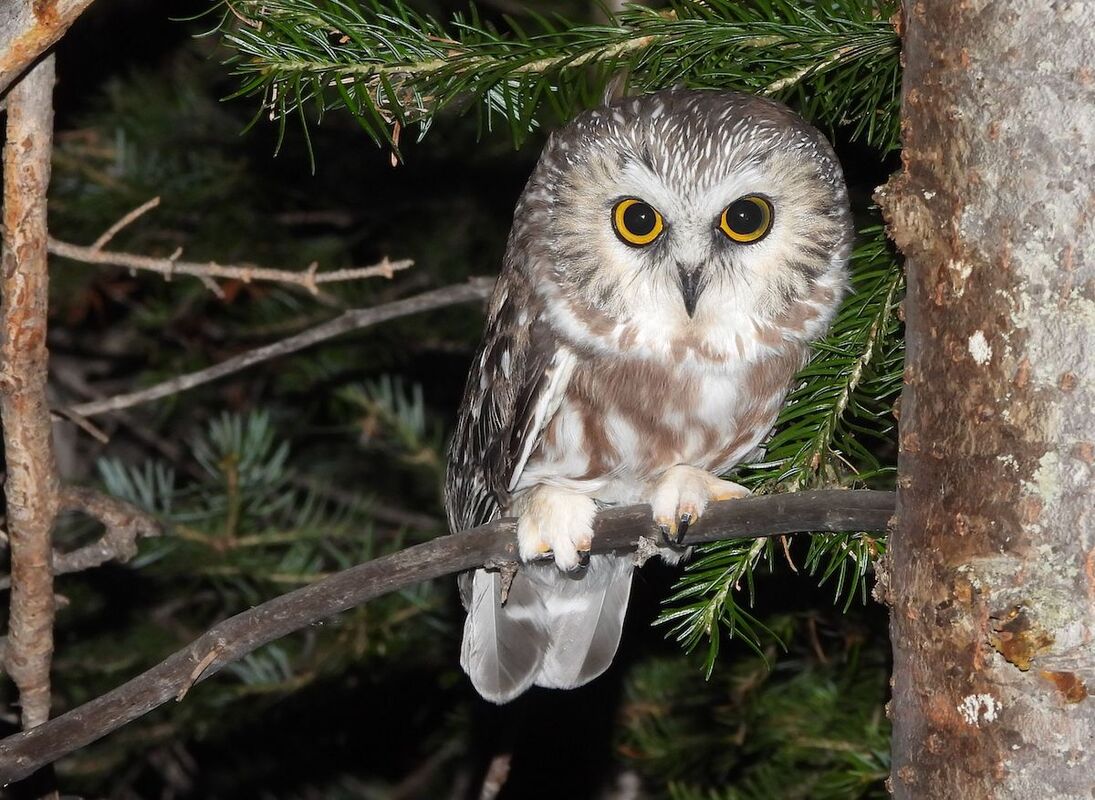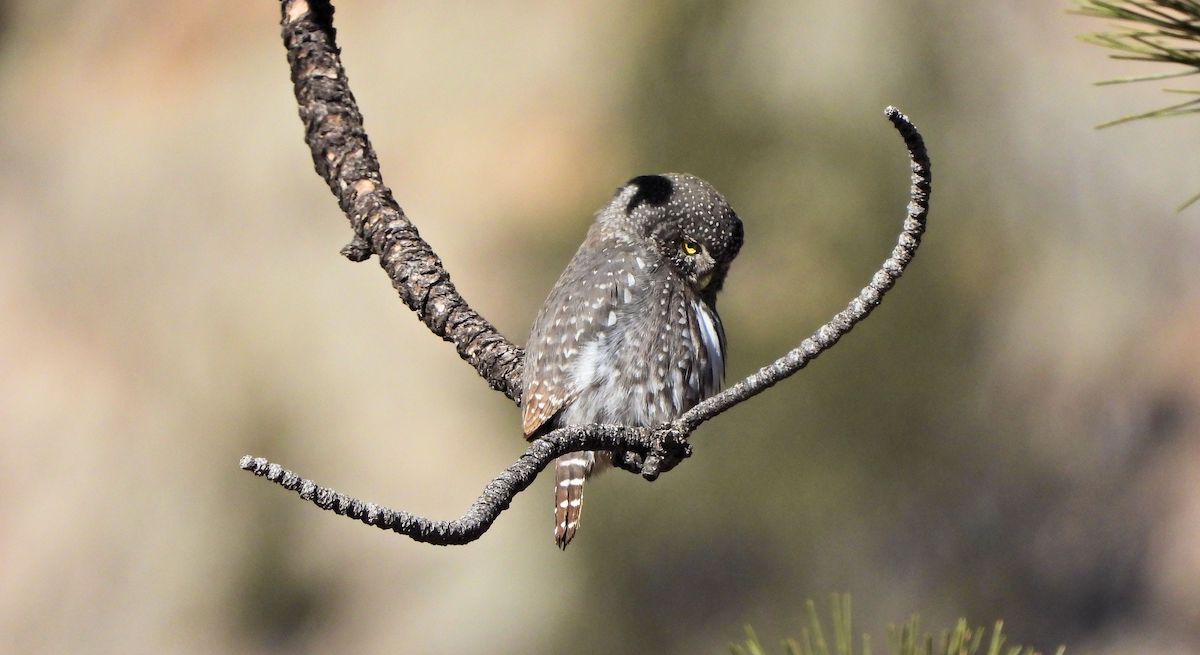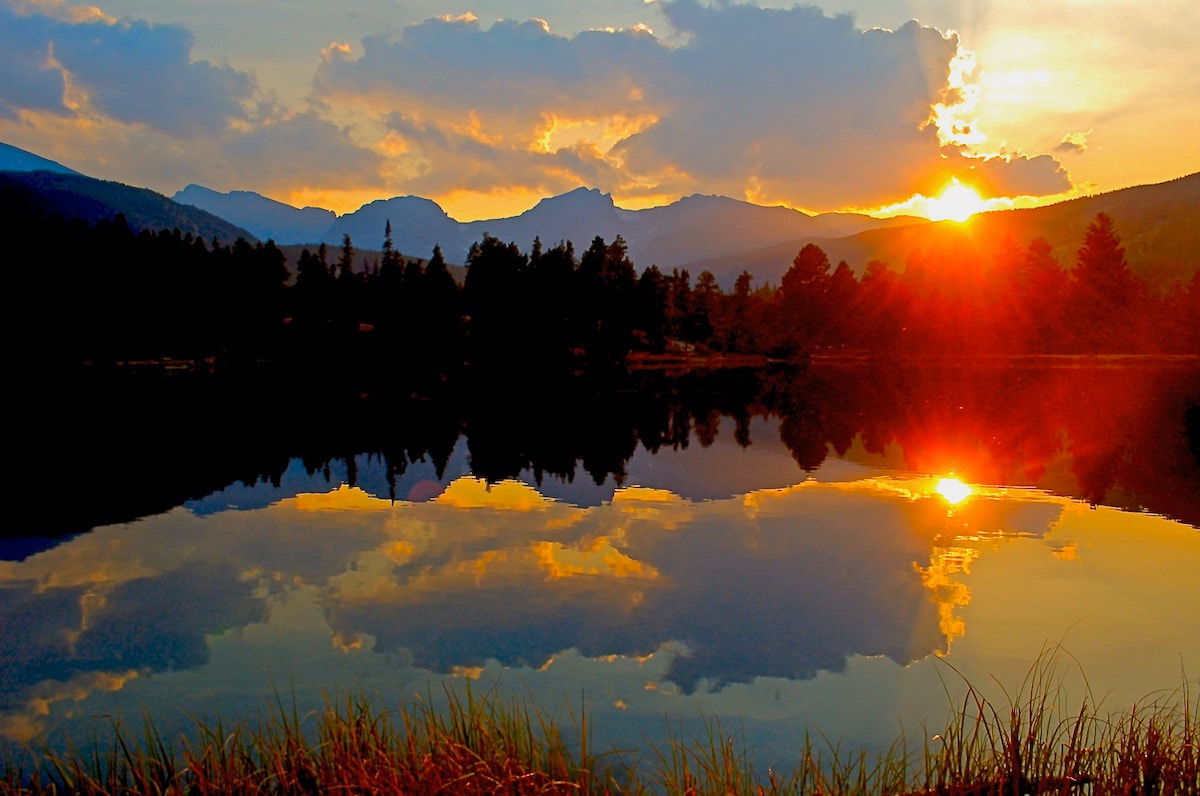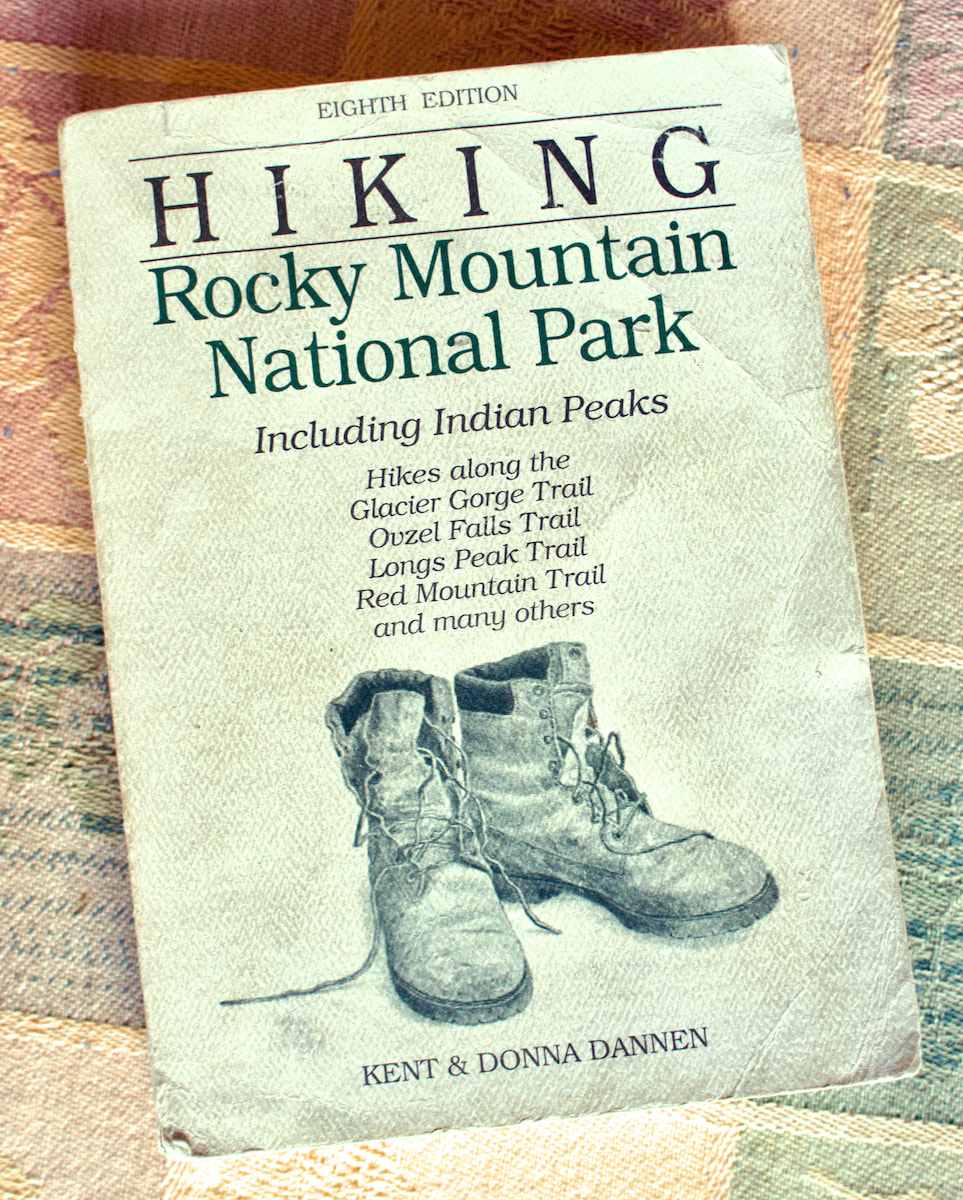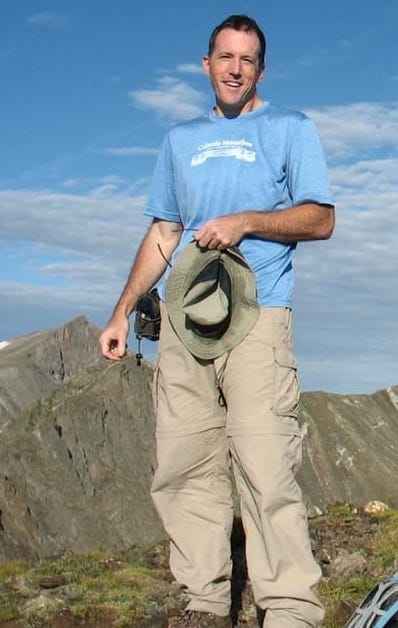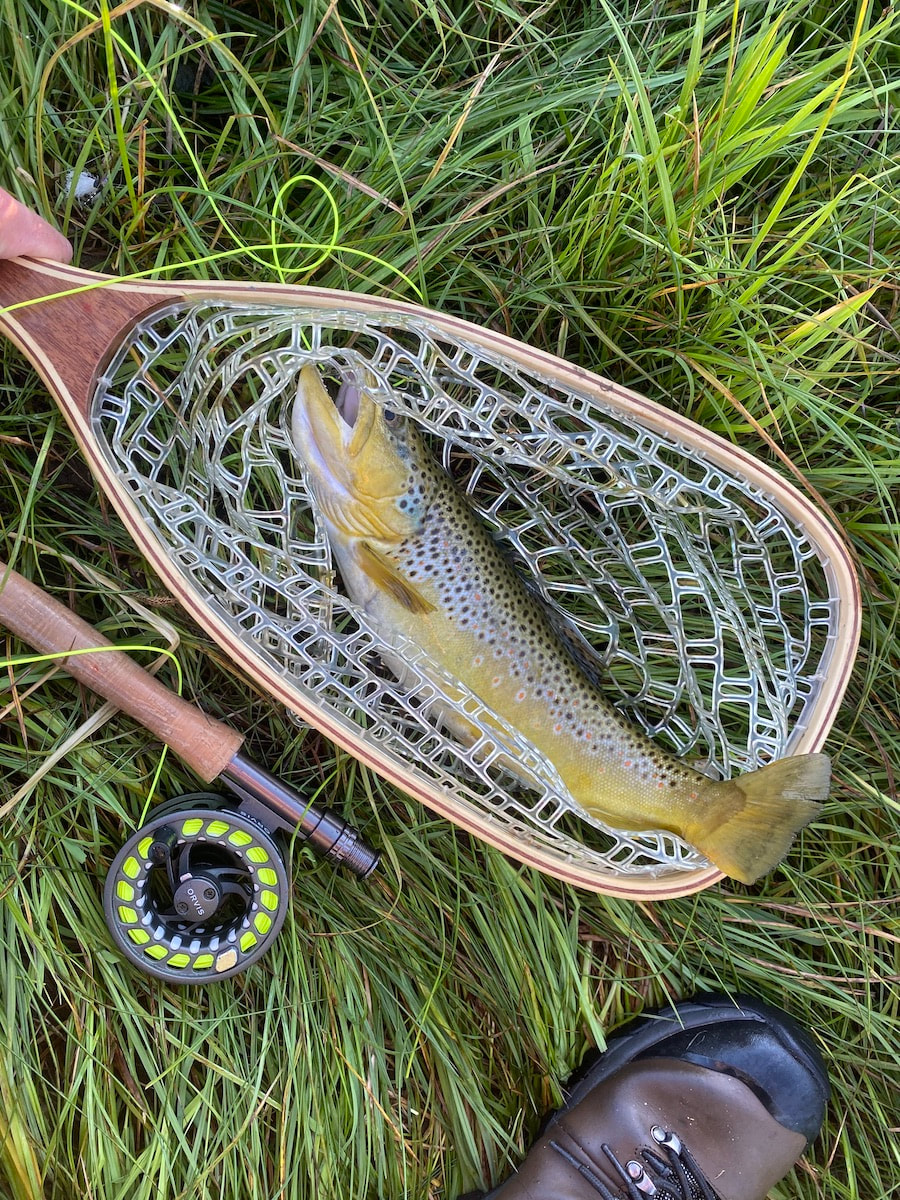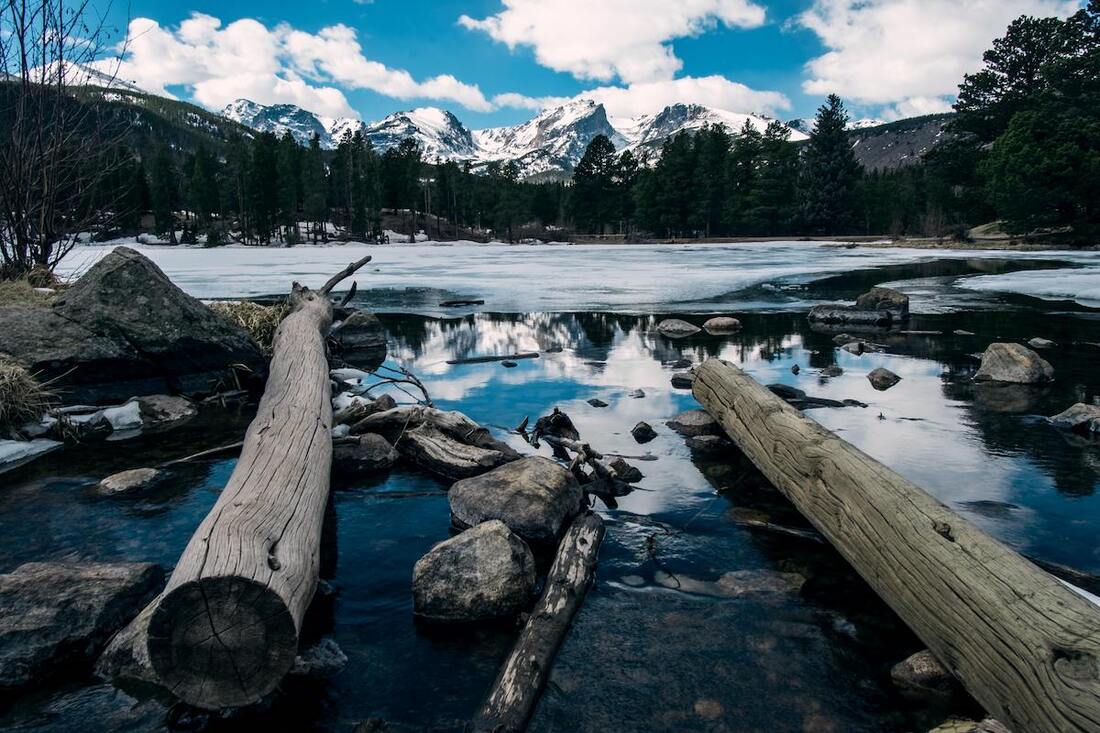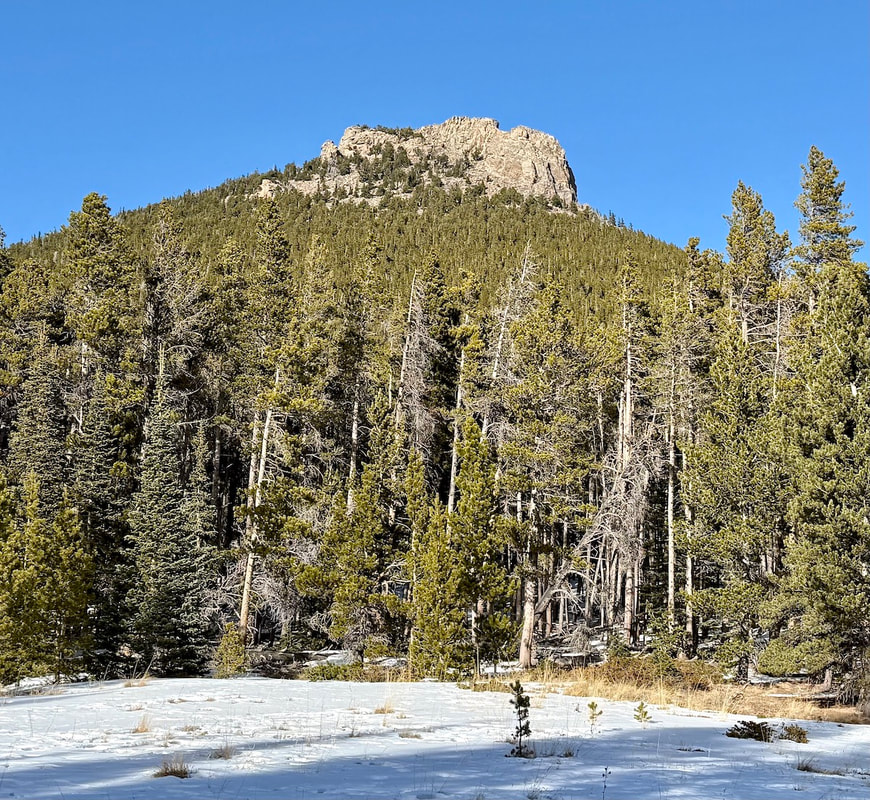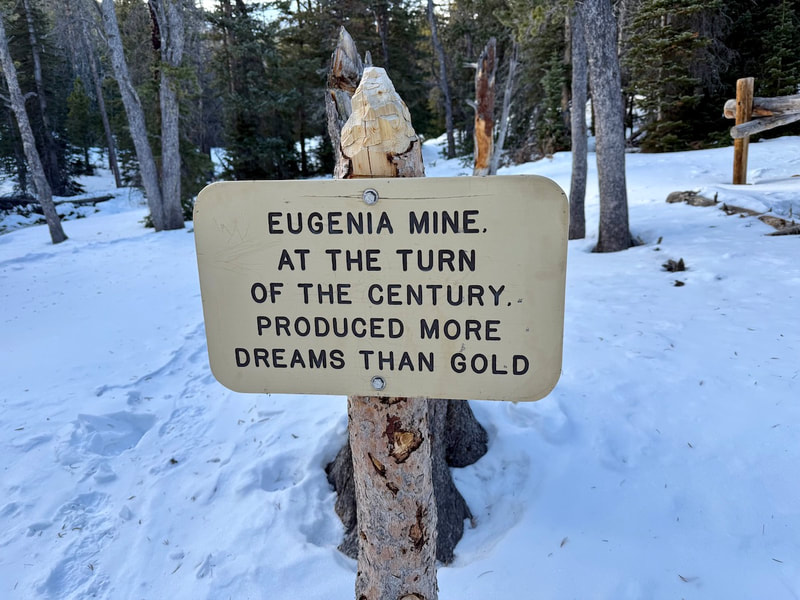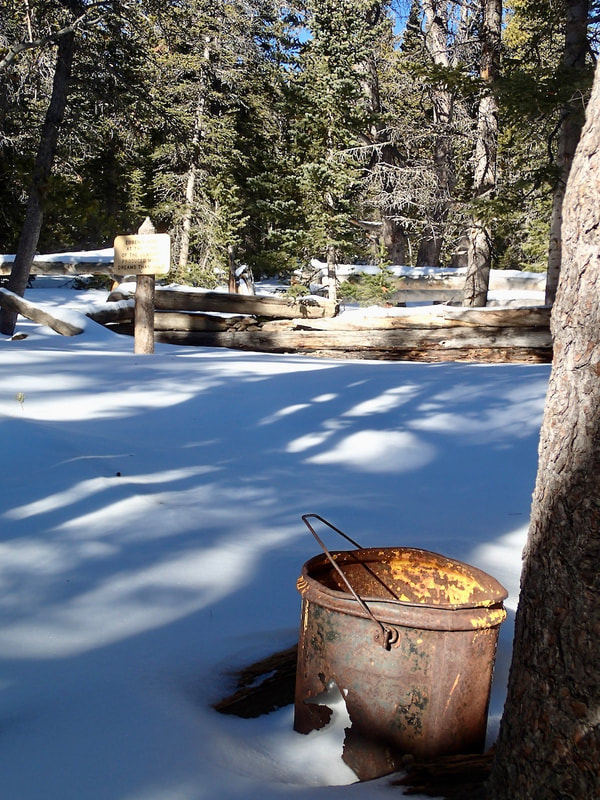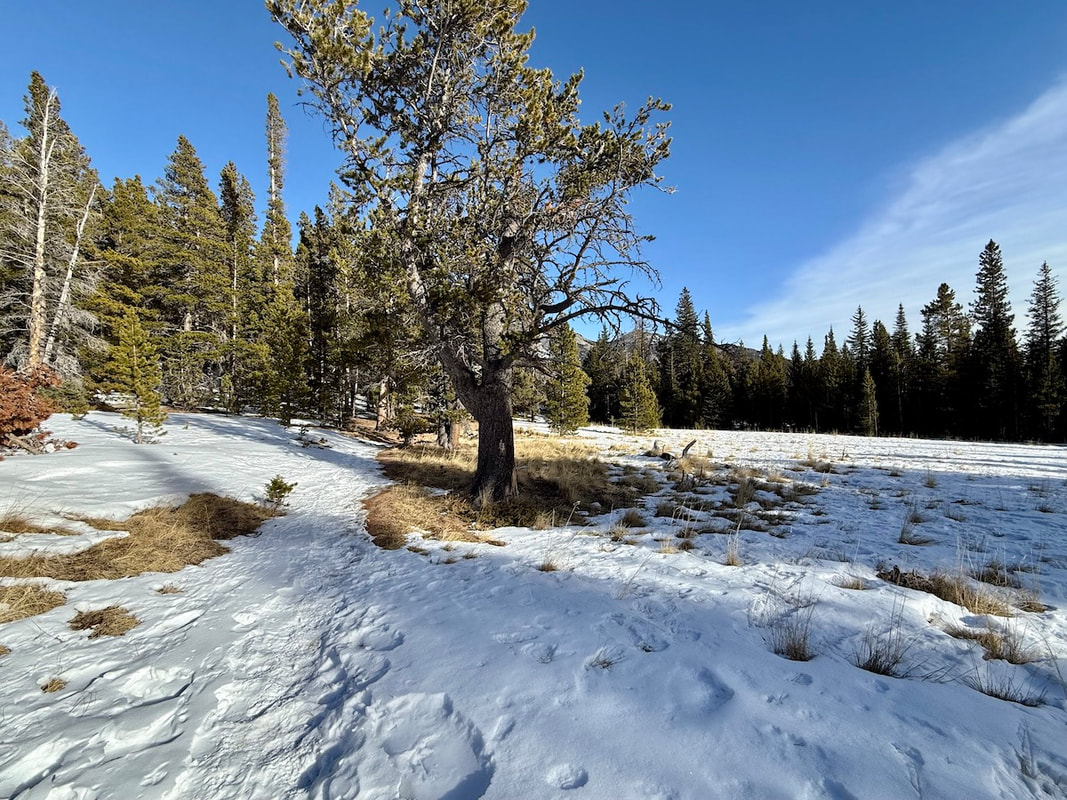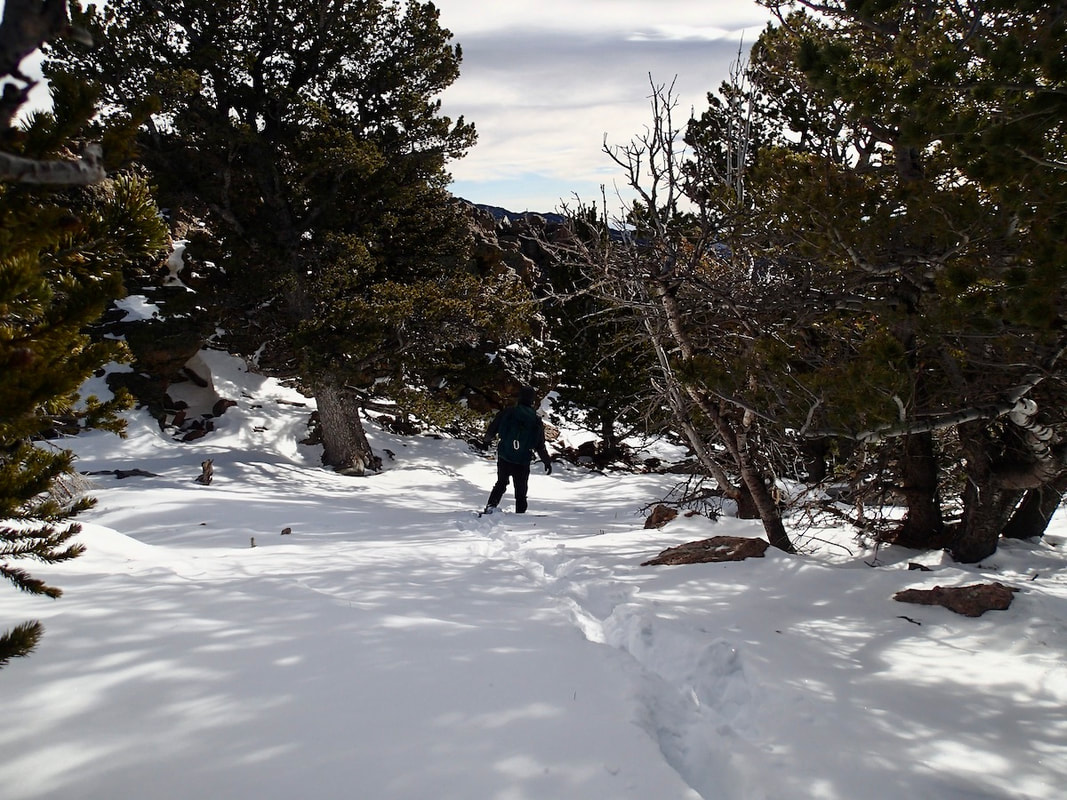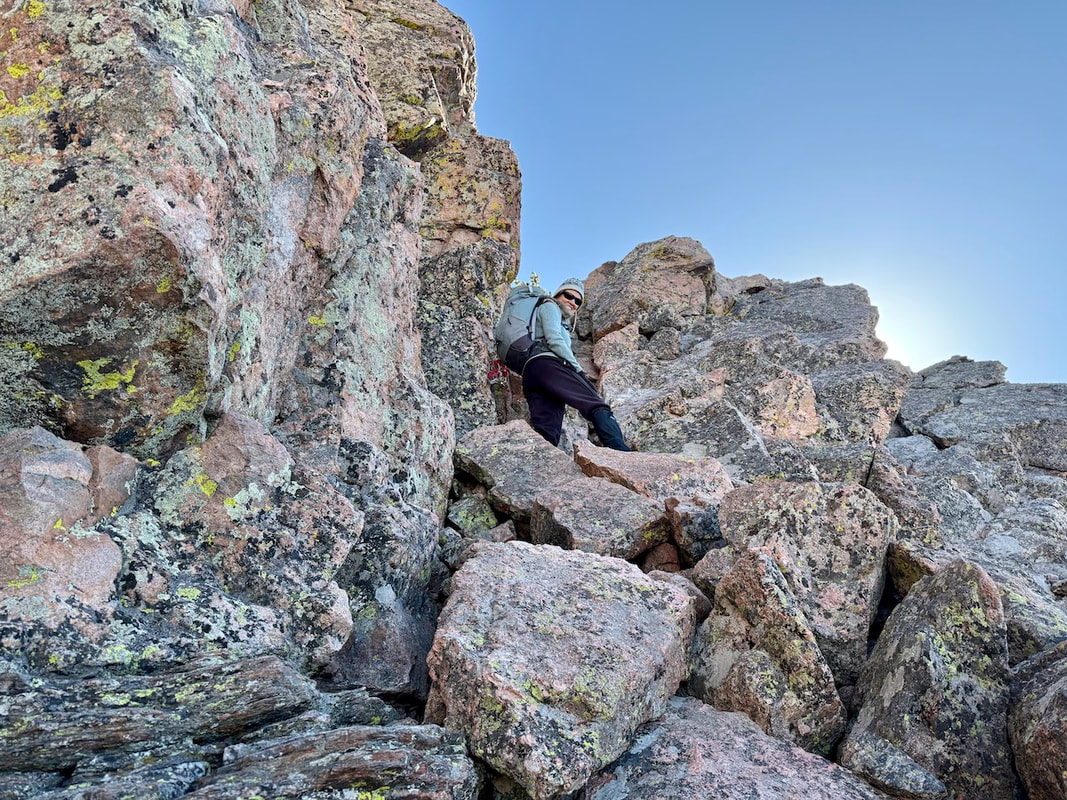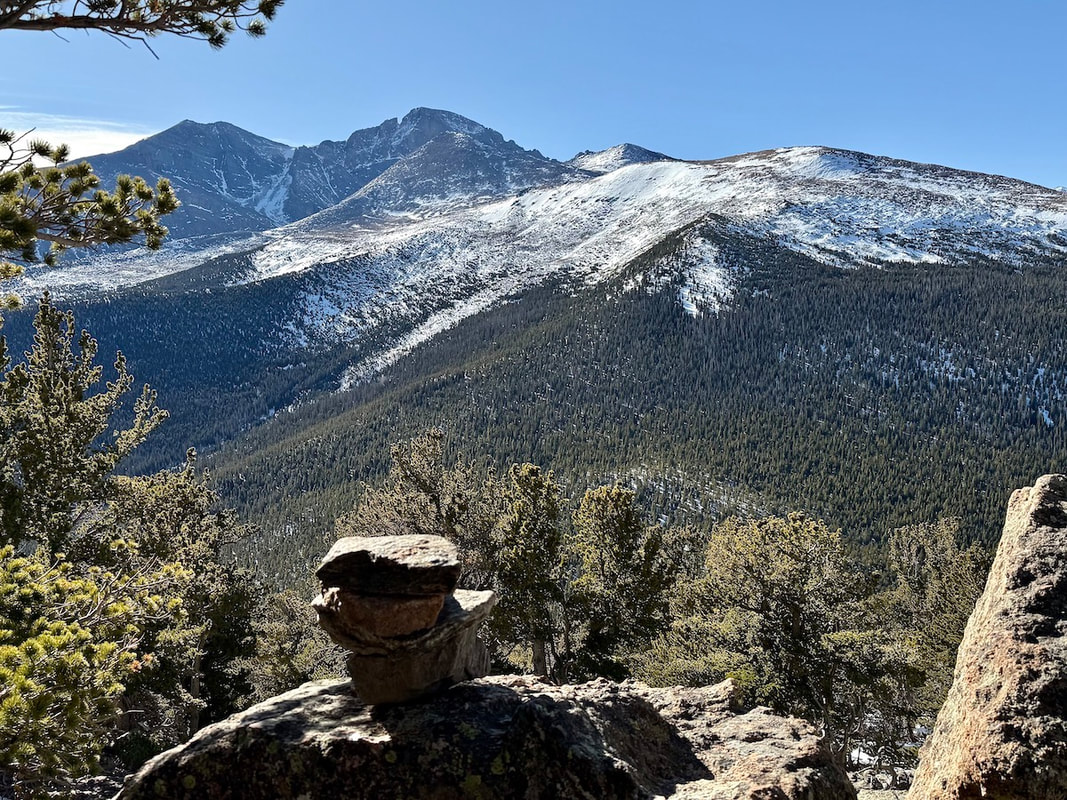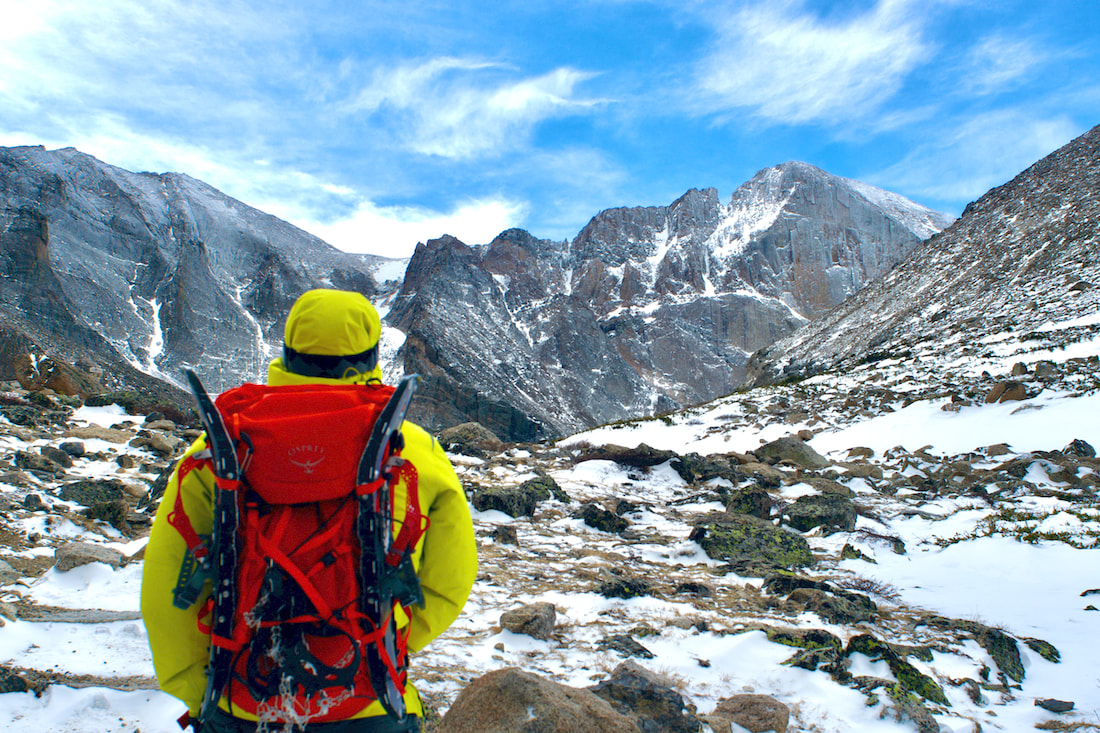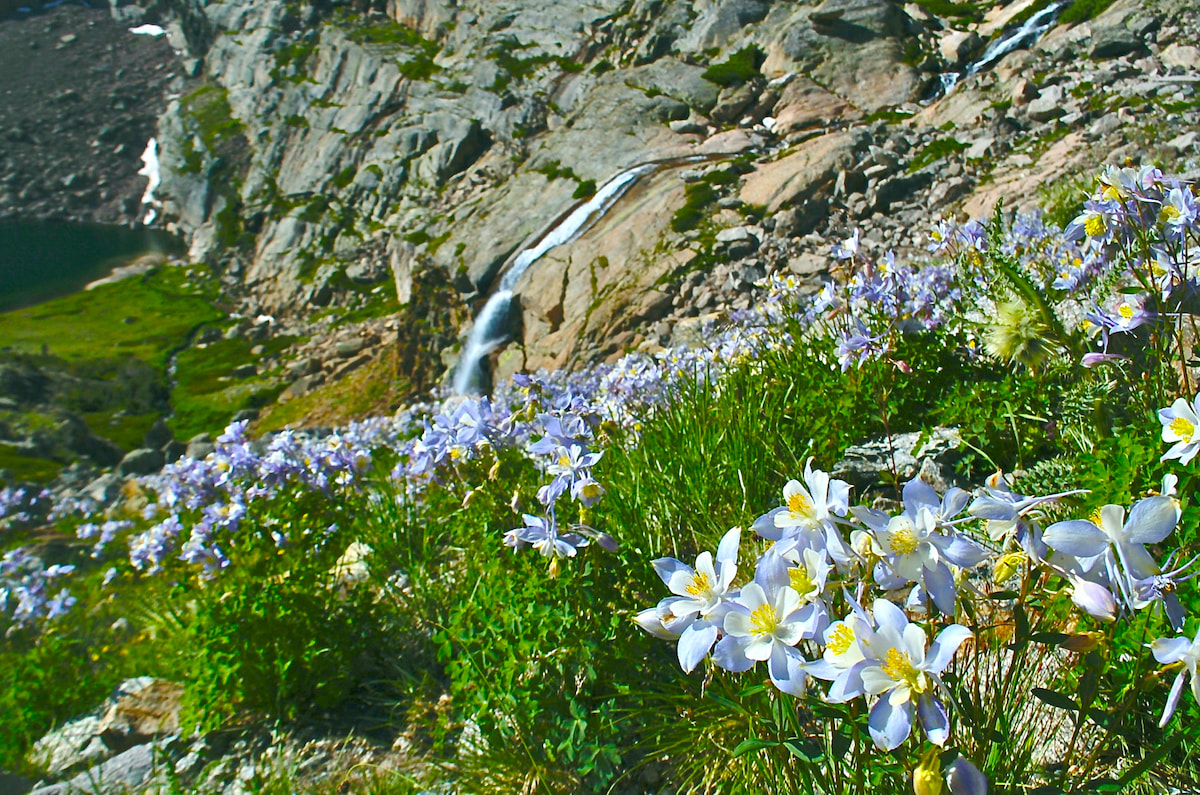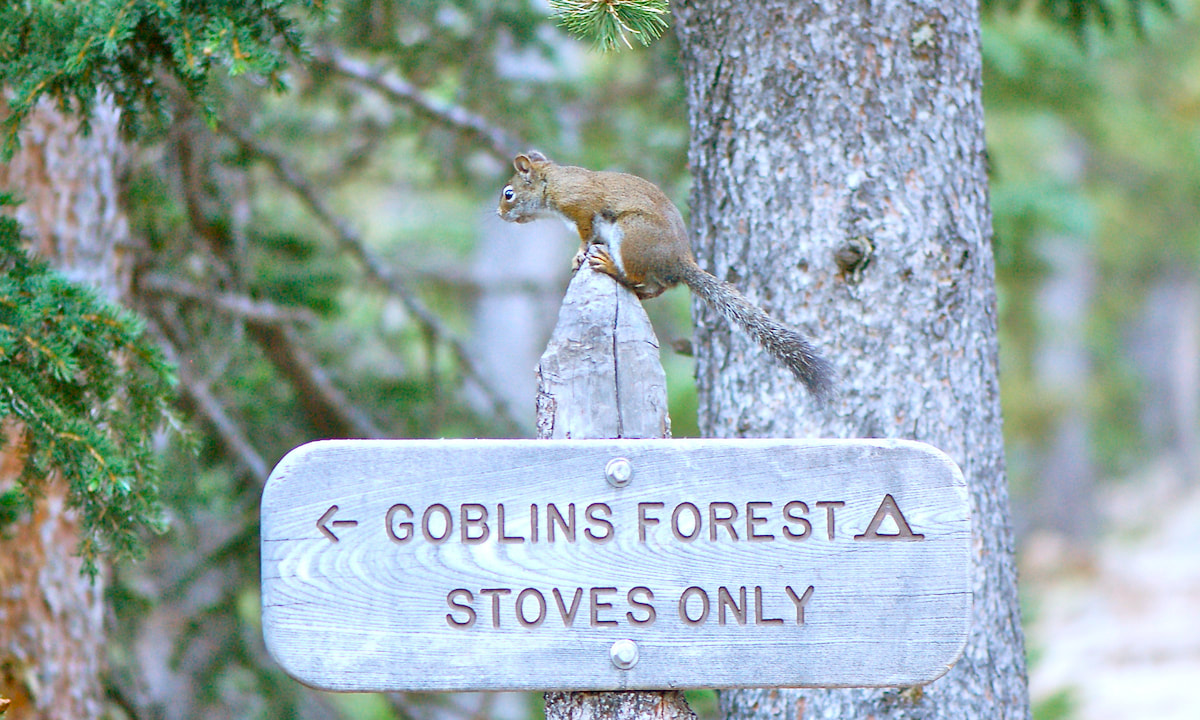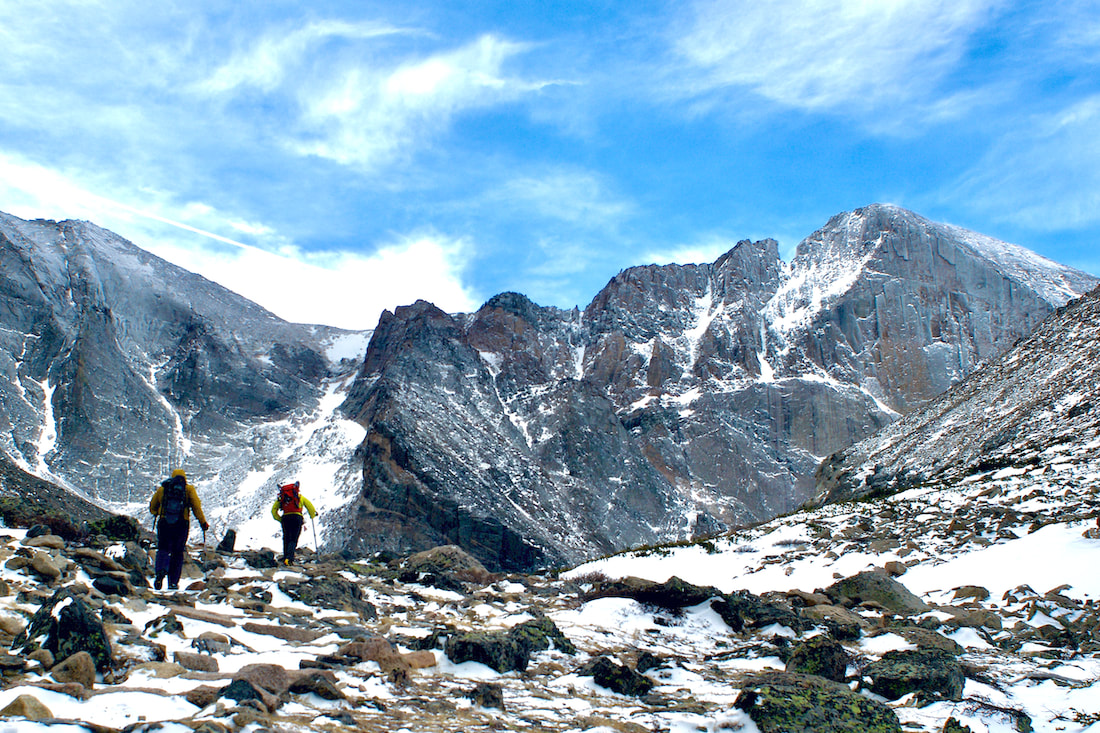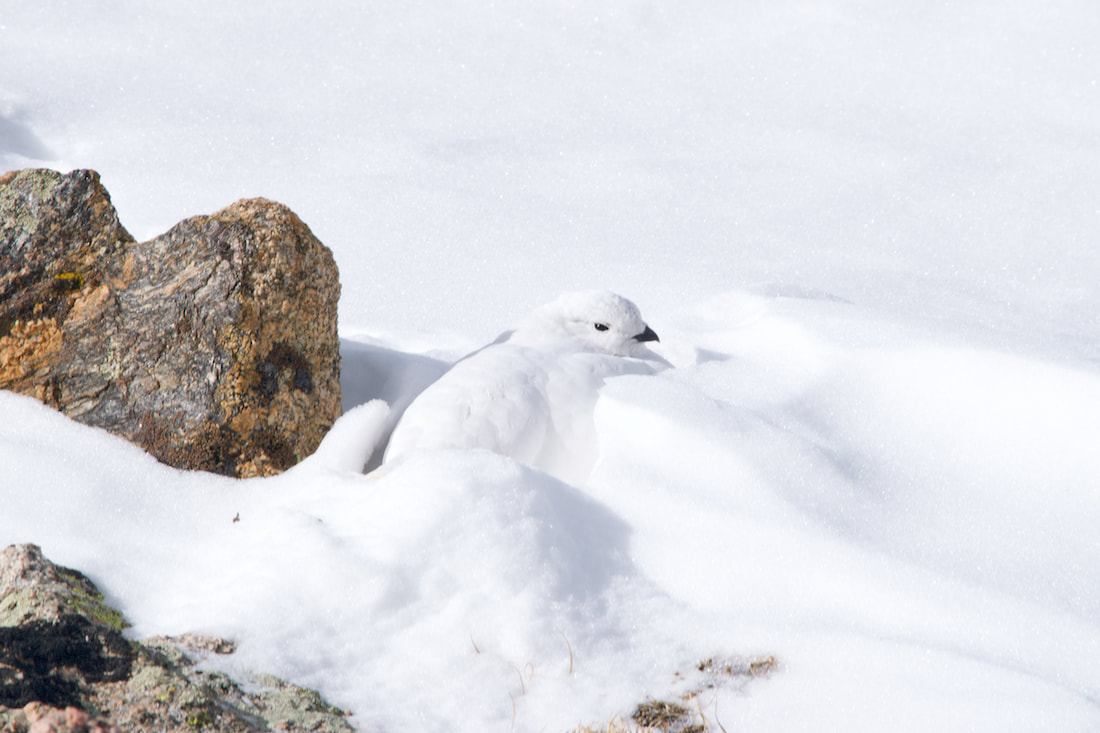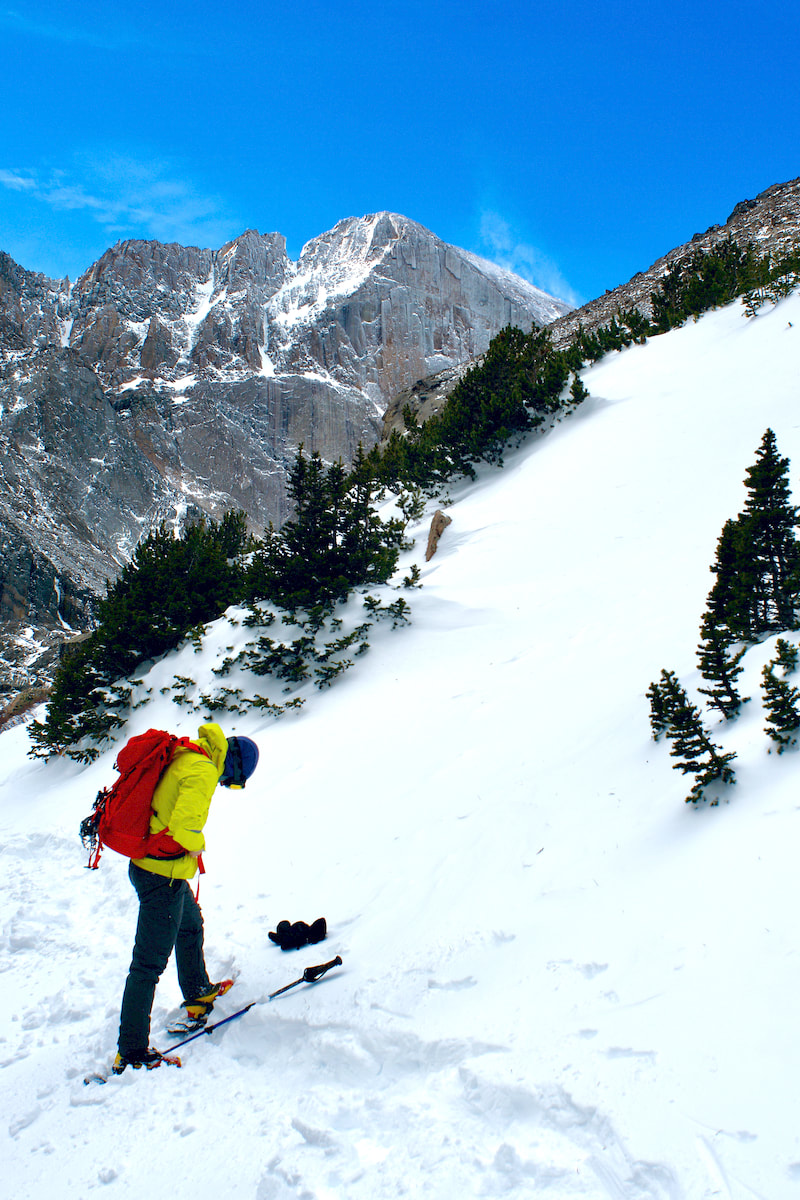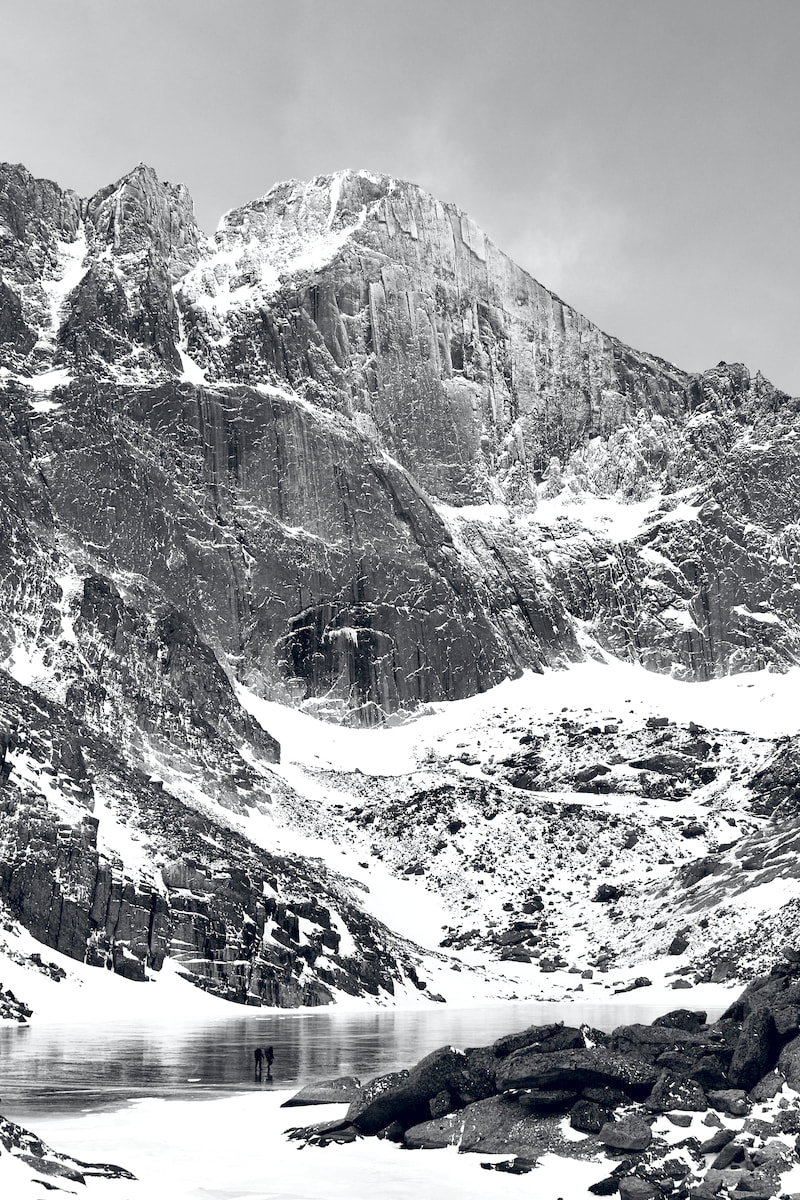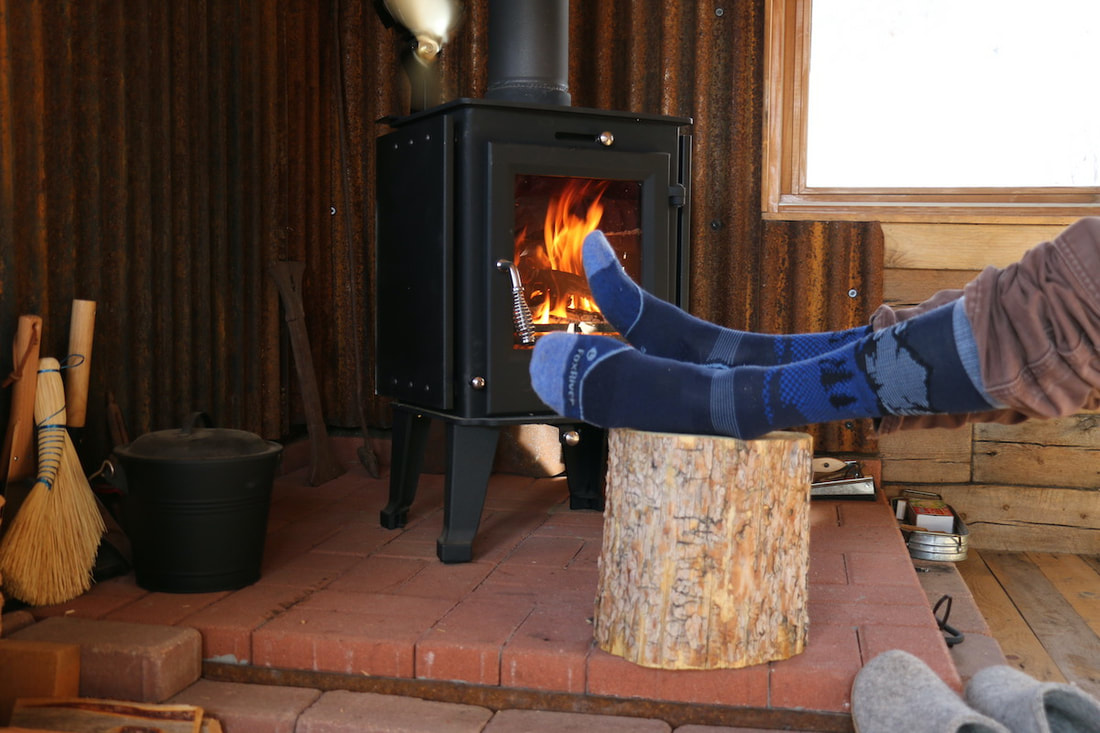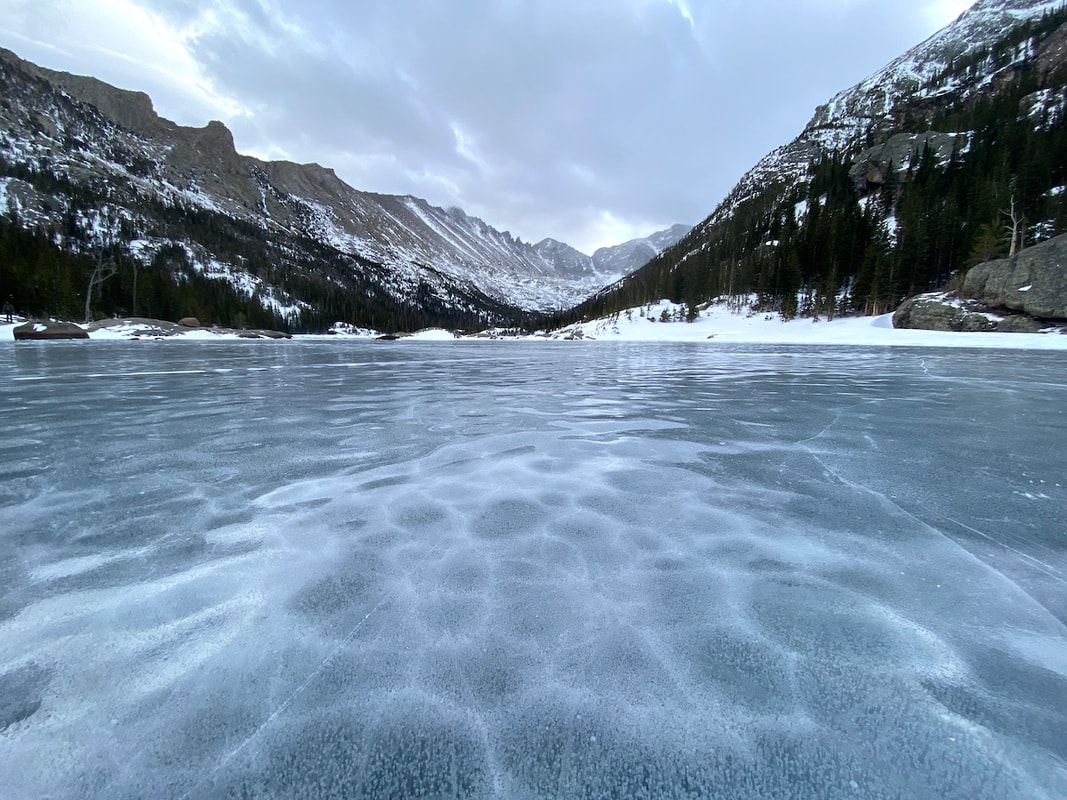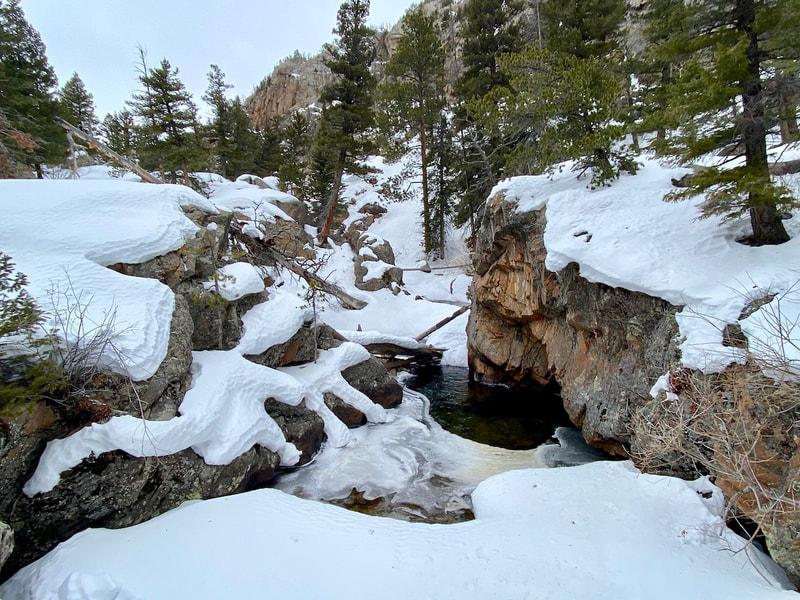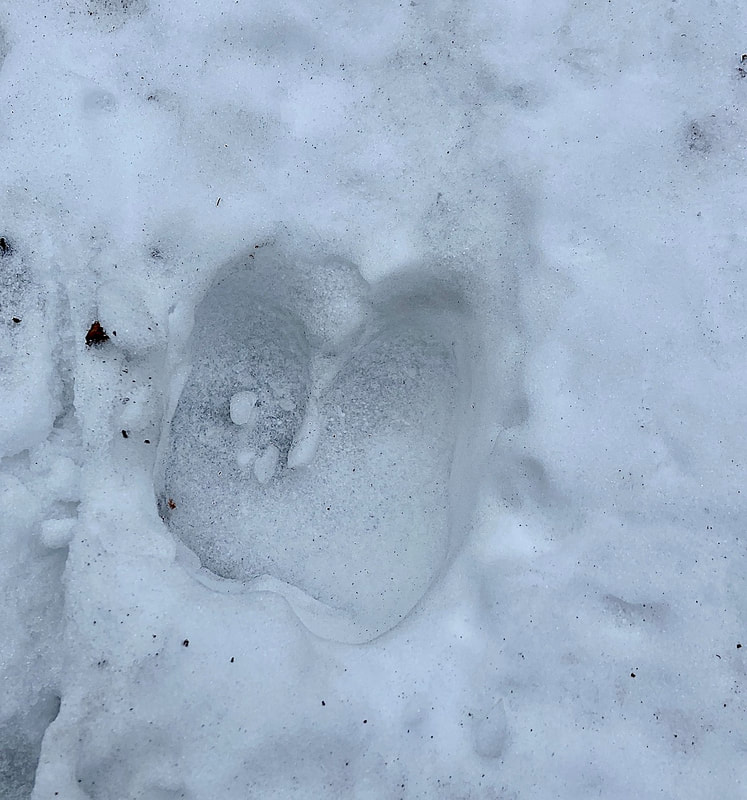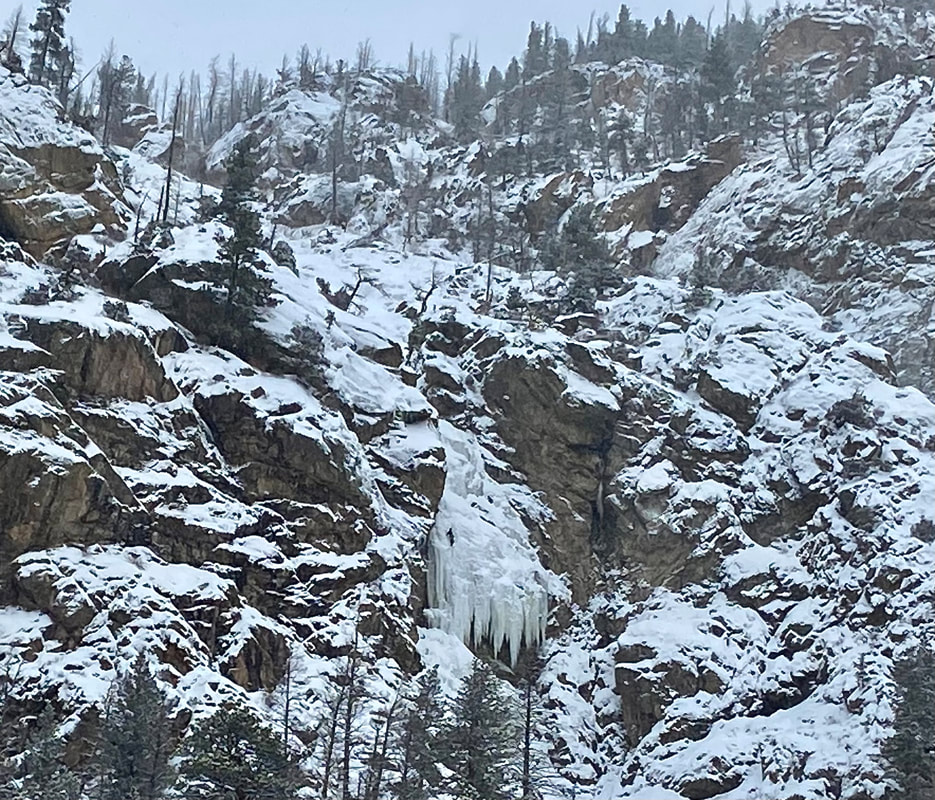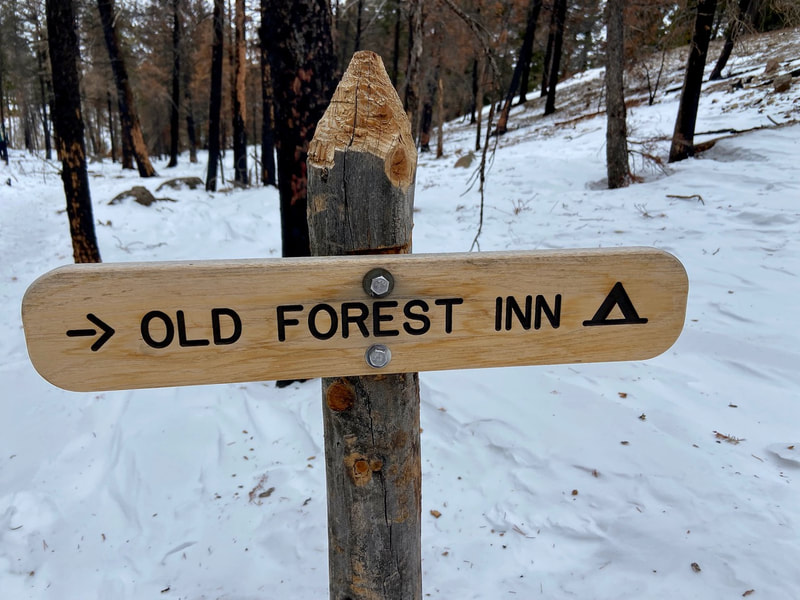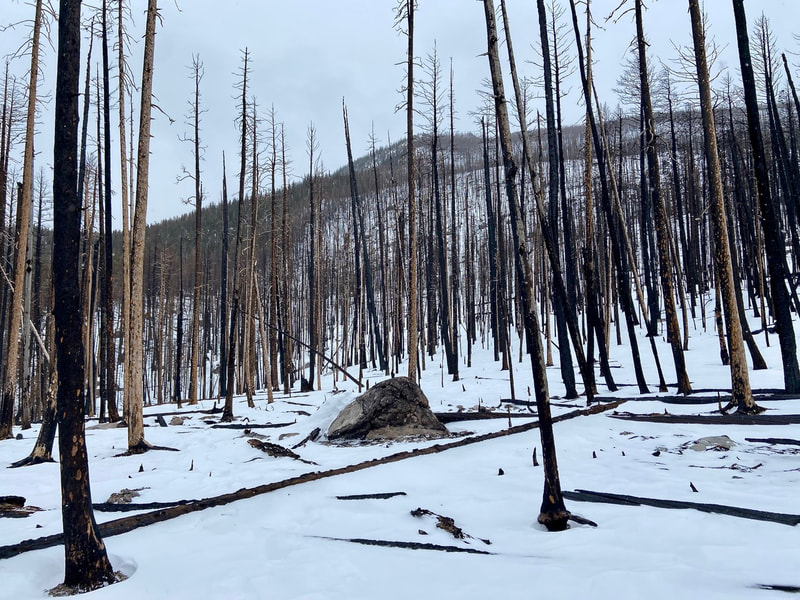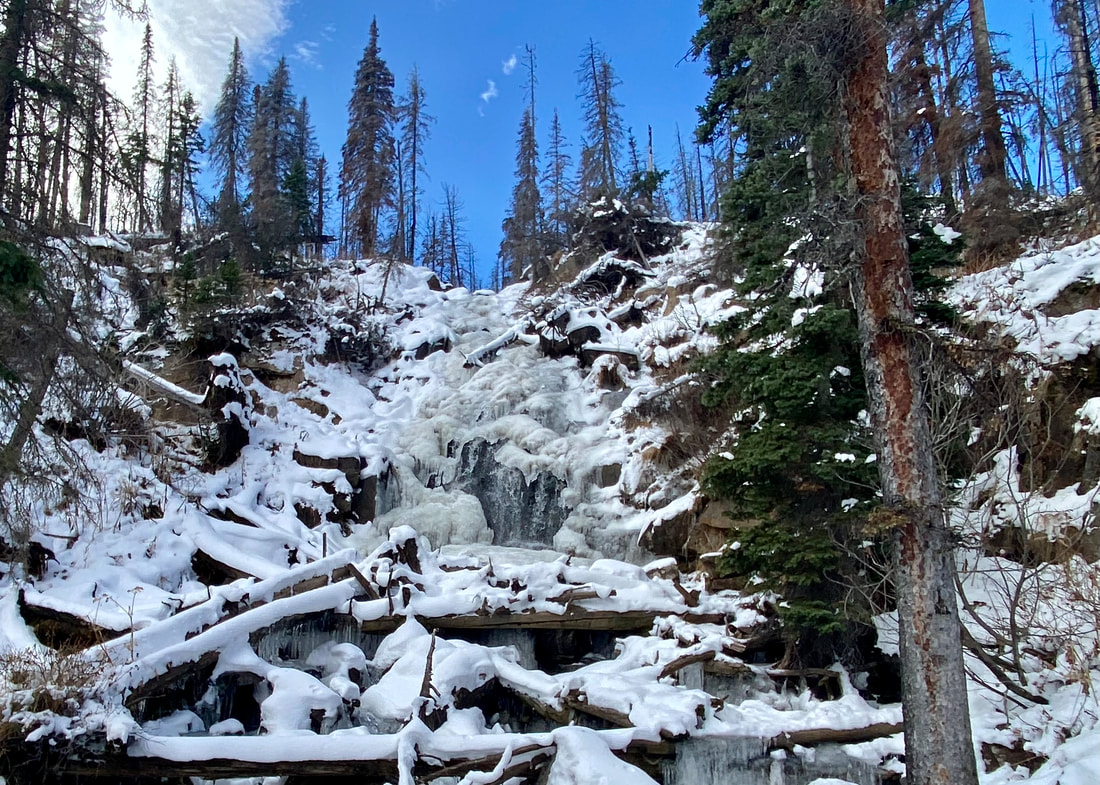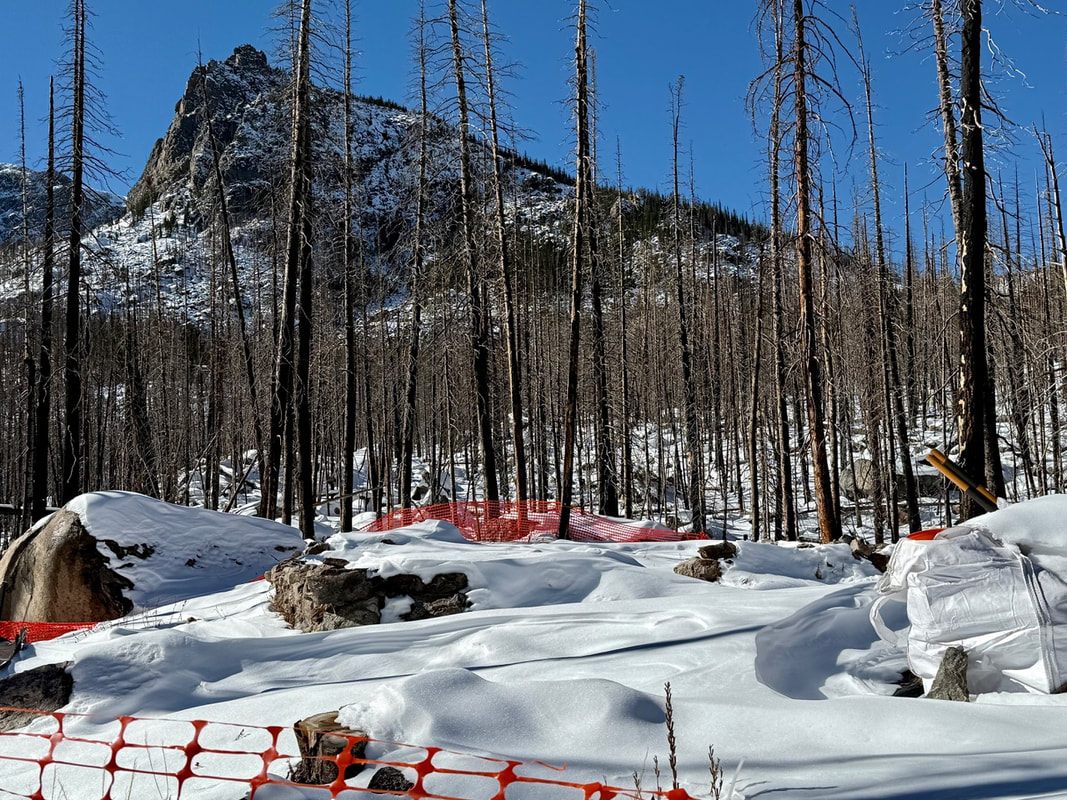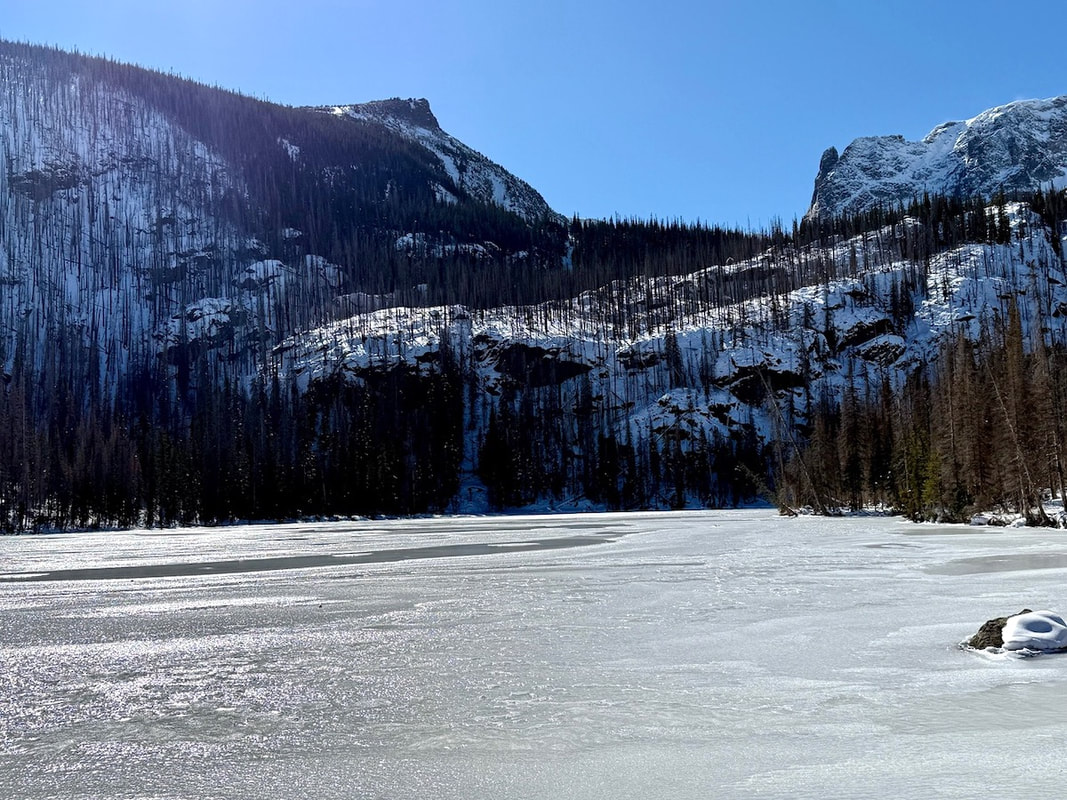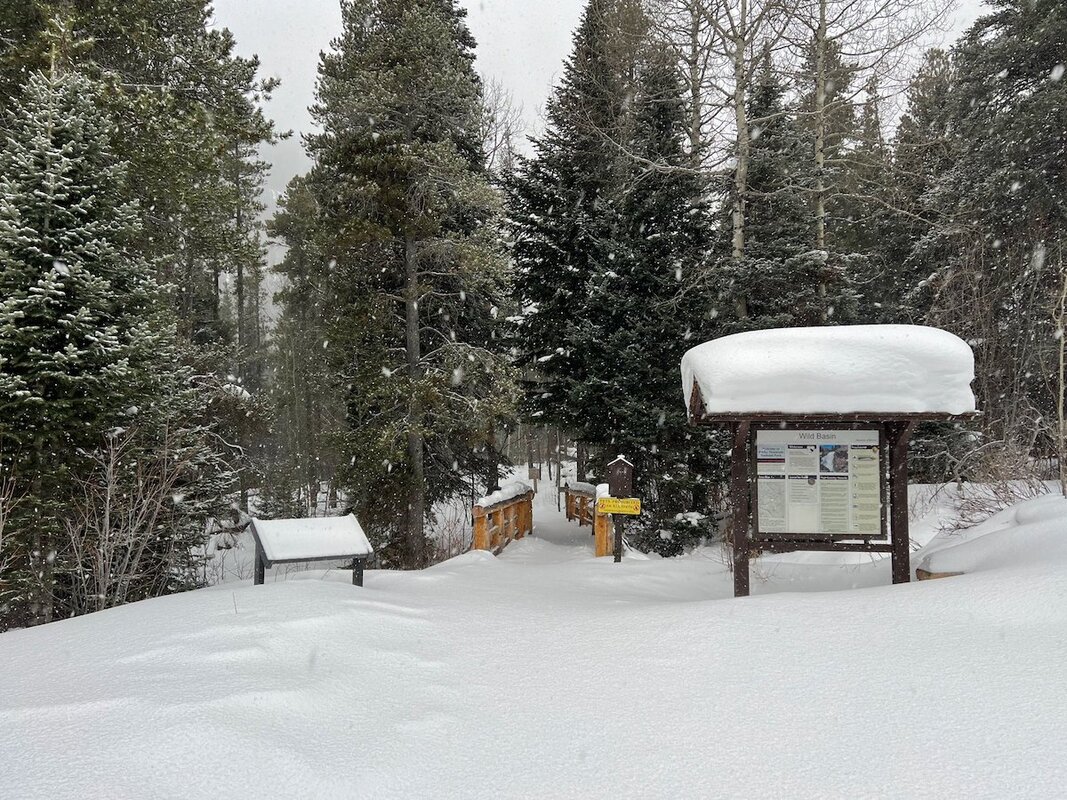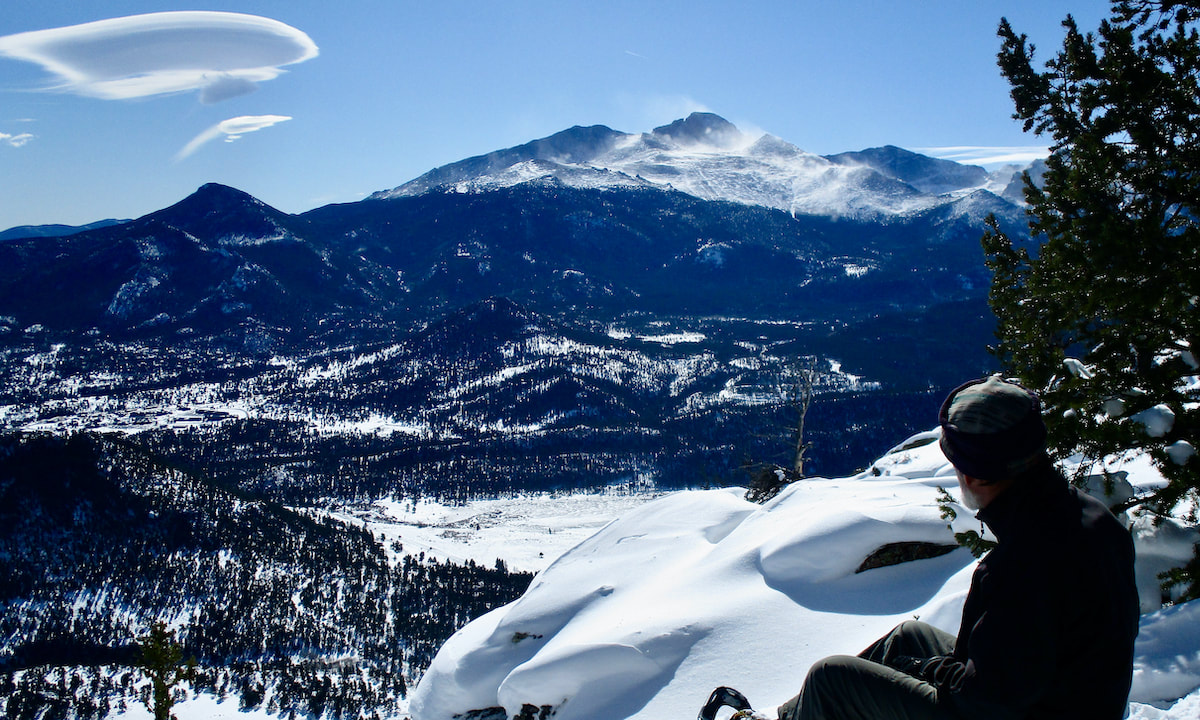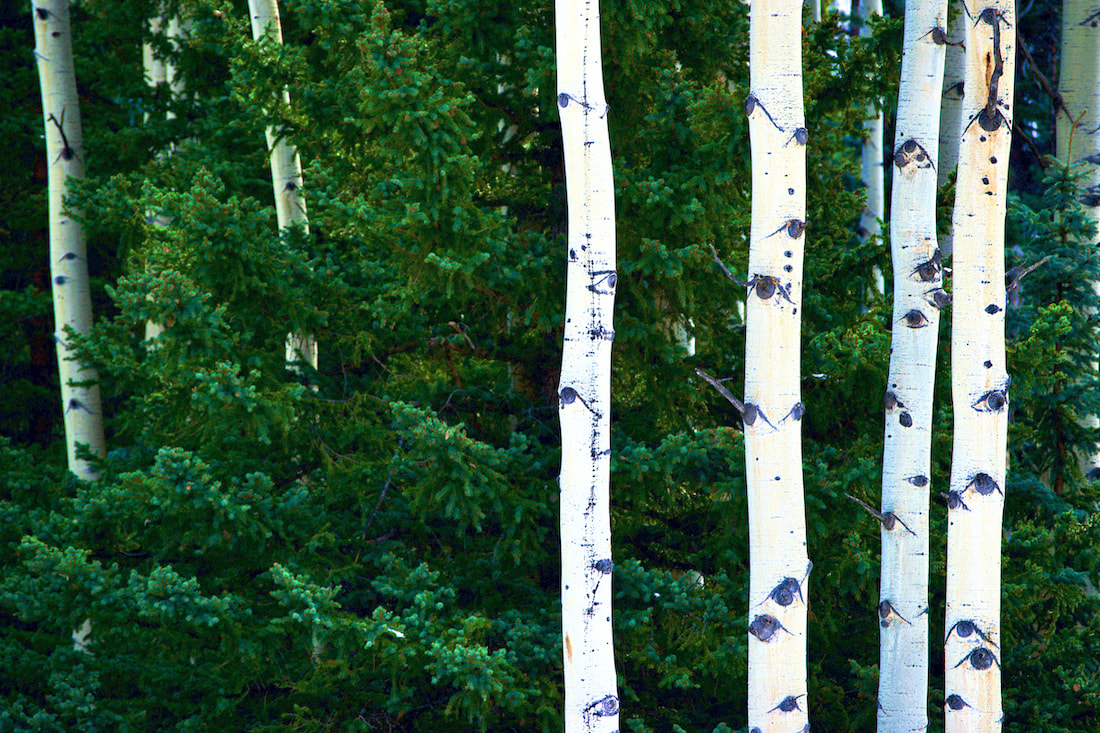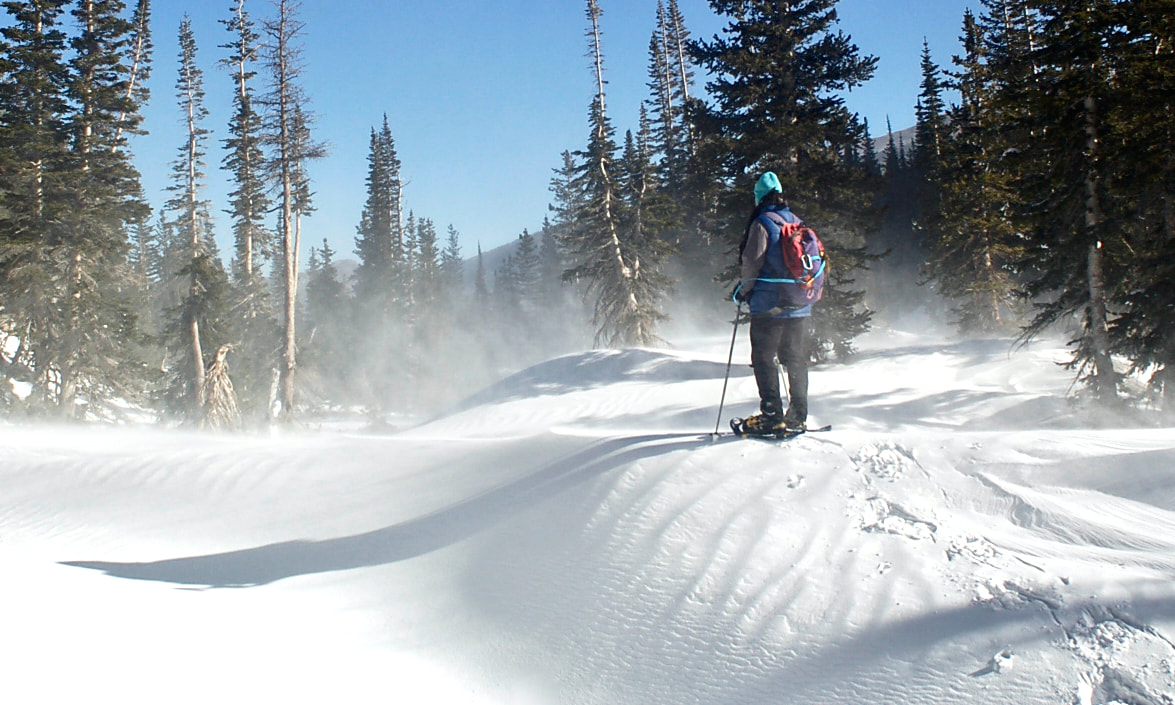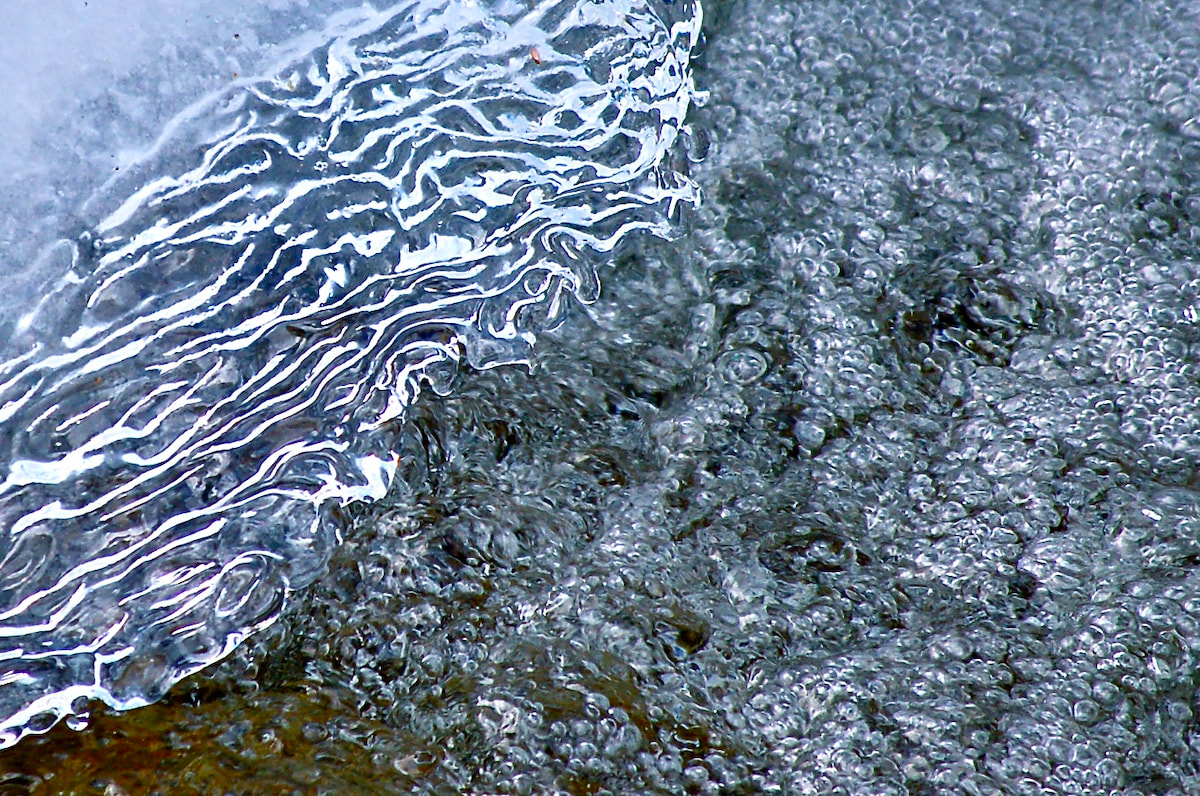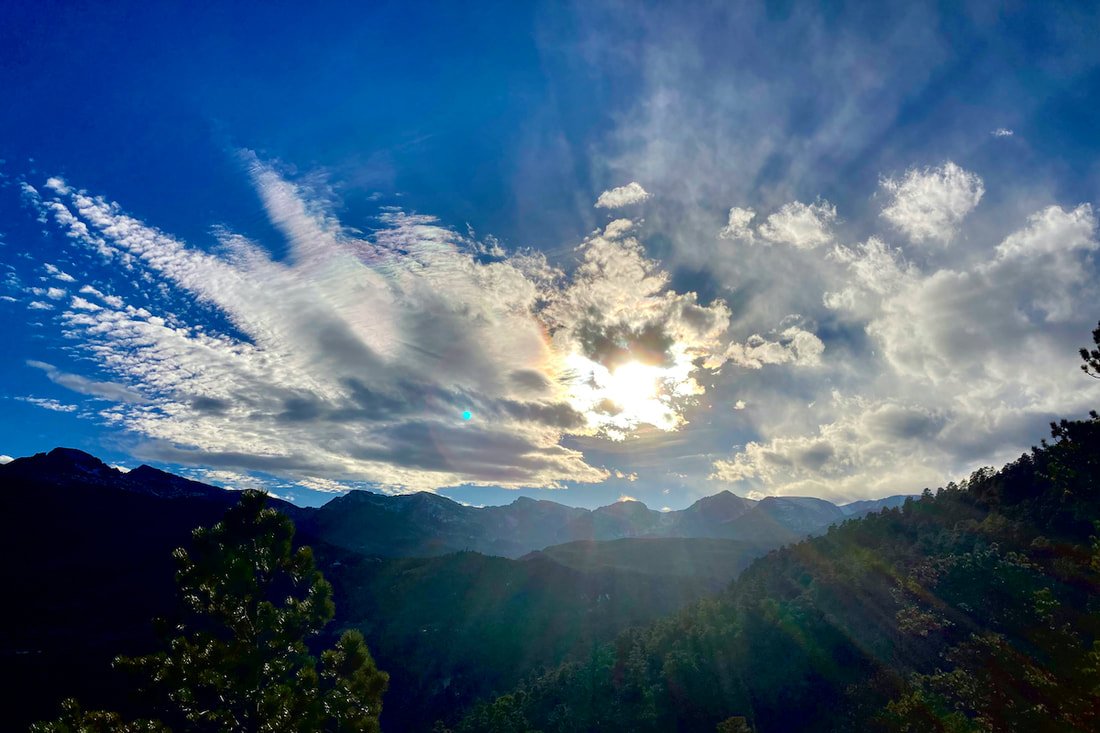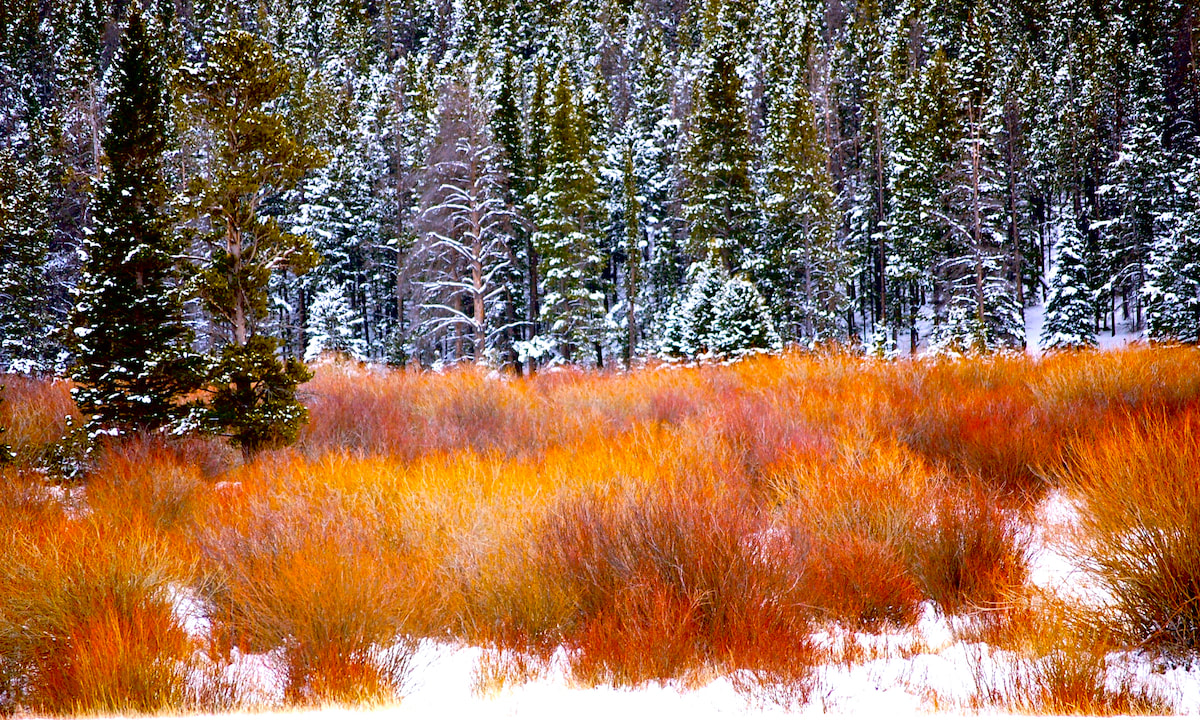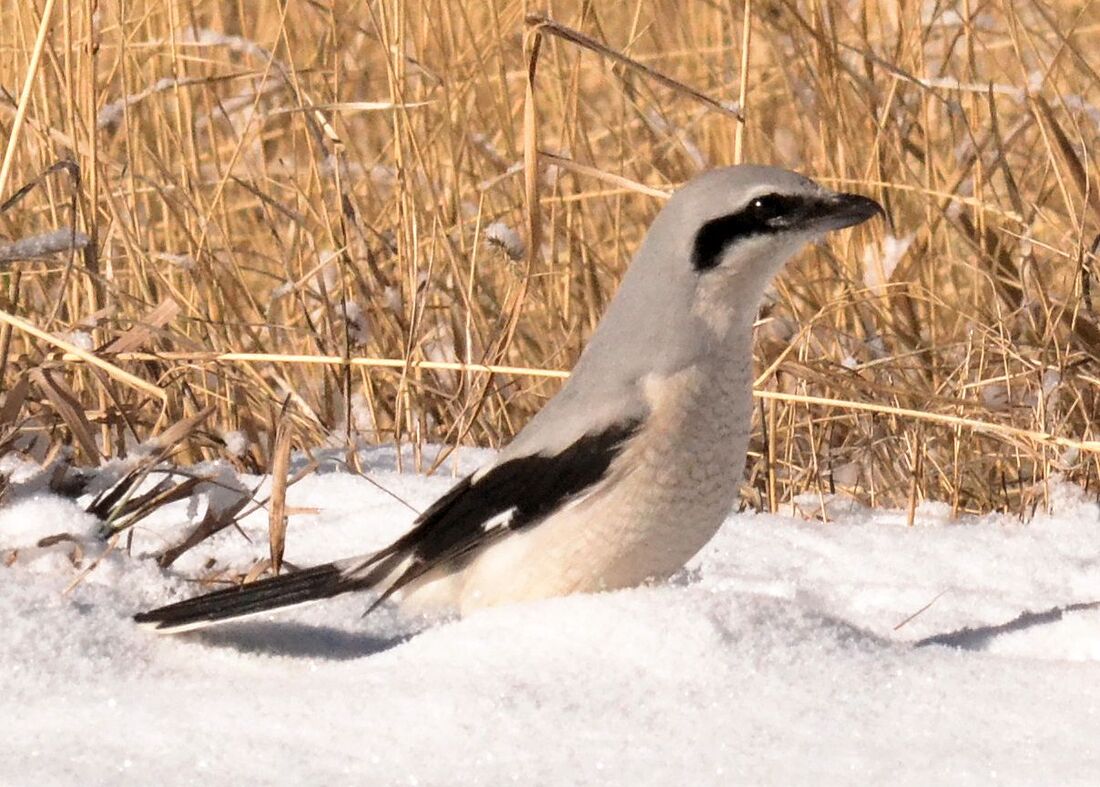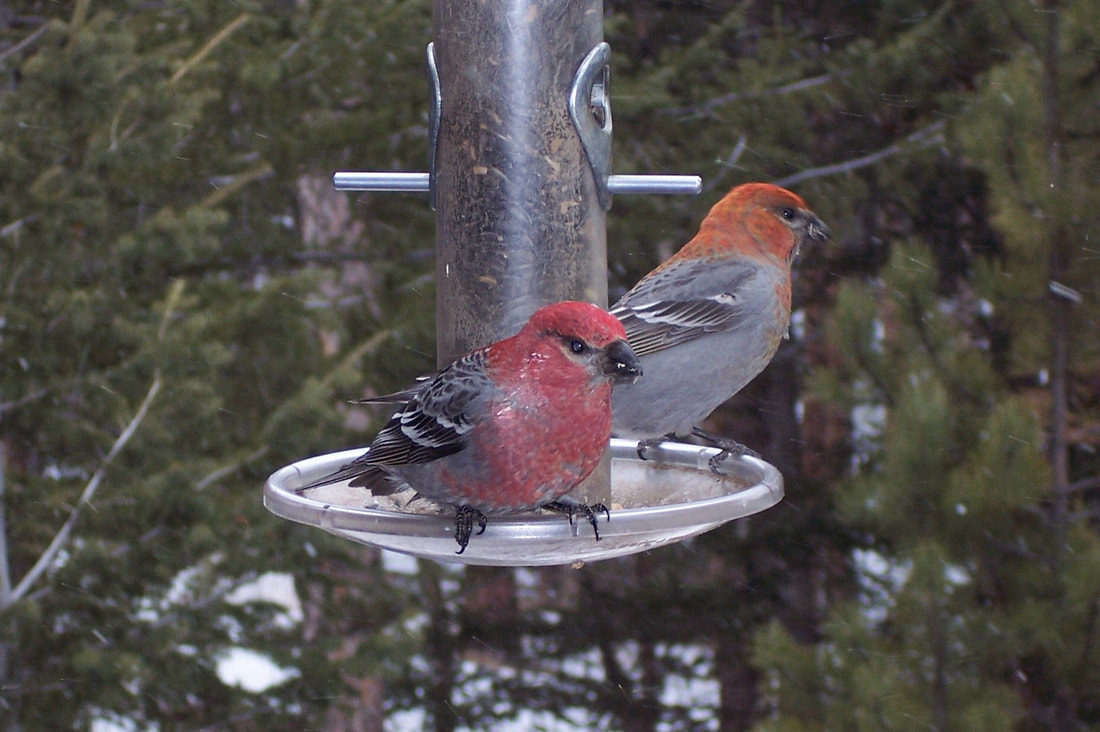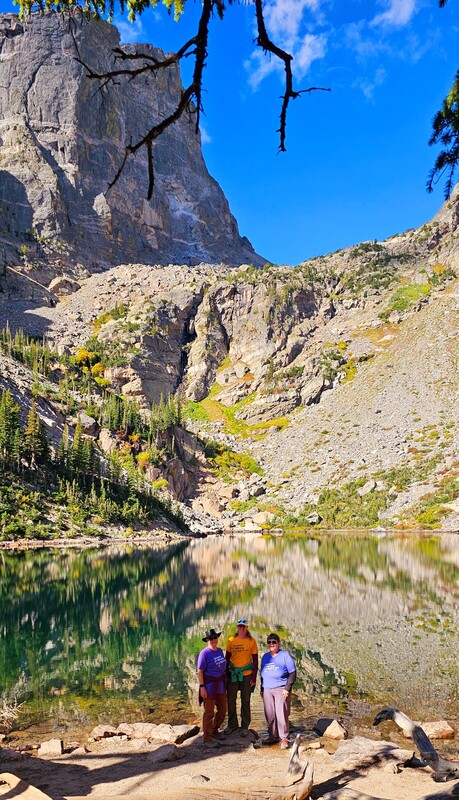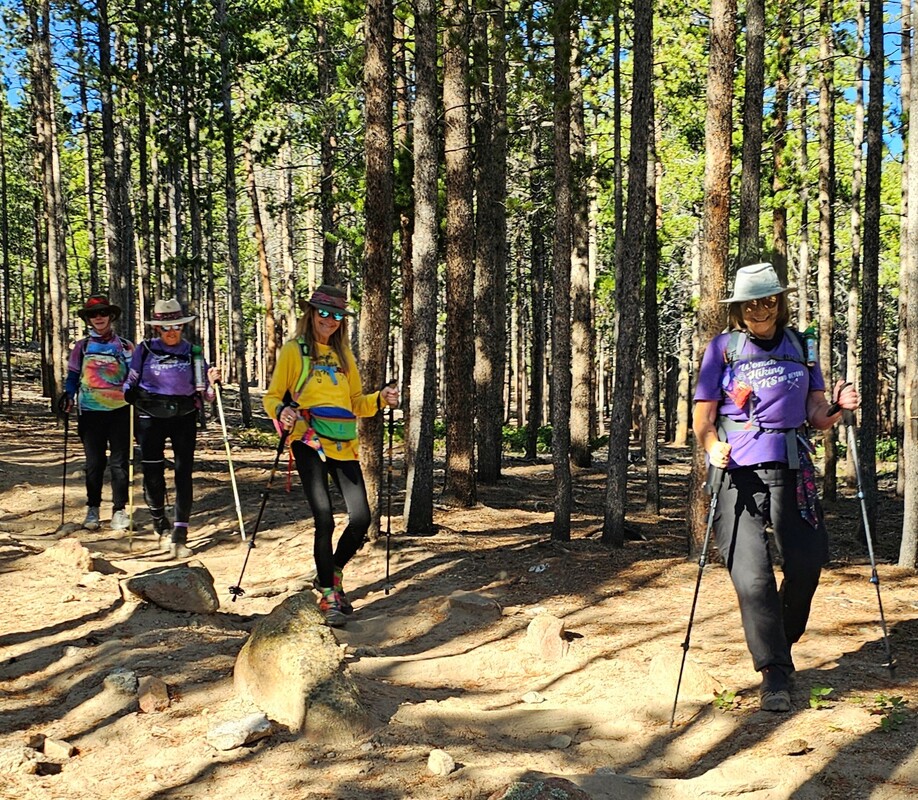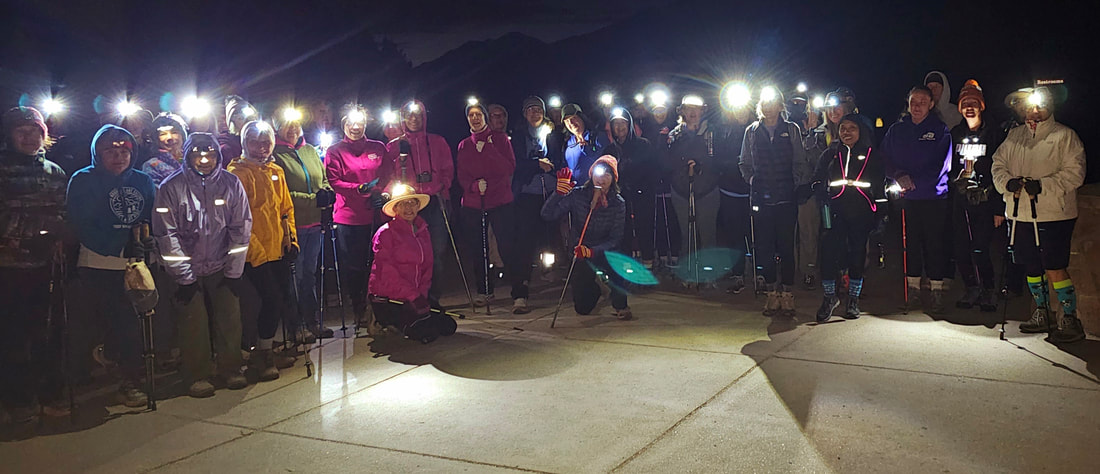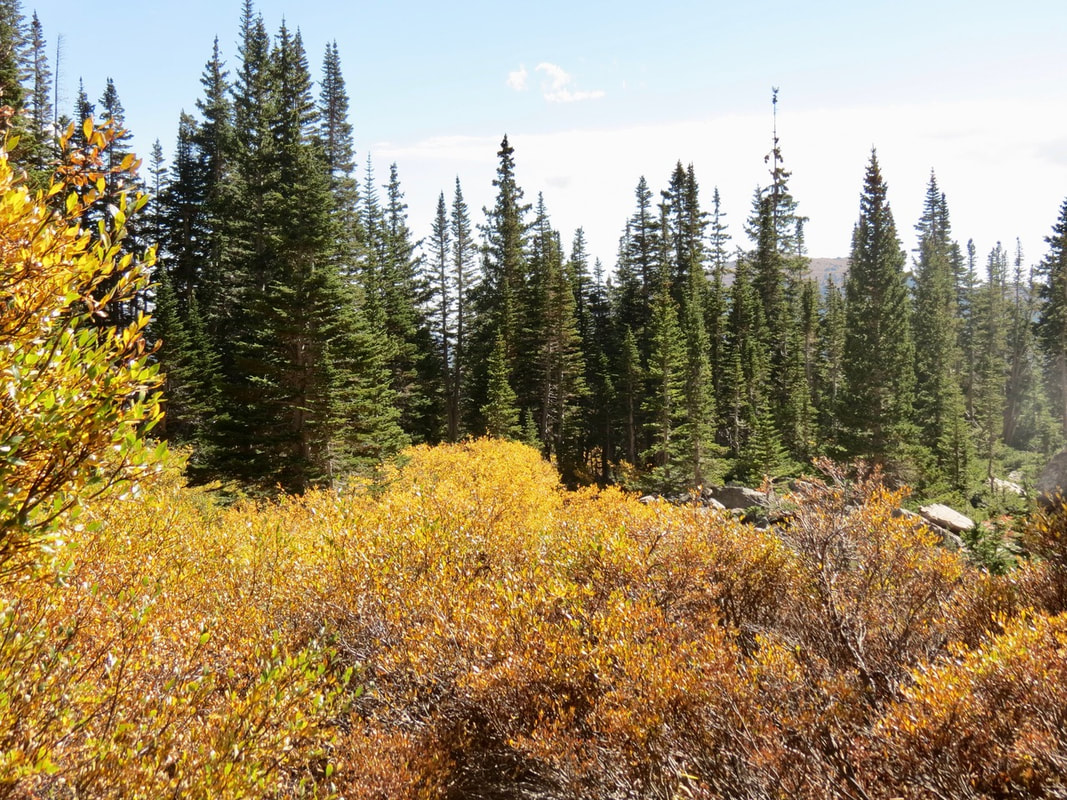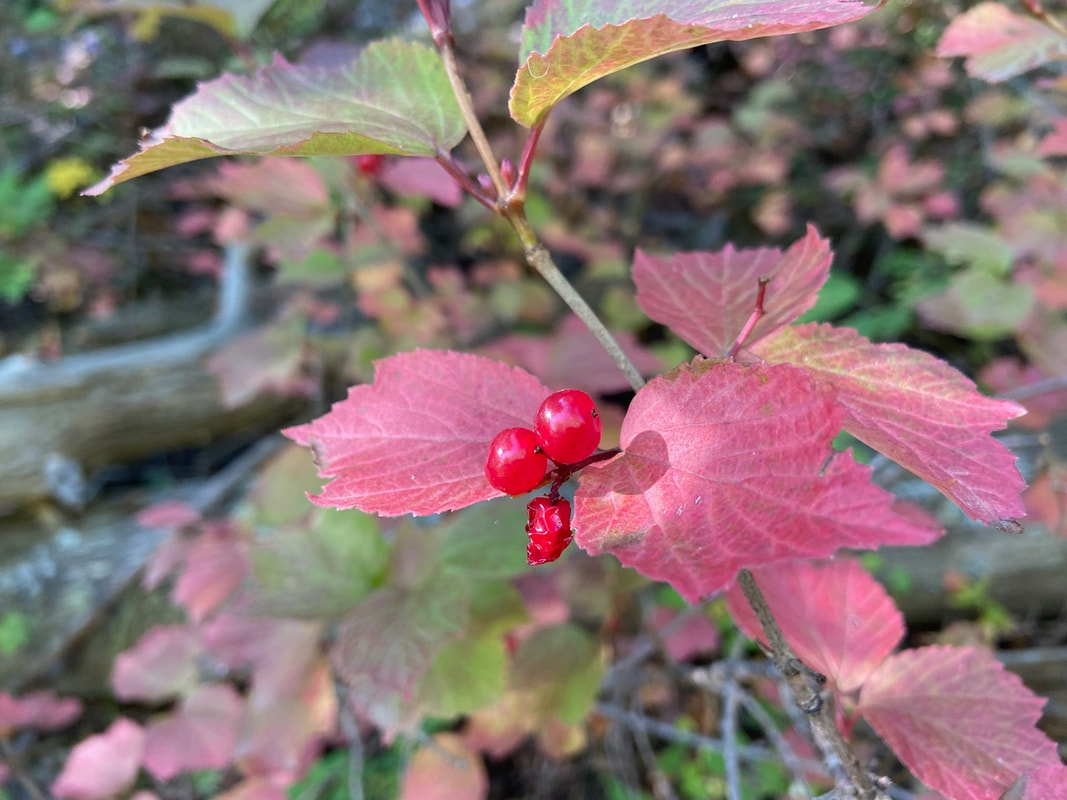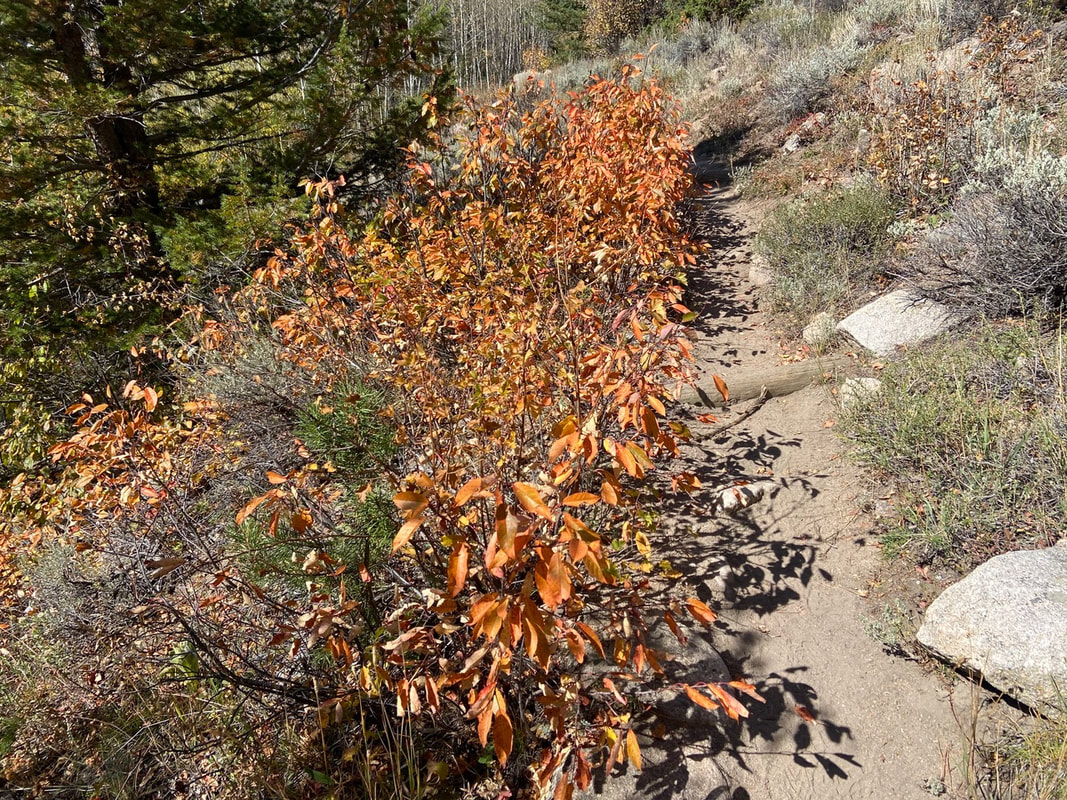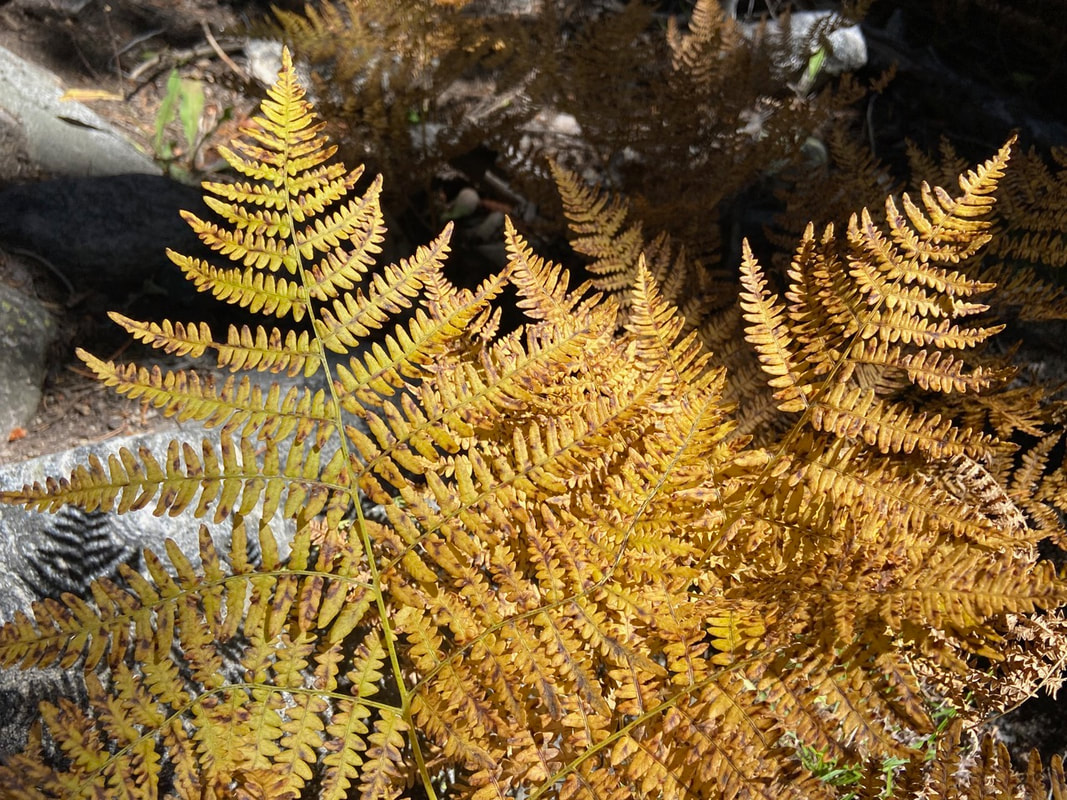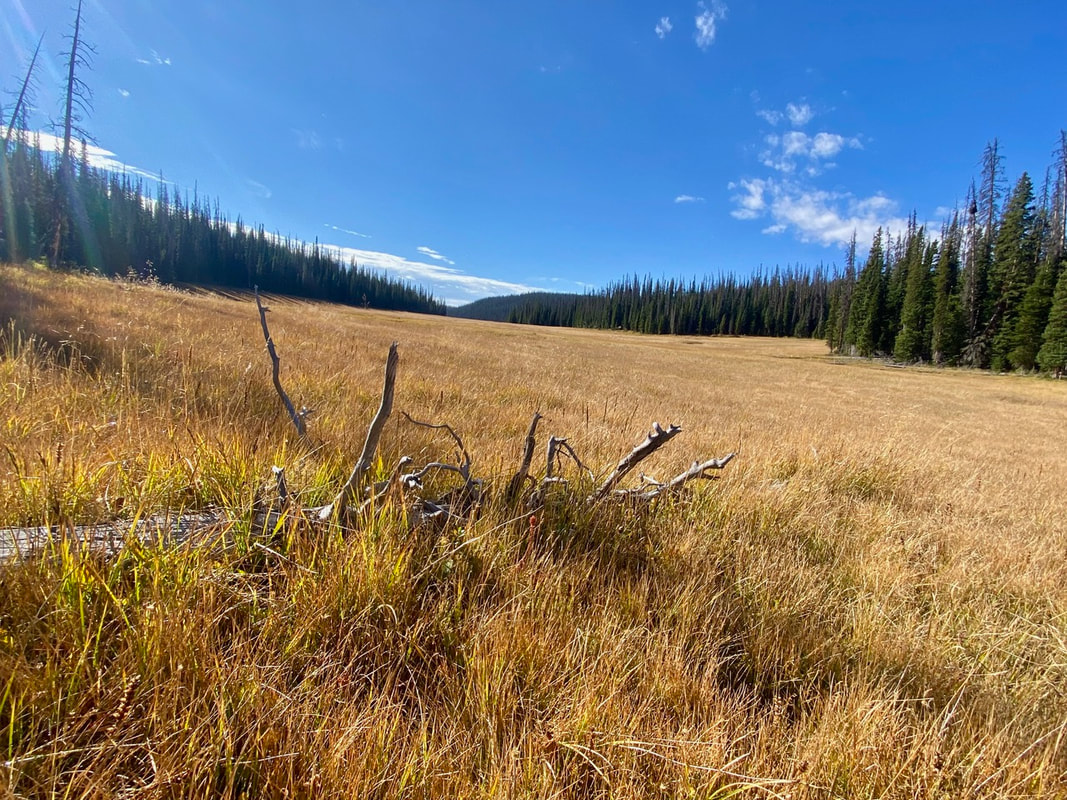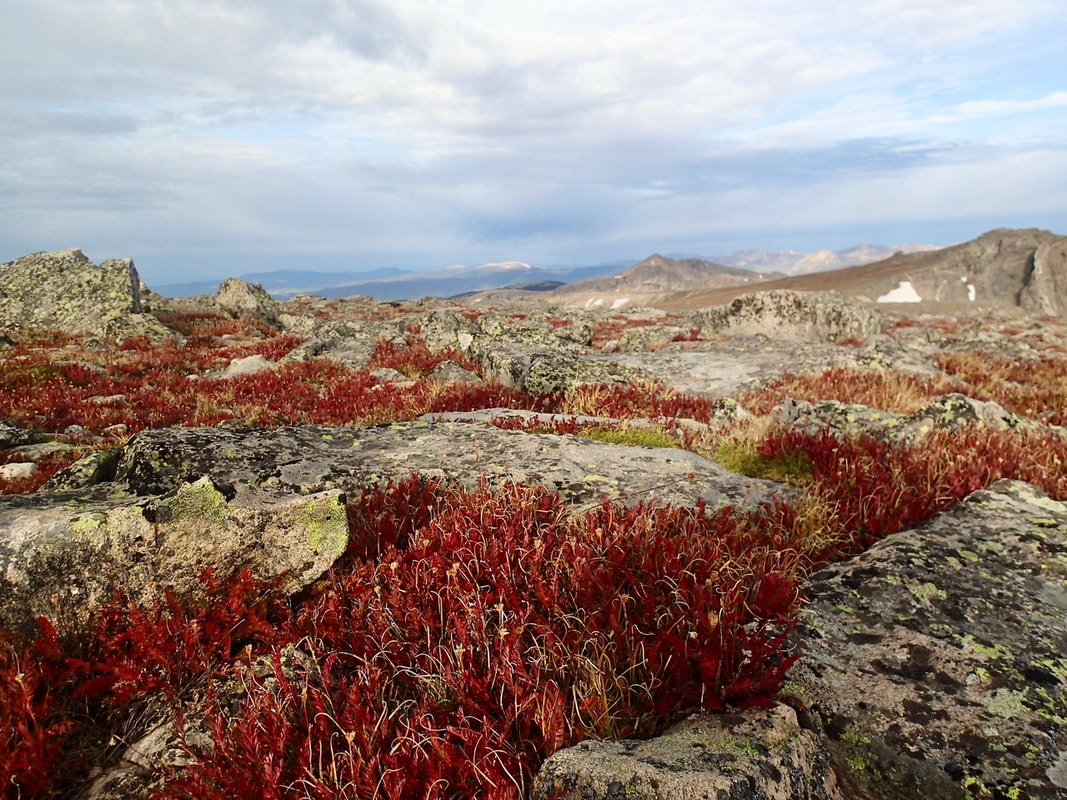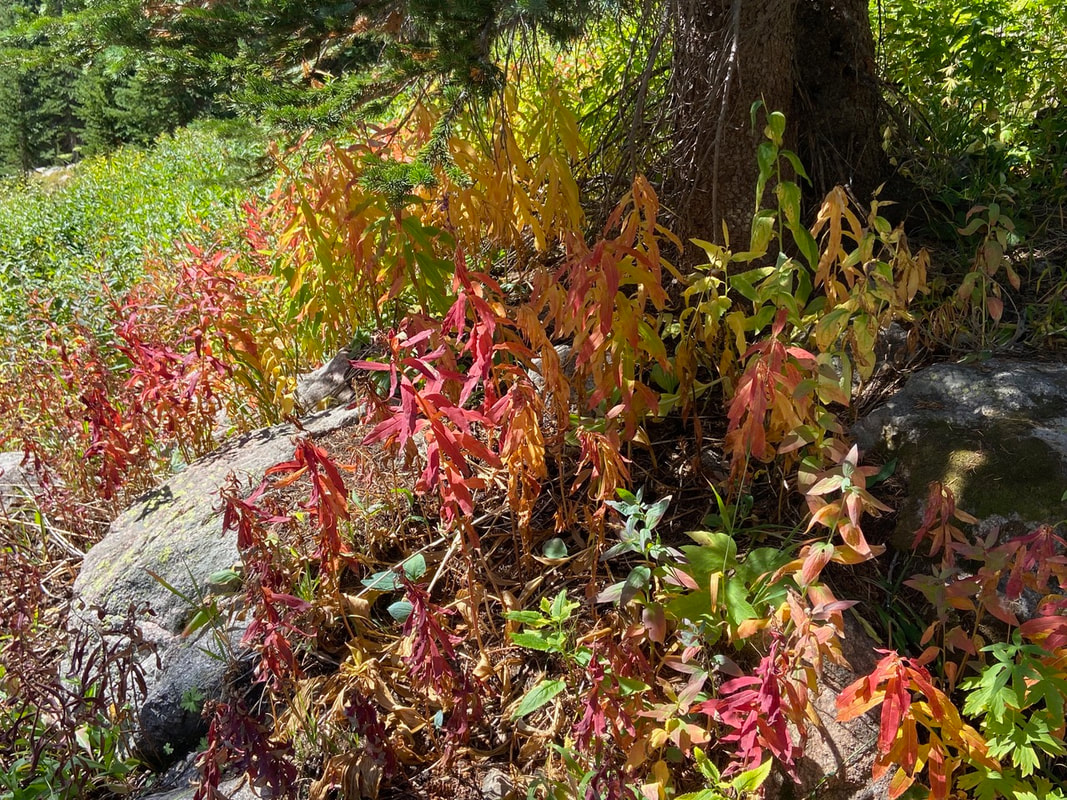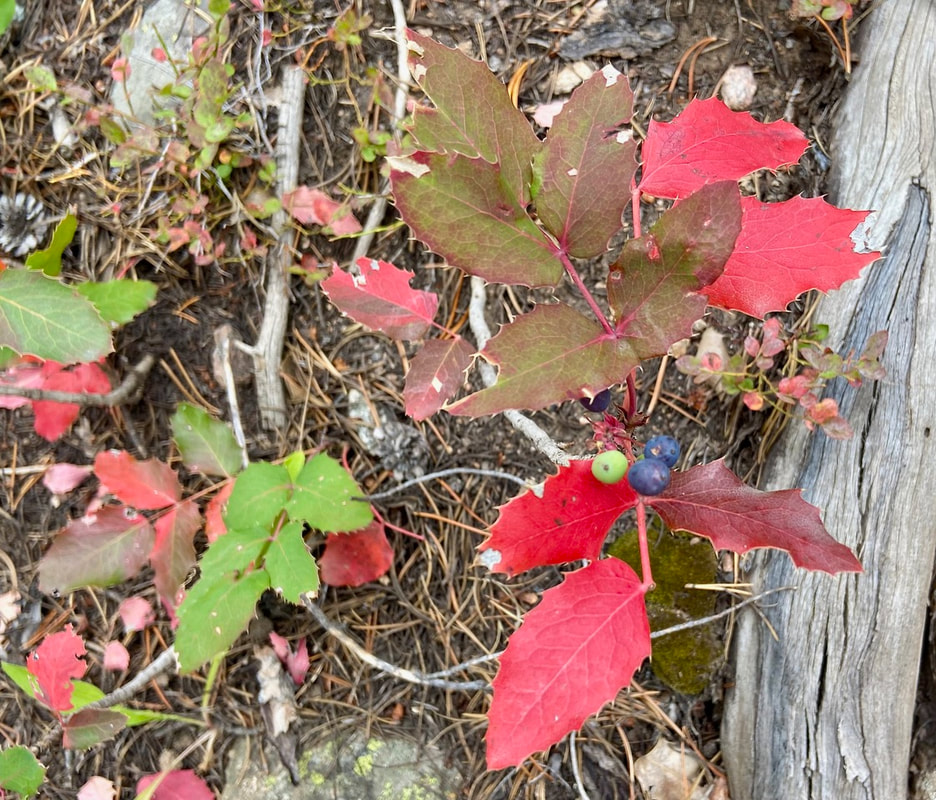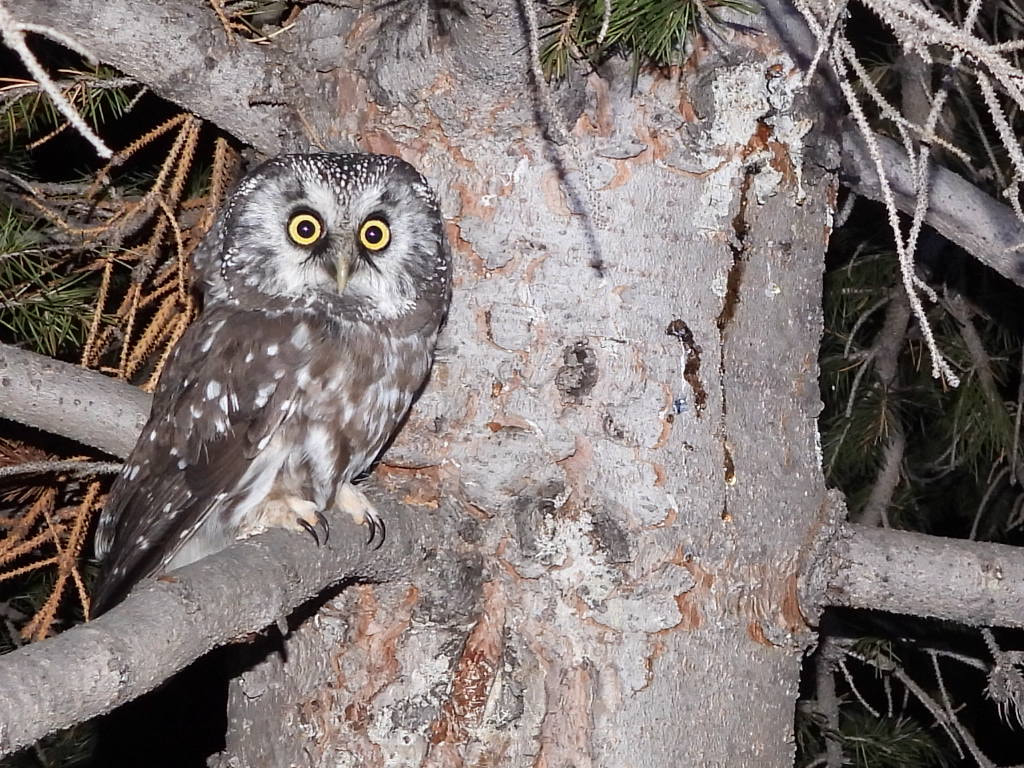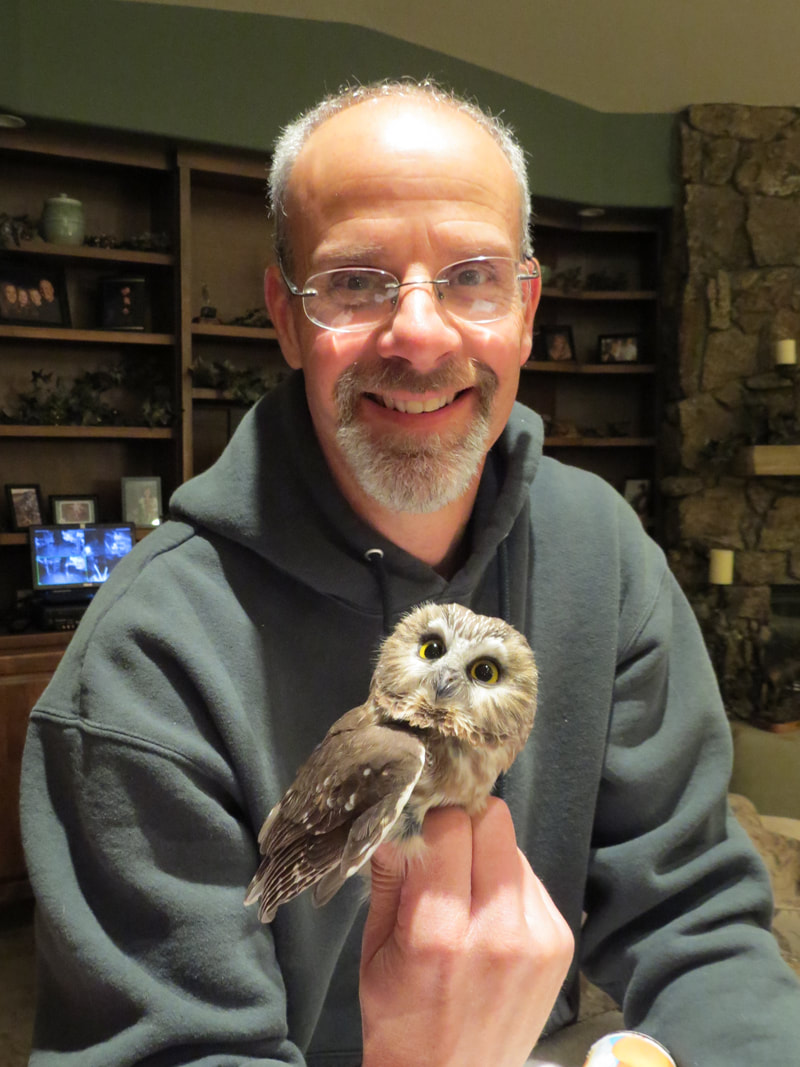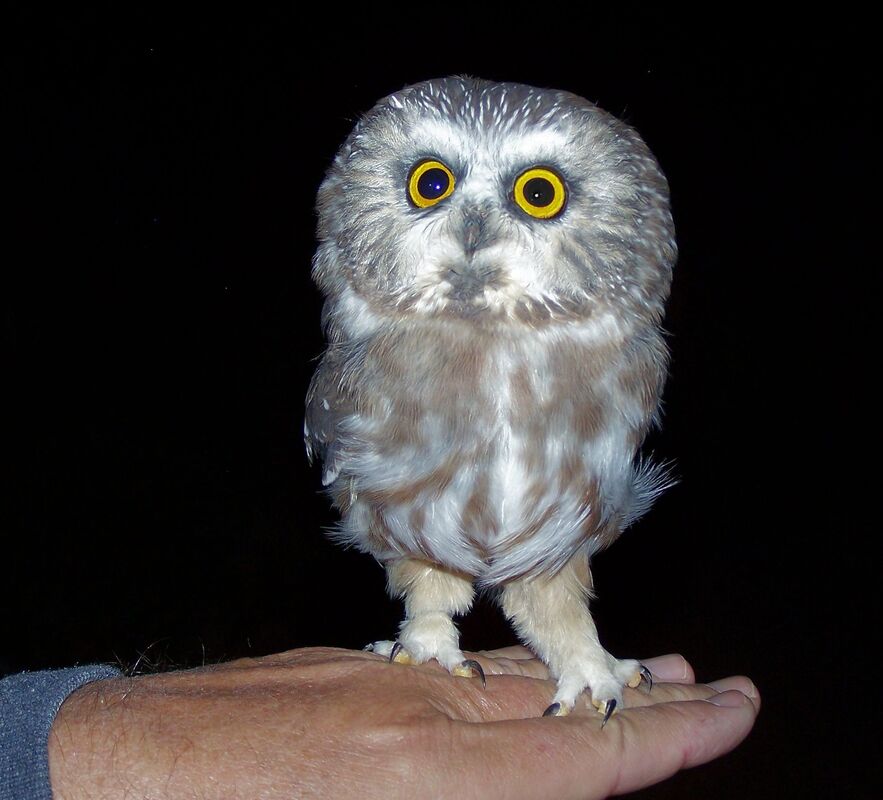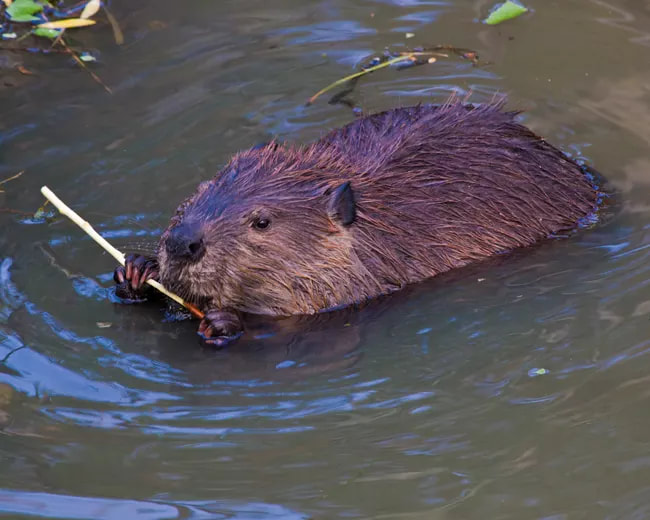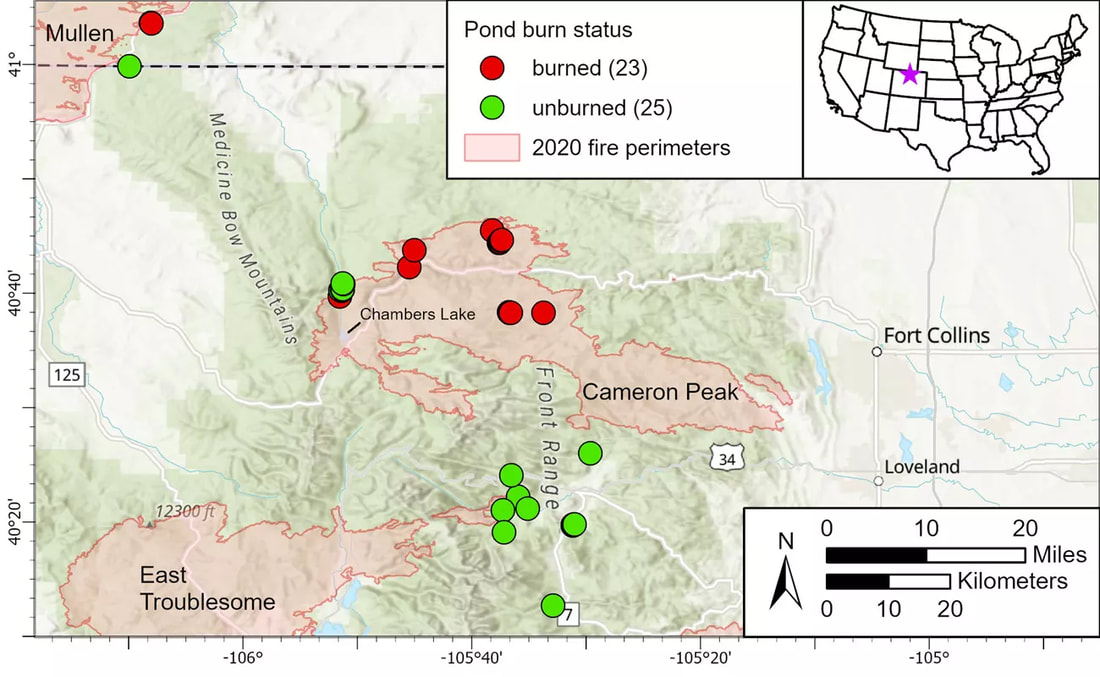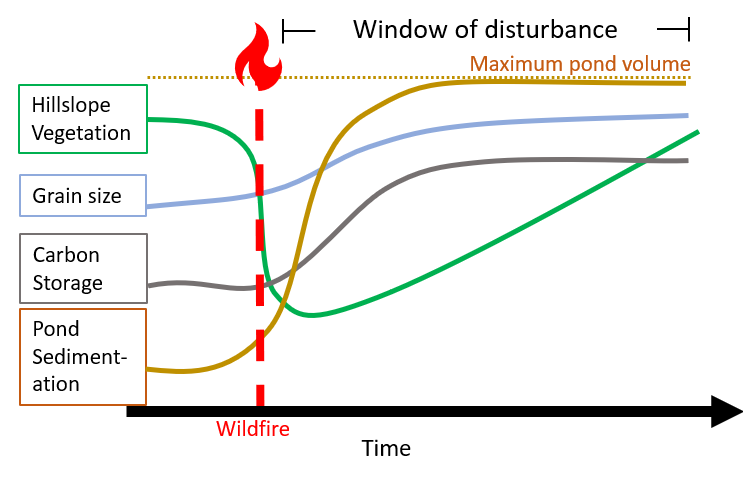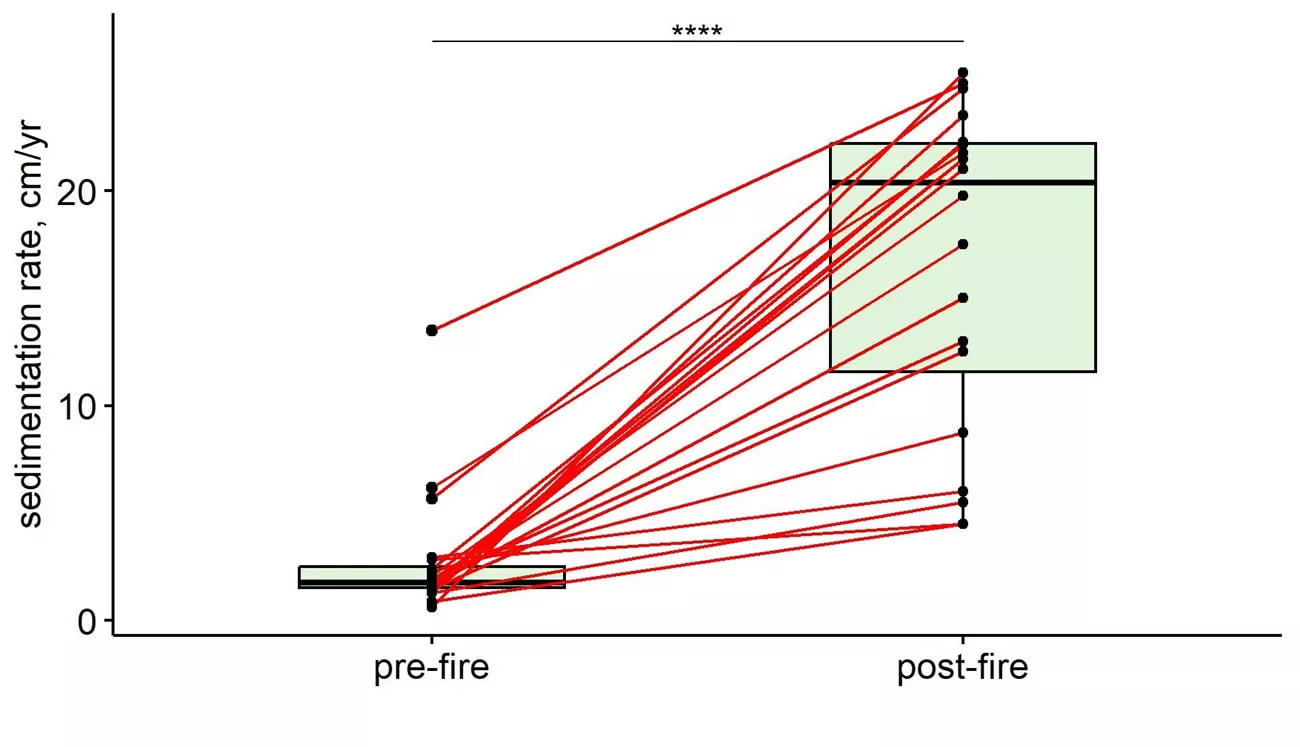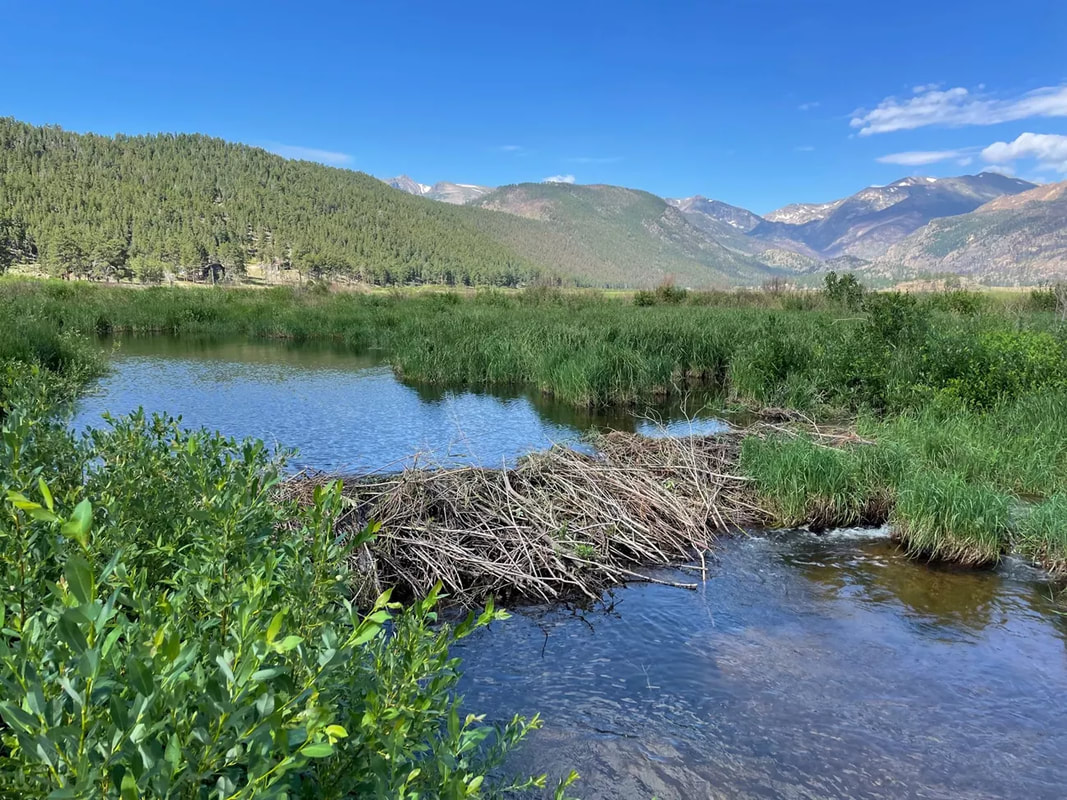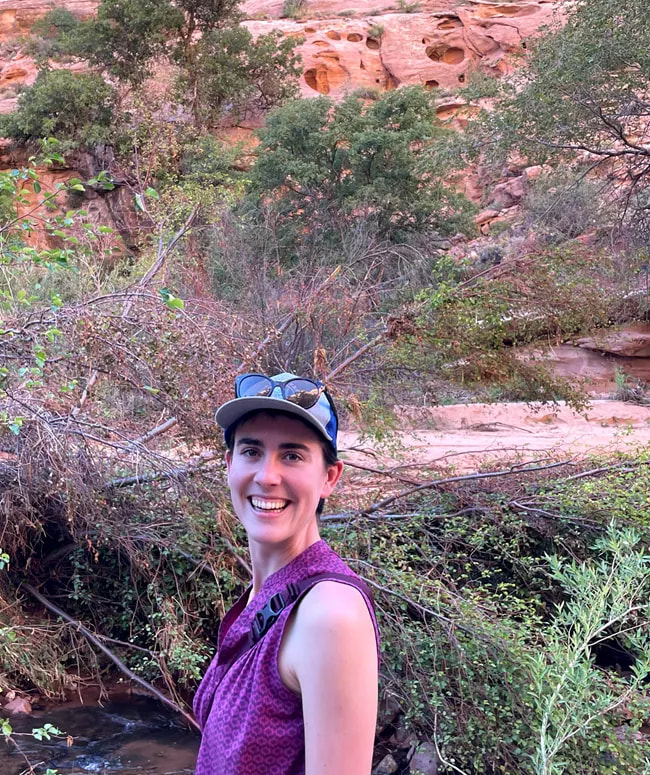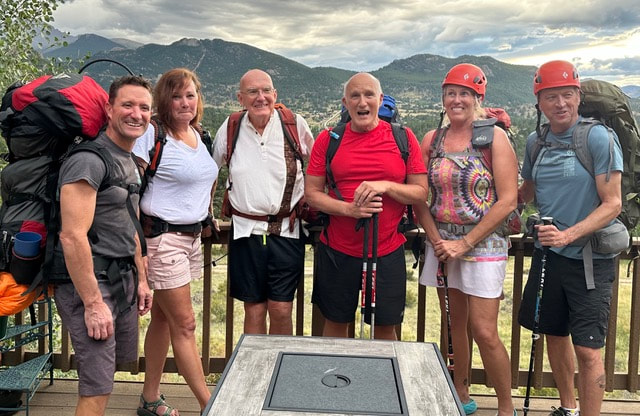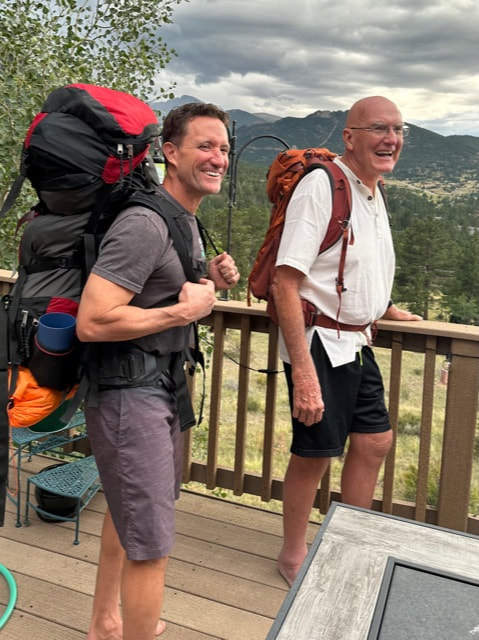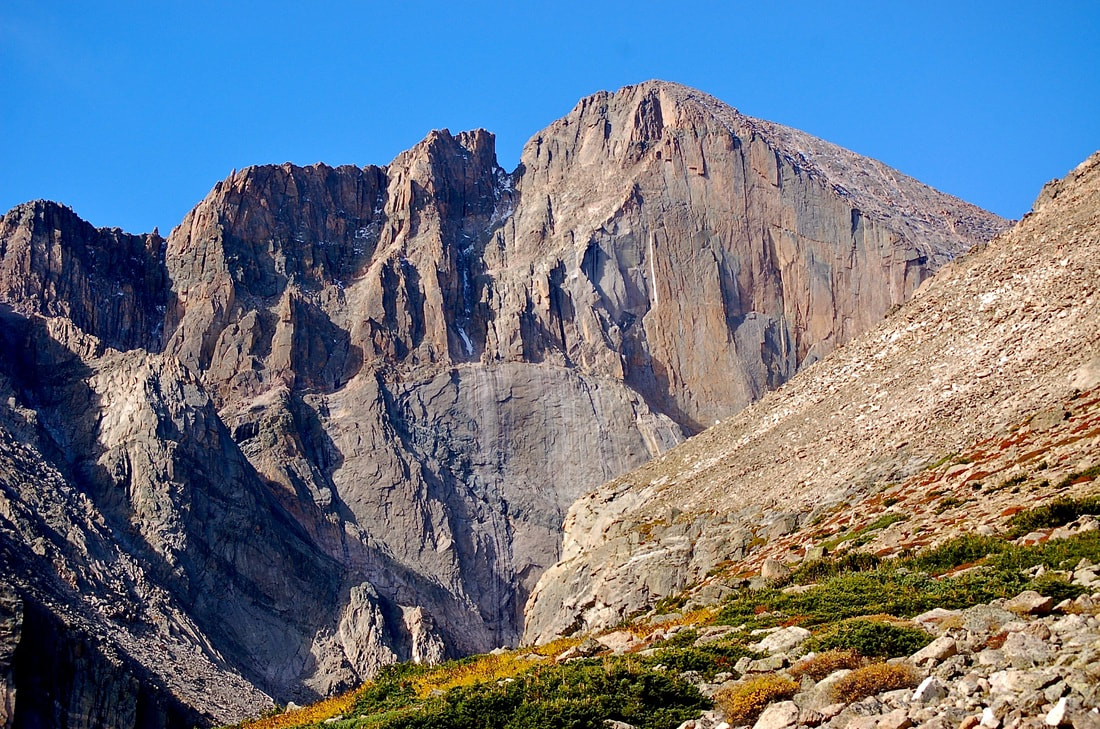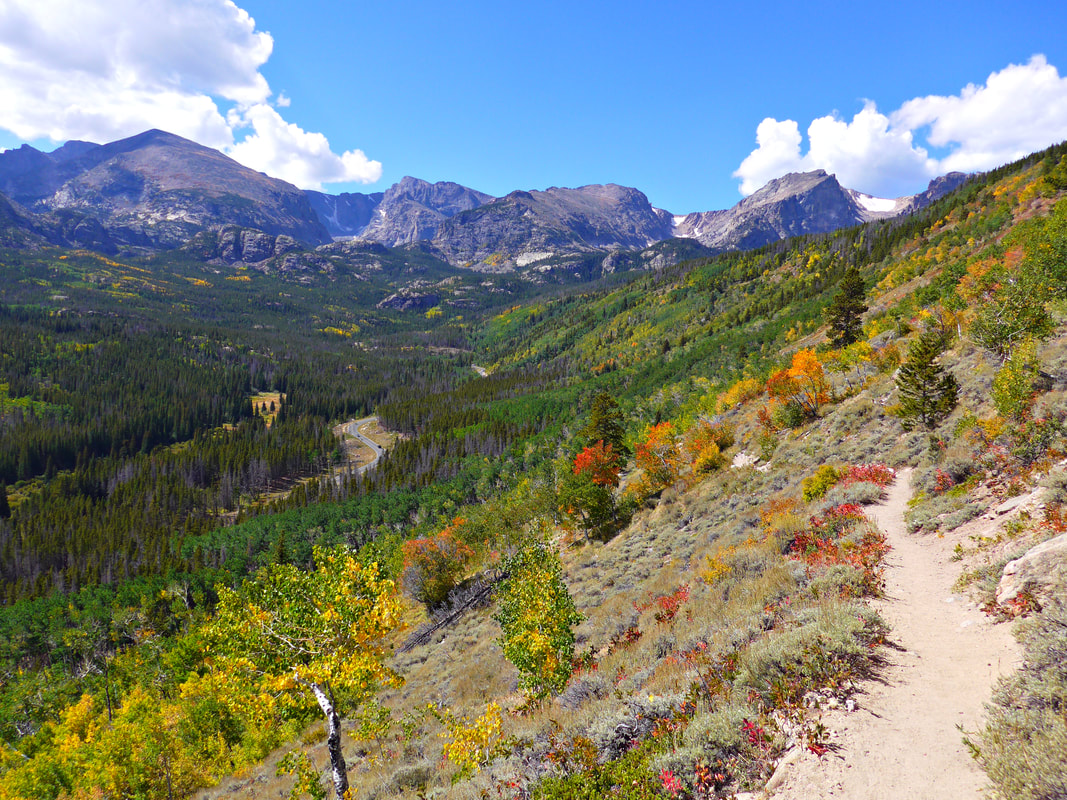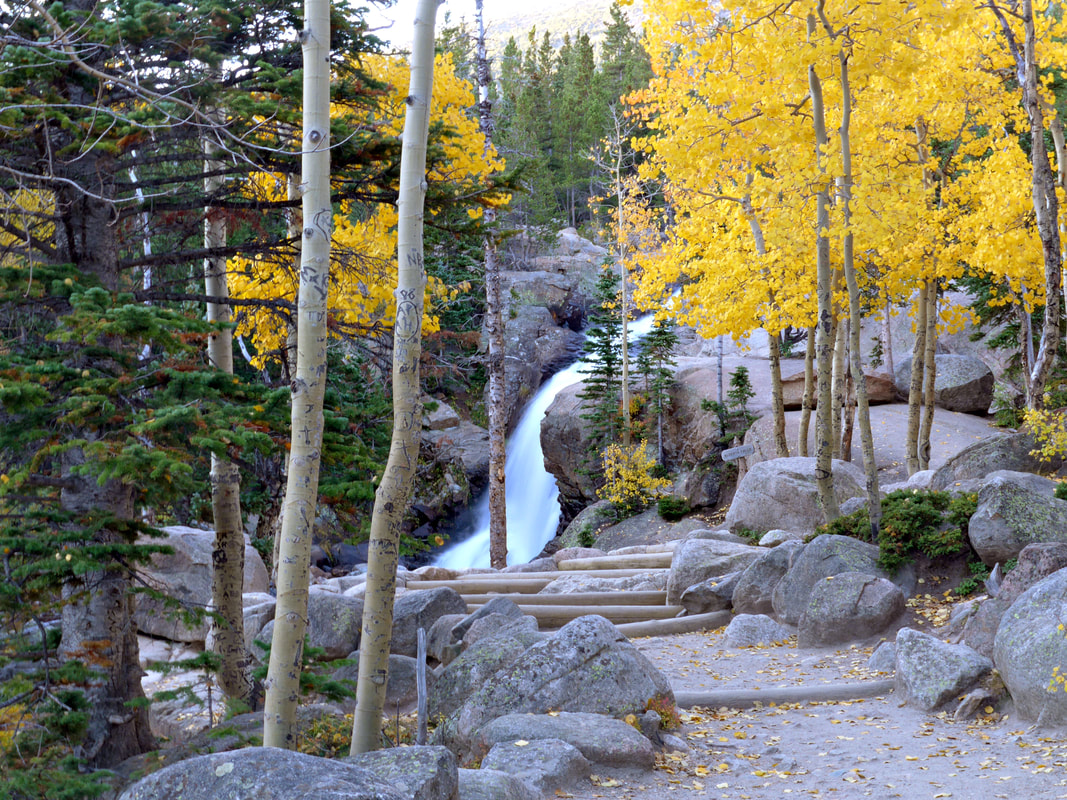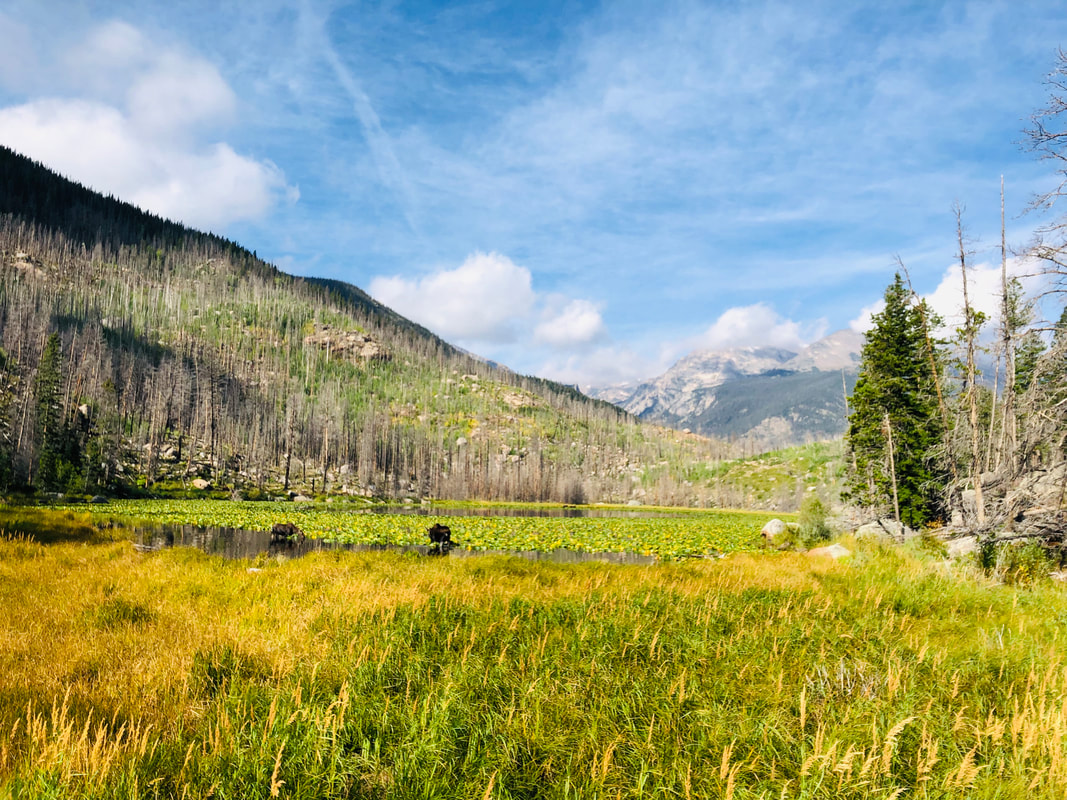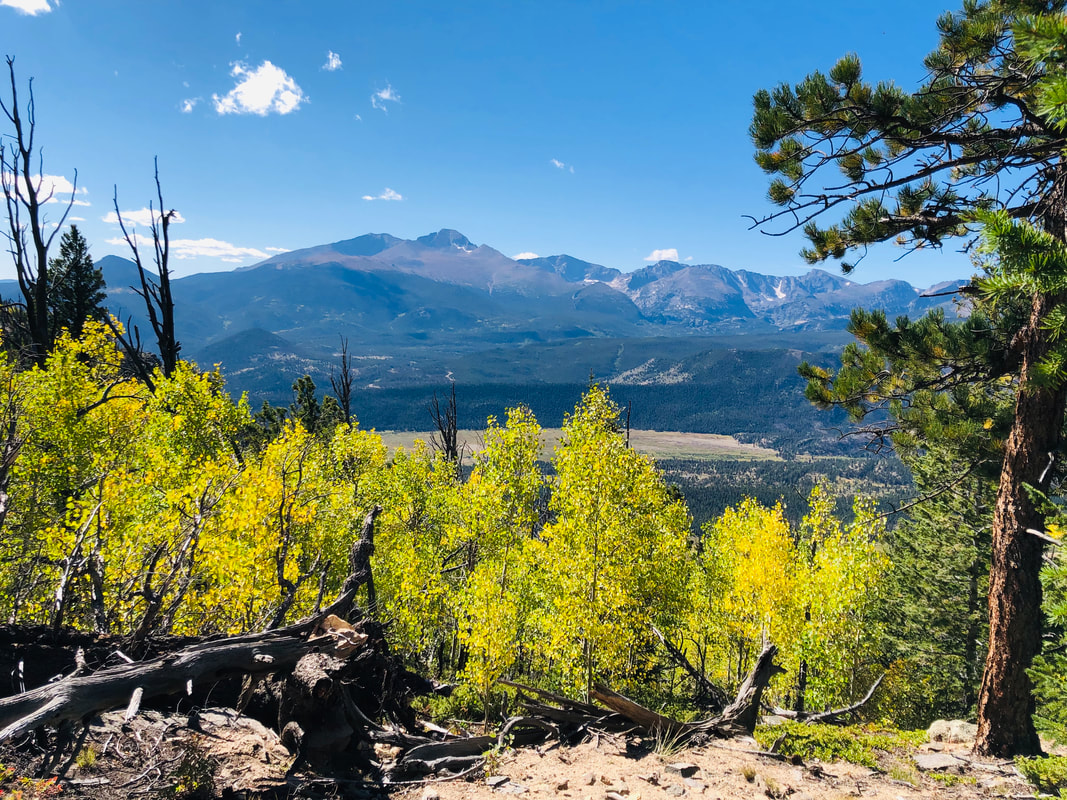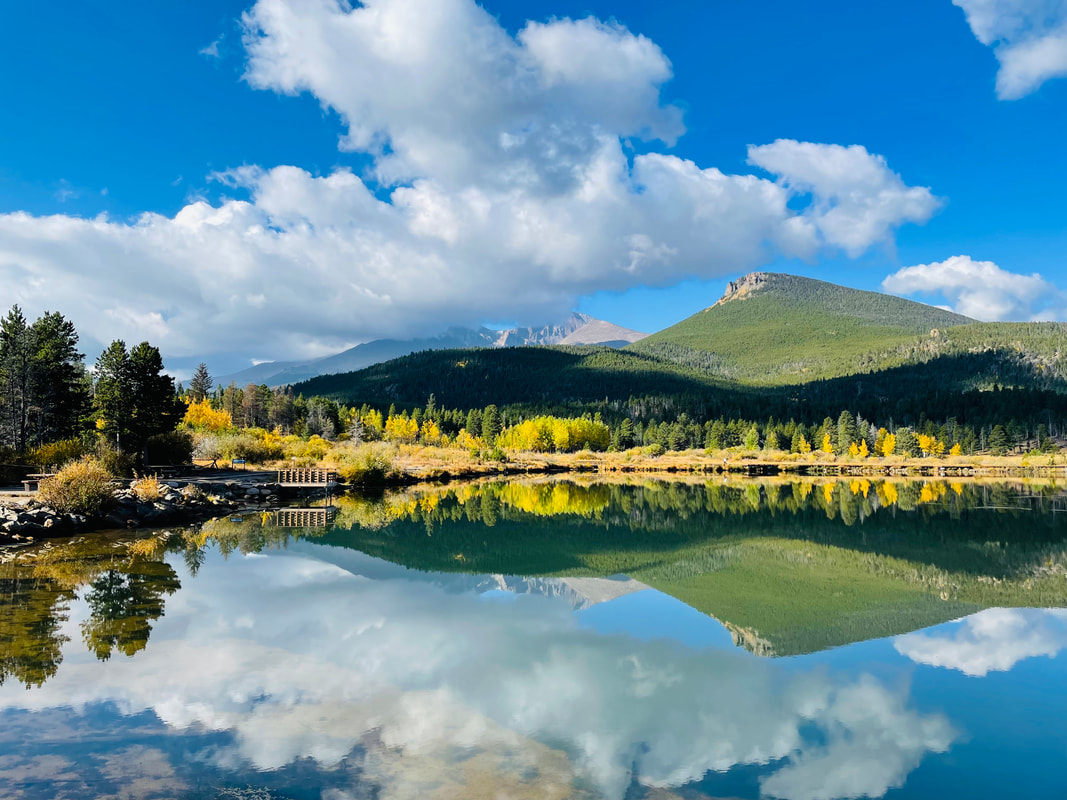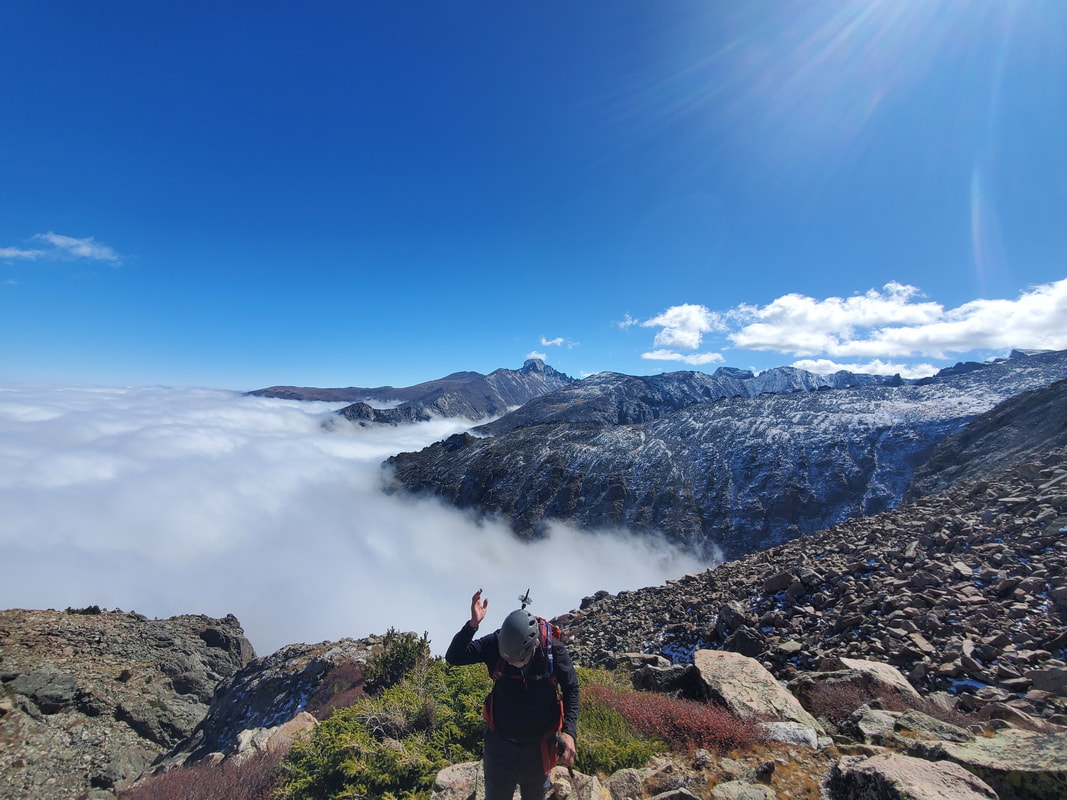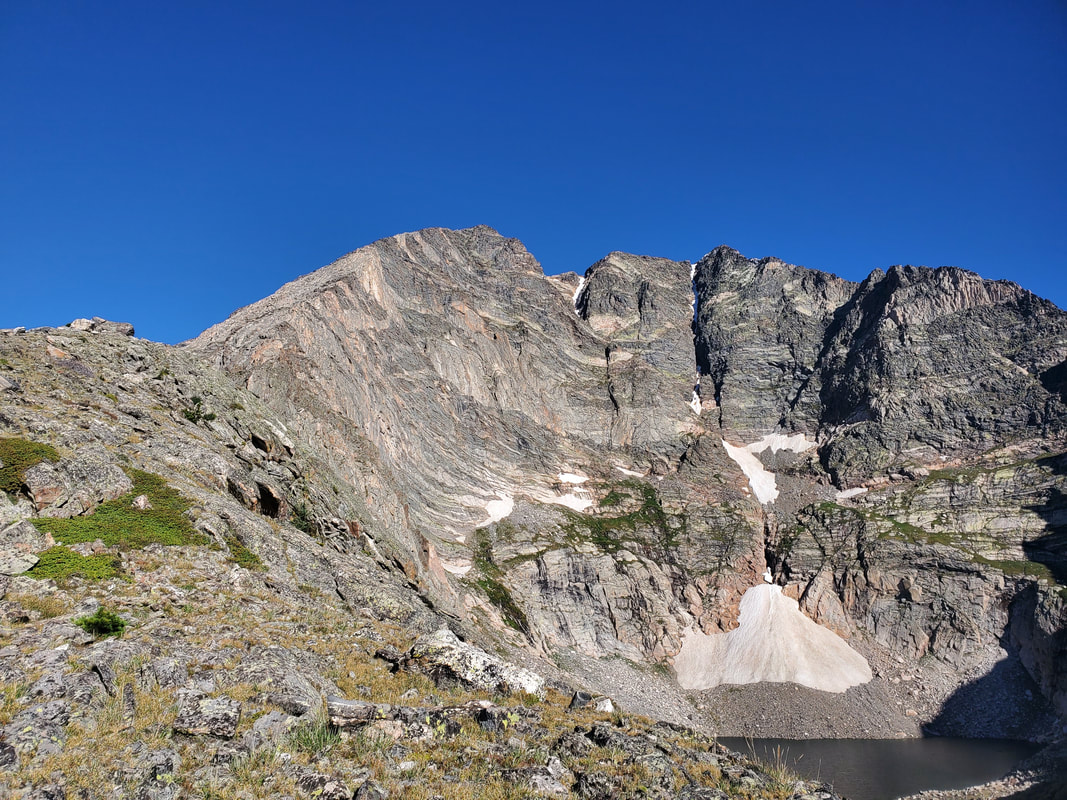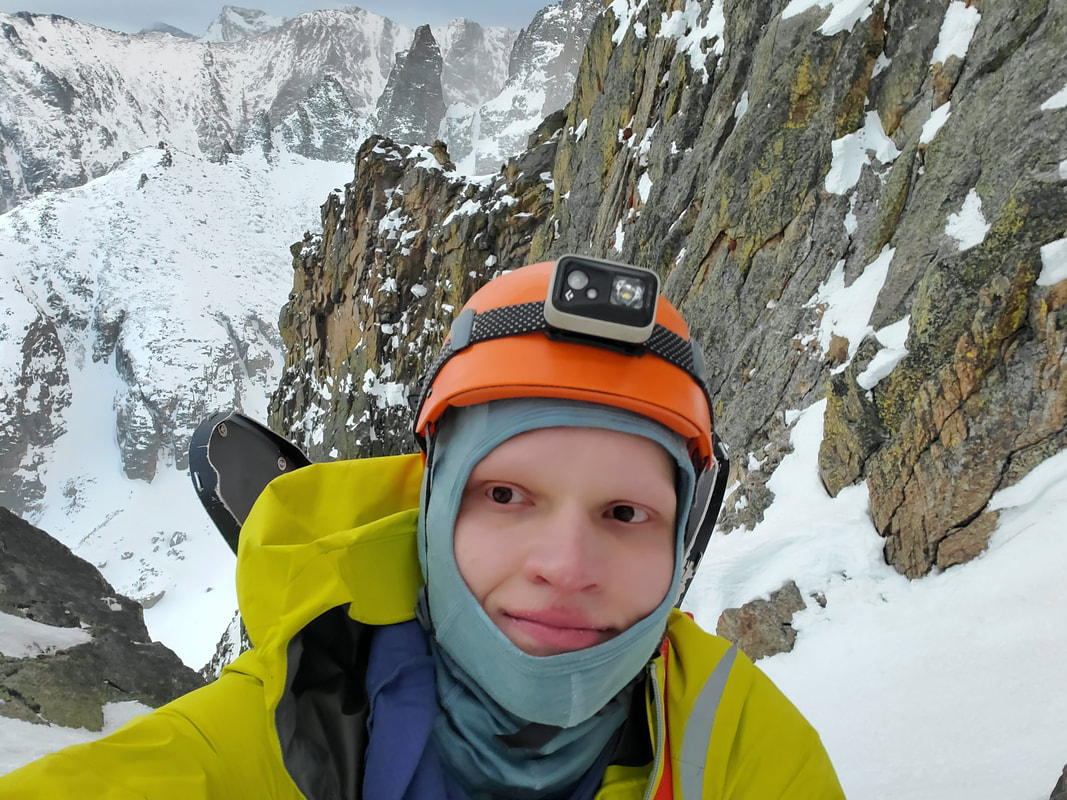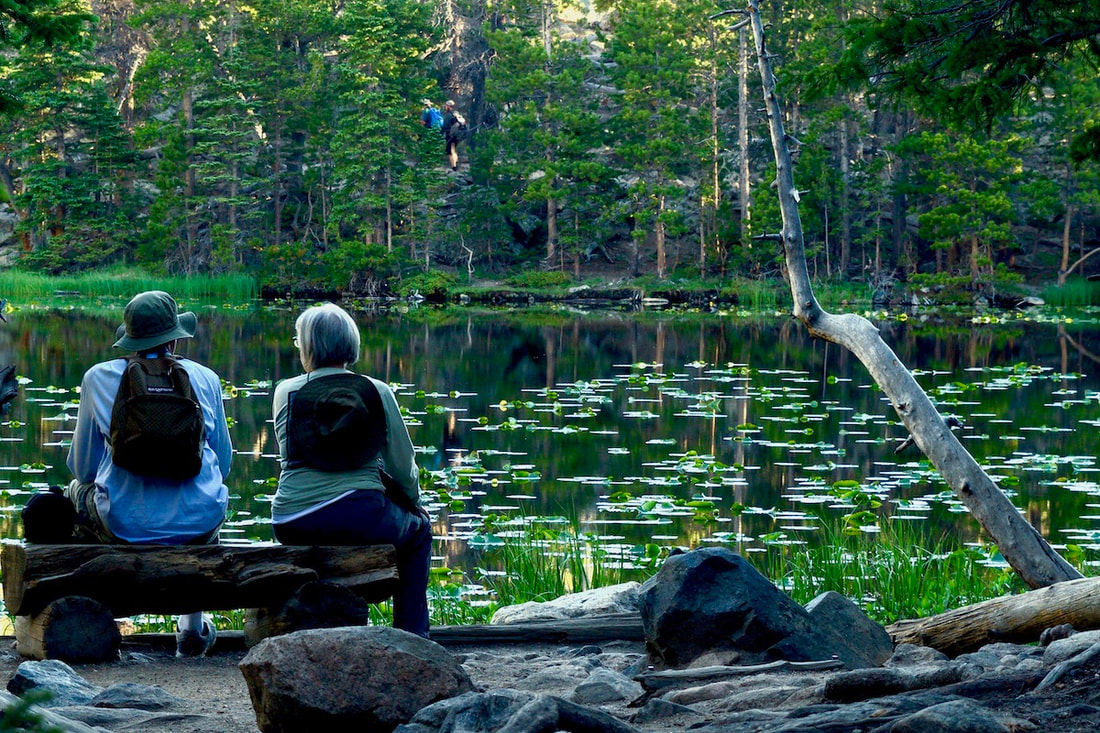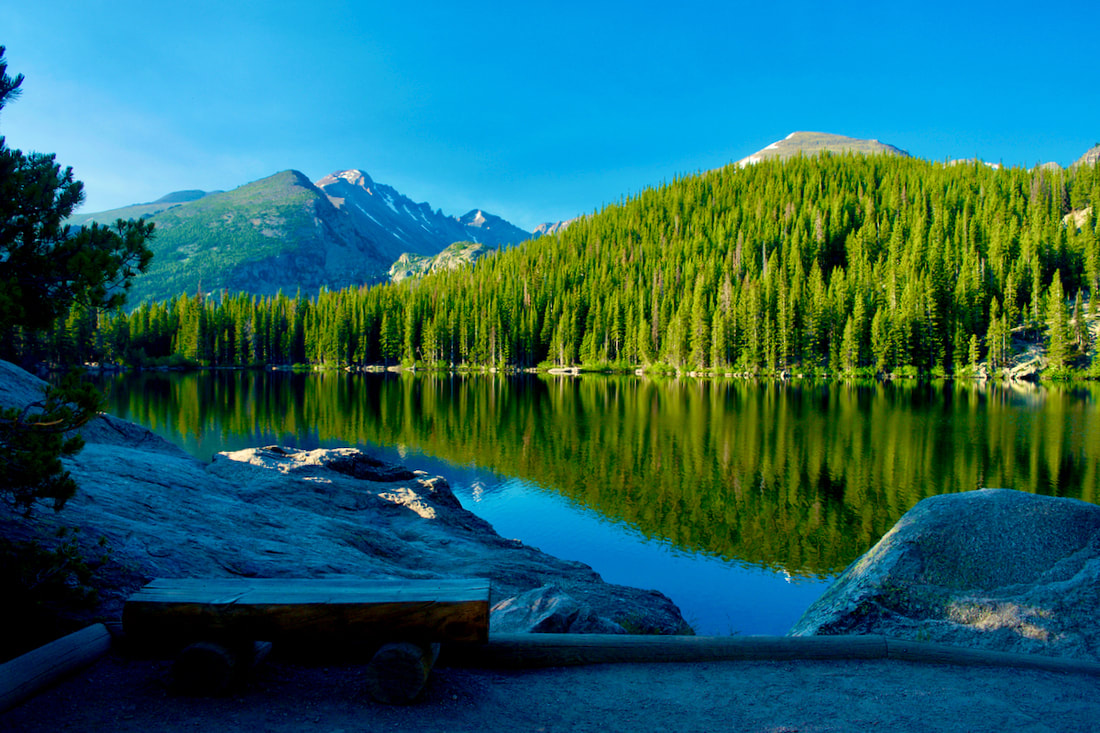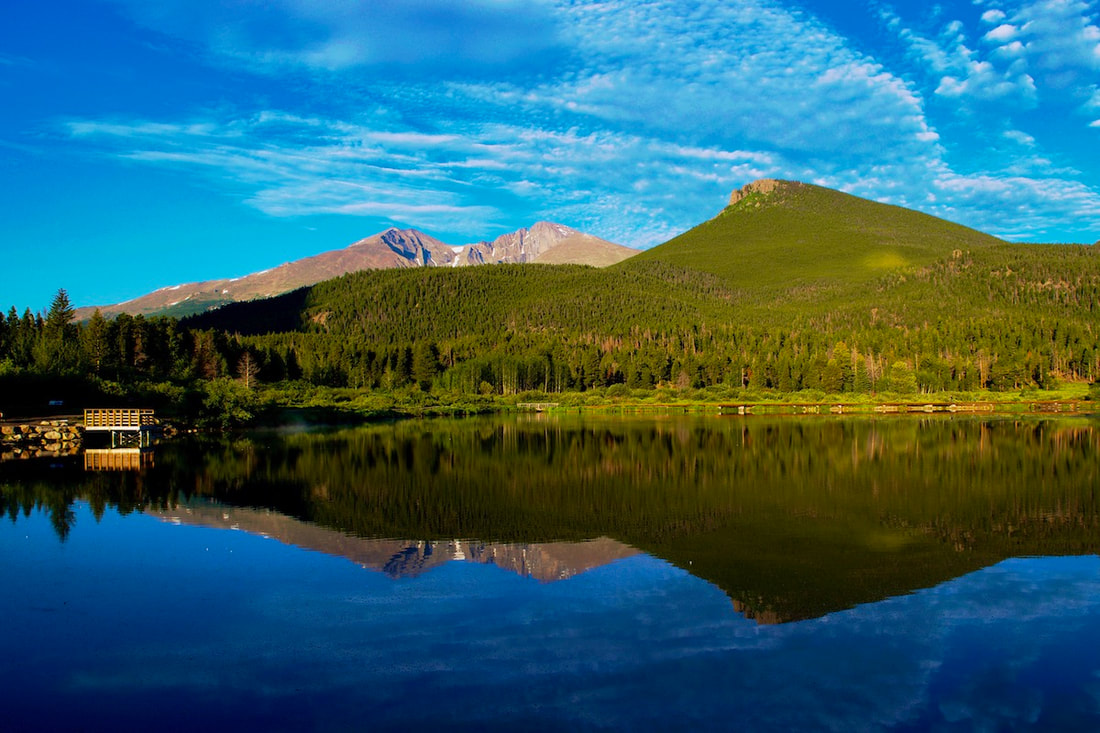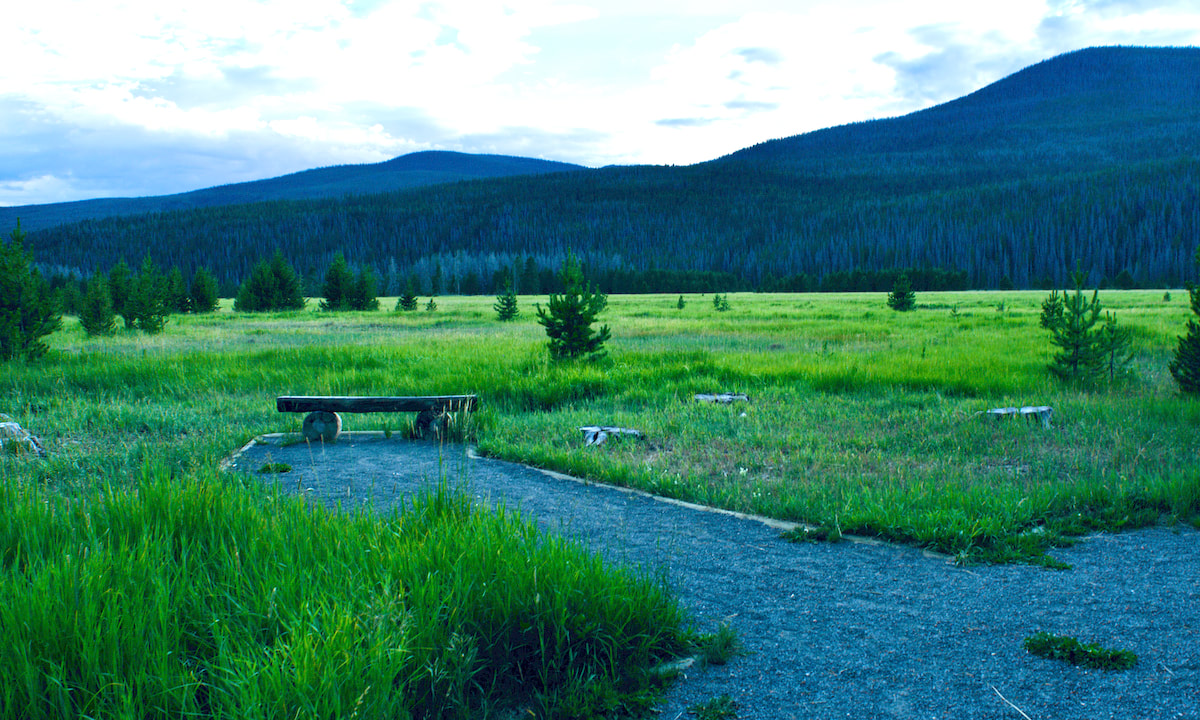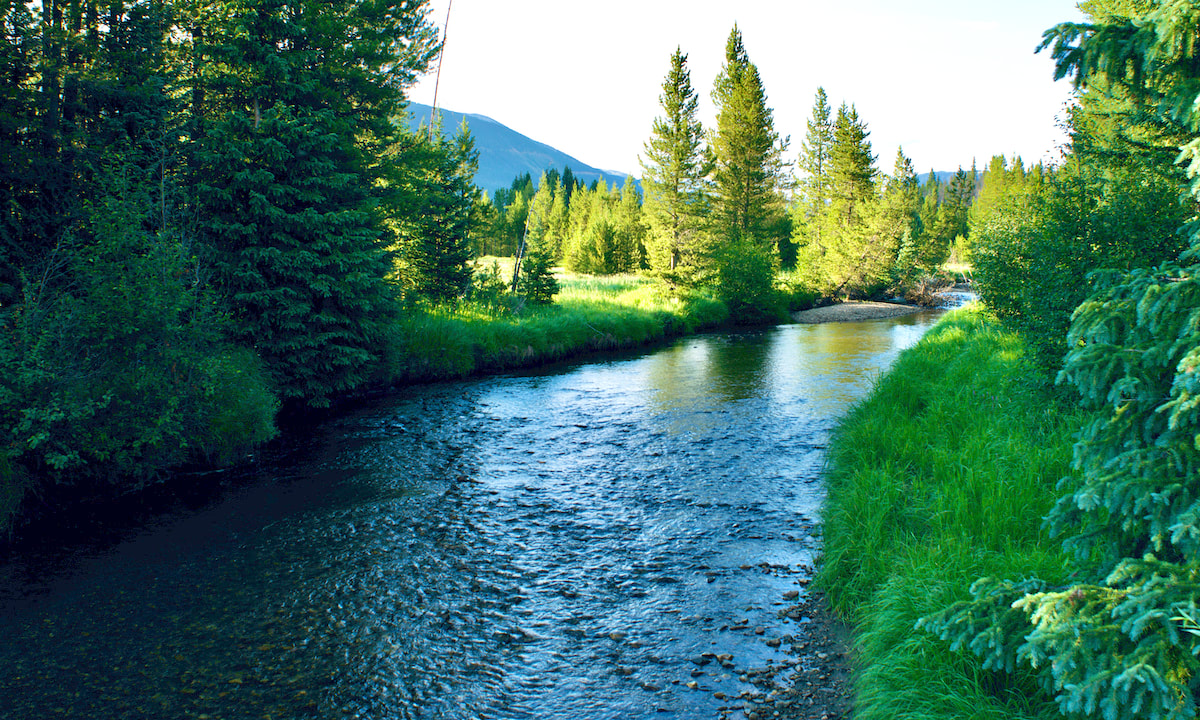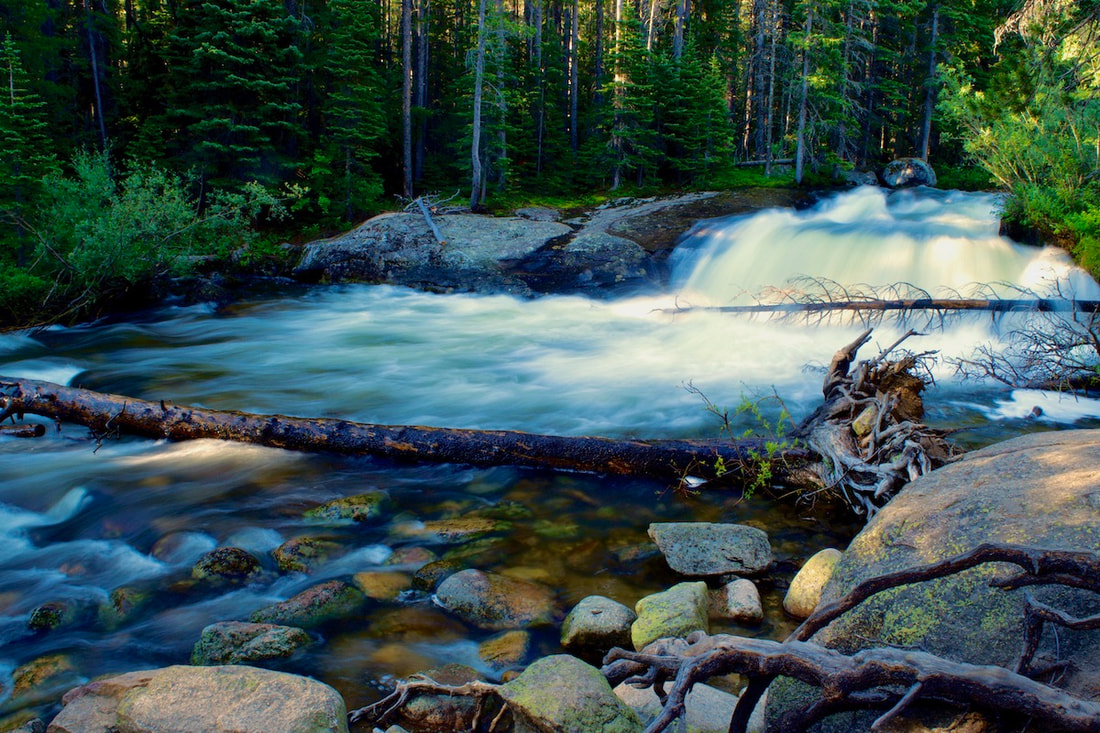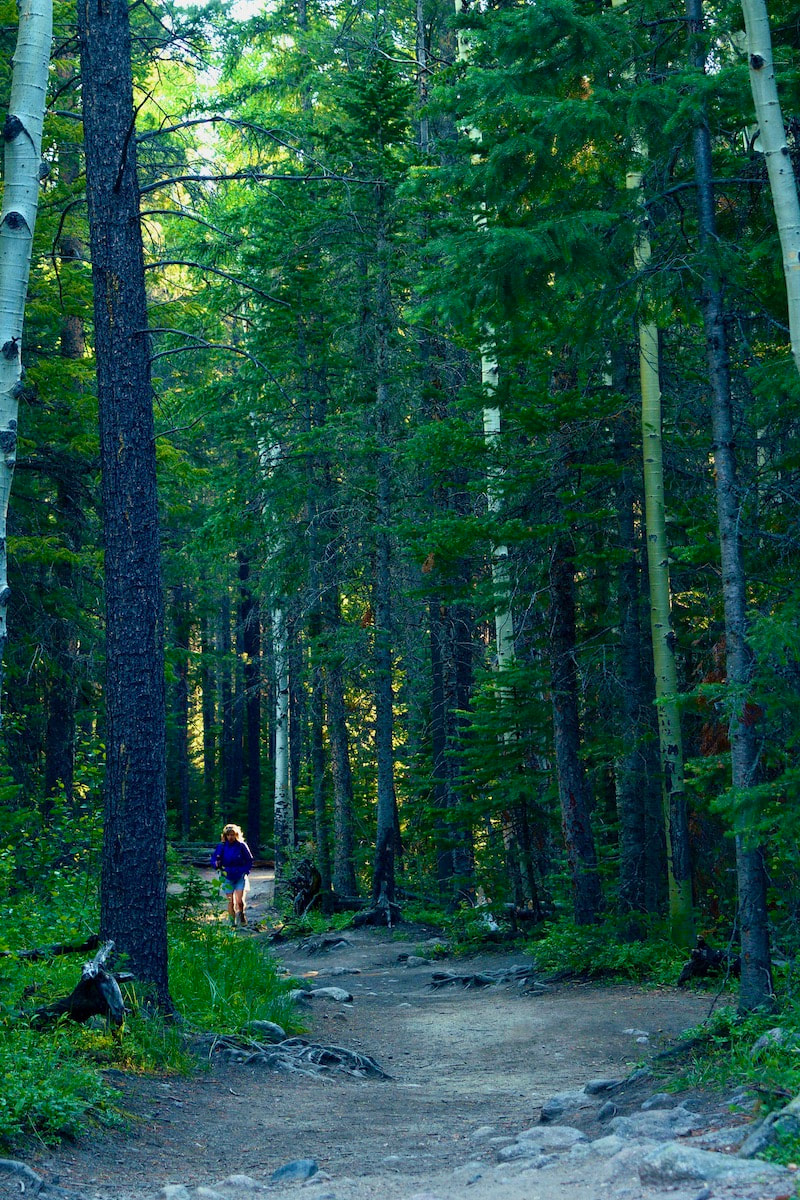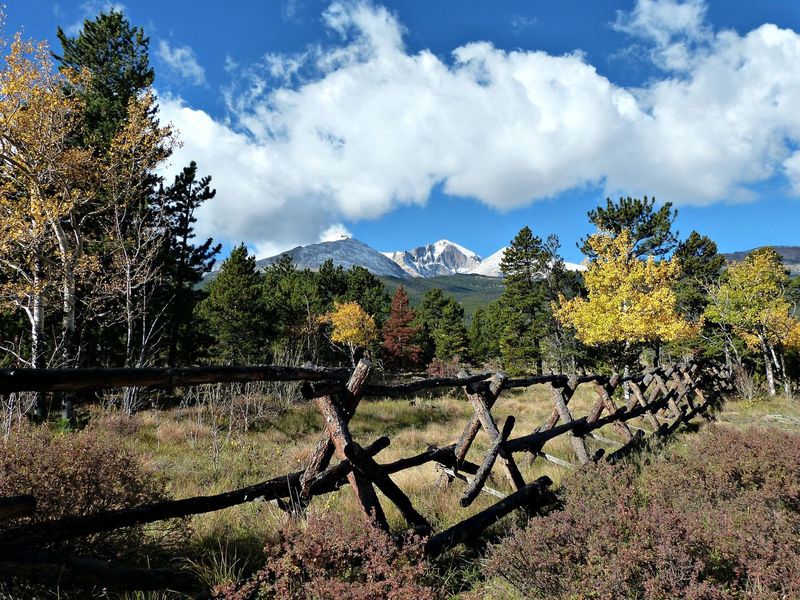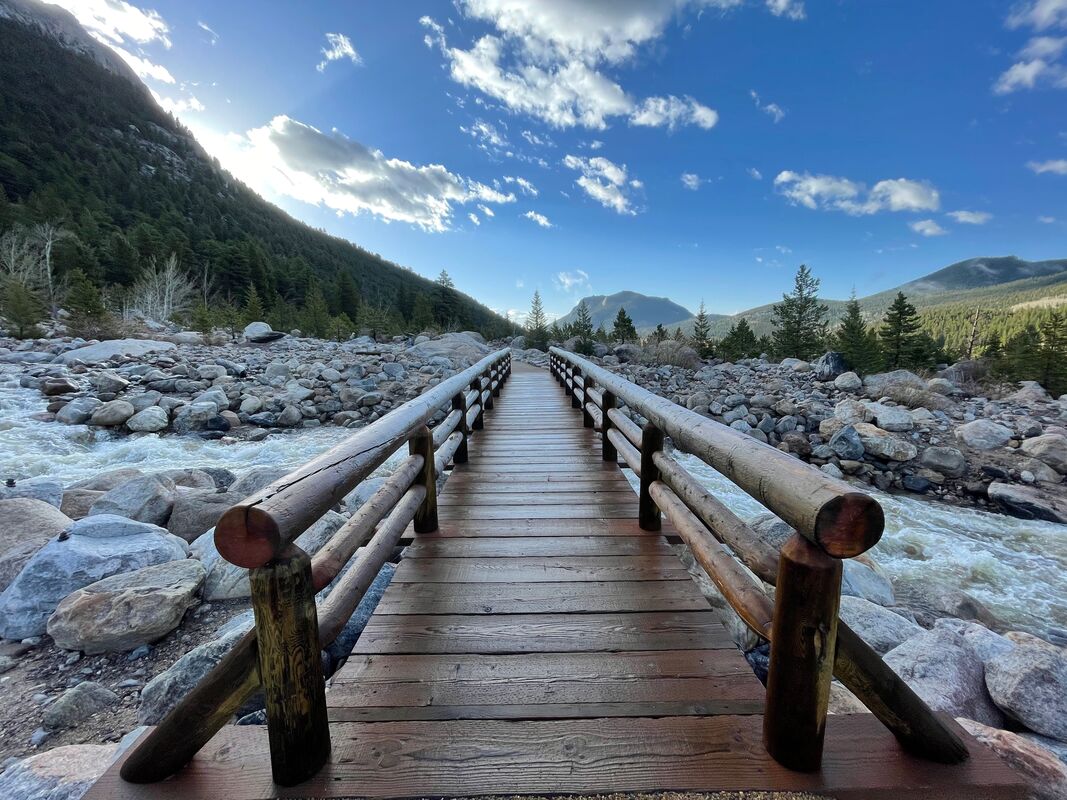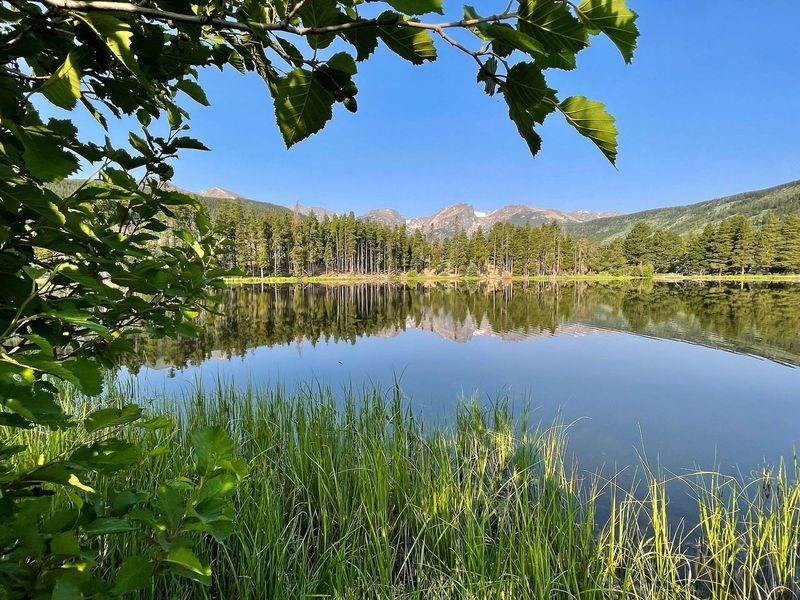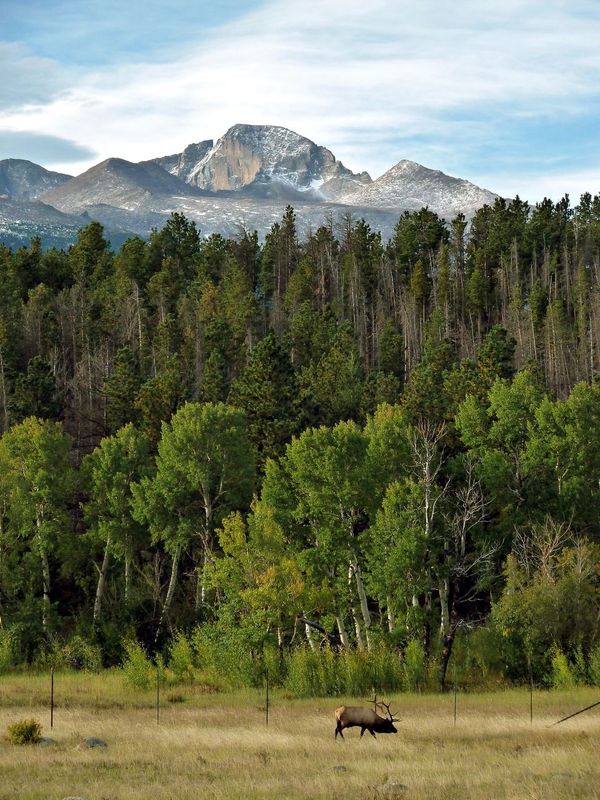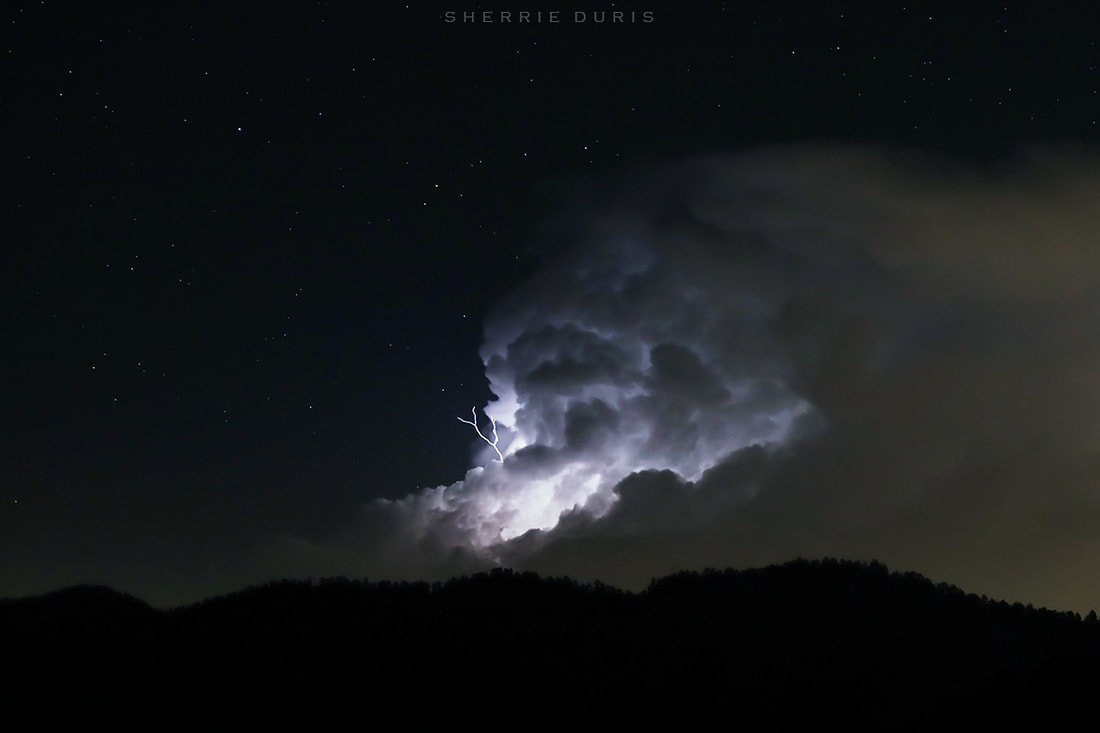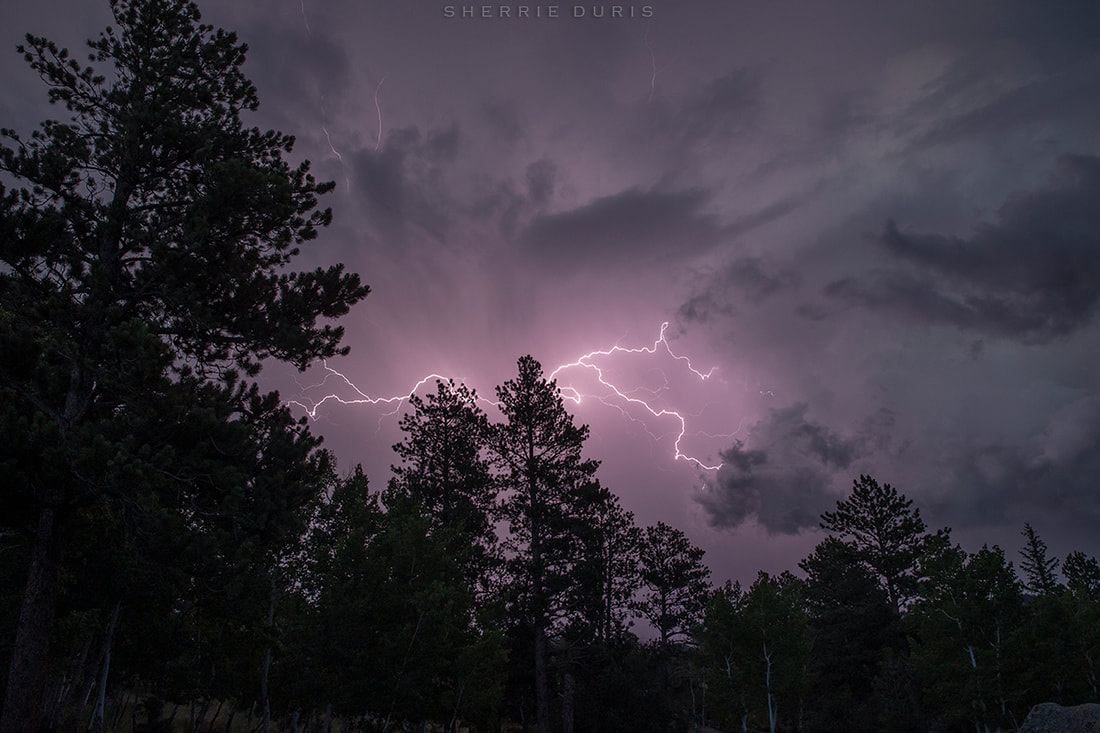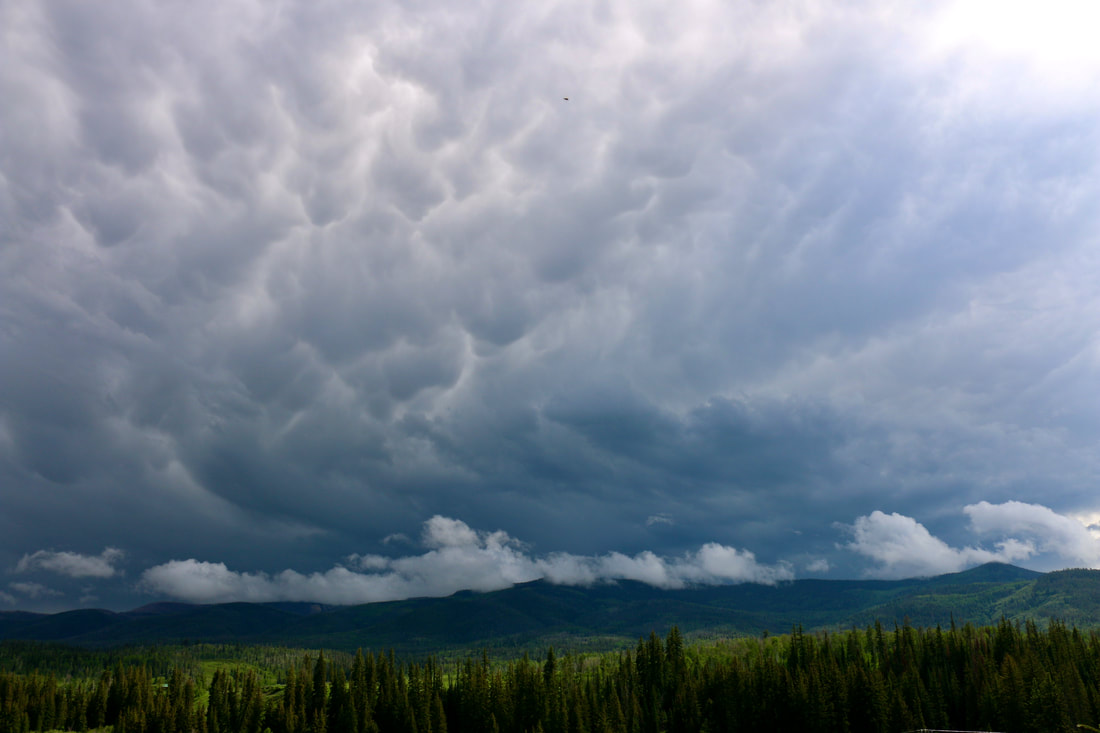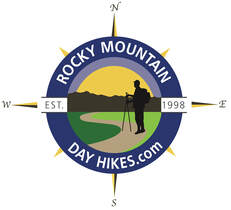|
Notes from the Trail
|
|
The History Behind the Names of Popular Destinations in Rocky Mountain National Park By Jamie Palmesano, Brownfield’s all photos by Jamie Palmesano When you hike Rocky Mountain National Park, you're moving through a landscape of jagged peaks, roaring waterfalls, and shimmering lakes. You're also walking through history—a living museum of stories preserved in the names carved onto trail signs and listed on maps. Behind the summits and streams is a tale of exploration, tribute, or natural wonder. Each step is a bit more meaningful when you know the stories behind the landscape. Rocky Mountain National Park was officially established on January 26, 1915, after years of advocacy led by naturalist Enos Mills and other conservationists who recognized the need to protect this extraordinary wilderness. Long before it became a national park, the area was home to Native American tribes, including the Ute and Arapaho, who traveled, hunted, and lived among these rugged landscapes. With its designation, RMNP became one of the earliest national parks in the United States, preserving a stunning diversity of alpine tundra, dense forests, beautiful lakes, and soaring peaks for future generations. Today, Rocky Mountain National Park spans 415 square miles and welcomes millions of visitors each year, offering a timeless reminder of America’s natural beauty. Rocky Mountain National Park is home to approximately 125 named peaks — with elevations ranging from just over 8,000 feet to the park’s tallest summit, Longs Peak at 14,256 feet. There are over 60 peaks above 12,000 feet. There three main ranges in the park:
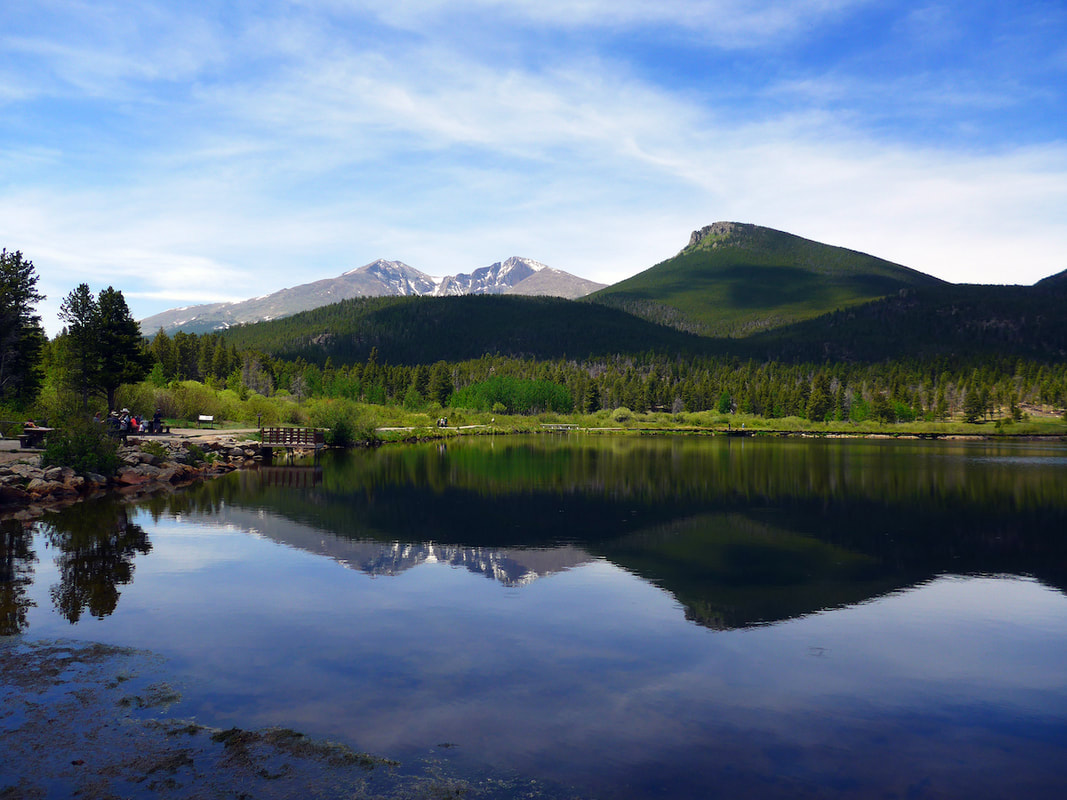 Longs Peak and the Estes Cone. Longs Peak and the Estes Cone. PEAKS Longs Peak - Named for Major Stephen H. Long, who led an 1820 expedition into the Rocky Mountains. Although Long himself never climbed the peak, his name became forever tied to this towering 14,256-foot summit—the only "fourteener" in northern Colorado. Mount Meeker - This neighbor to Longs Peak honors Nathan Cook Meeker, a visionary who helped found the Union Colony in Greeley, Colorado. His tragic death during the Meeker Massacre of 1879 adds a somber note to the mountain's story. Estes Cone - Joel Estes, a Kentucky-born pioneer, discovered and settled the Estes Valley in 1859. Estes Cone, a striking peak to the south, bears his name as a testament to his influence on the area's early development.
Rocky Mountain National Park boasts approximately 147 named lakes, encompassing a diverse array ofof alpine and subalpine bodies of water. These lakes range from easily accessible spots like Bear Lake to remote backcountry gems such as Lake Nanita. Notably, many of these lakes are glacial in origin, nestled beneath the park's towering peaks and offering stunning reflections and serene landscapes. Rocky Mountain National Park is home to over 30 named waterfalls, each offering unique beauty and varying levels of accessibility. These waterfalls are scattered throughout the park, with some easily reachable via short hikes, while others require more strenuous treks into the backcountry. Notable examples include Alberta Falls, Adams Falls, Ouzel Falls, and Chasm Falls, among others. Many of these waterfalls are particularly stunning during the spring and early summer months when snowmelt feeds their cascades.
landscape. The name preserves a rare Native American place name still in use today within the park. A fun fact is that in 2022, Lake Haiyaha gained extra fame when a rare event (rock flour runoff from nearby glaciers) turned its waters a striking turquoise color. Bierstadt Lake - Named in honor of Albert Bierstadt, a 19th-century landscape painter known for his dramatic portrayals of the American West. Though Bierstadt never painted this specific lake, his work inspired a generation to value the wild beauty of places like the Rockies, fueling early conservation movements. Sprague Lake – Honors Abner Sprague, an early homesteader, guide, and lodge owner in the Estes Park area. He was a strong advocate for national park status. The next time you lace up your boots and head into the park, take a moment to notice the names on trail signs and maps. Each one is a story, an echo, a whisper that these wild places keep the memories of old alive and well. And by hiking them, you honor the legacy of those who understood the magnificence of this remarkable land.
0 Comments
by Murray Selleck There is a small window of opportunity to bike Rocky Mountain National Park’s (RMNP) Trail Ridge Road with virtually no motor vehicles. This brief time frame is after the huge snowblowers have cut their way through the massive snowdrifts across the top but before the gates on the Estes Park and Grand Lake sides of the park have opened. There is a trick to accomplishing this ride and, of course, it’s called timing. Each year RMNP opens Trail Ridge Road to all comers around Memorial Day. Passenger cars, Sprinter vans, huge motor homes, trucks with tow-behind trailers, and all manner of vehicles will soon be driving up and over this beautiful road. Once the gates are open to motor vehicles riding a bike on Trail Ridge is a gamble at best. Distracted drivers, narrow lanes, minimal shoulders, not many guard rails, steep drop-offs, and if you happen to have the bad-luck timing of one car passing you with another car oncoming this three-way-squeeze is harrowing at best! Weather has everything to do with timing this ride. Ideally, the road is completely plowed all the way across from Grand Lake to Estes Park before starting up. This gives you more options as far as how much elevation to climb and how far across you may want to ride. So once the road is cleared the next thing to do is watch the weather reports. When your weather window of opportunity appears don’t delay. You may not get another chance. One year a late May snow storm rolled over RMNP dumping and drifting a couple feet of fresh snow across Trail Ridge Road. By the time the road crew had cleared the road a second time it was already past Memorial Day. The gates opened and I missed my (mostly) vehicle-free chance to ride. (Note: You may encounter a handful of official RMNP vehicles on the road as they prepare to open Trail Ridge). In years past when the stars aligned and I’ve ridden Trail Ridge the ride has always been a highlight of my biking season. I look forward to it every year. The best way to describe biking Trail Ridge Road is it’s always an adventure. Each time is different and offers an opportunity to experience the subtle nuances and dramatic power of RMNP. The one given is to be prepared for everything. Bring plenty of warm/breathable layers for the climb up. Pack windproof shells for the ride across and descent. Have plenty of water, some energy snacks, gloves, a thin thermal hat to fit under your bike helmet, front and rear safety lights, and tuck in a measure of endurance. You’ll need all of this gear and plenty of resolve, as well. From either side of the park you’re looking at a minimum of 4,000 feet of lung sucking climbing to get to the top. The higher you climb the colder it will become. As you leave treeline behind count on the wind to pick up. They will swirl and gust from all directions and try their best to blow you off your bike. I have experienced winds so strong I’ve been blown from one side of the road to the other. As morning turns to early afternoon watch for the clouds to build blocking any warm sunshine and perhaps containing snow and thunder and disappointment as you see your idyllic day turn potentially hazardous. Make a few mental notes of where running rivulets of water from melting snow are crossing the road. On your way back down what was once water may have returned to ice. Check your speed because road bike tires on black ice is a prime spot to send you sliding. I’ve ridden up there leaning my bike into stout crosswinds struggling to keep myself upright only to have the wind suddenly let up causing me to swerve into empty air and just as quickly crosswinds from the opposite side hit me accelerating that swerve to the edge of the road and a drop off. Unnerving to say the least! I’ve also ridden in cold sunshine with snowflakes flying and my fingers so numb I couldn’t feel my brake levers. And then there are the rides on Trail Ridge with endless blue skies and warm chinook breezes and horizon to horizon beauty that makes me want to ride Trail Ridge again and again. I’ve climbed up the numbered switchbacks, over Milner Pass and the Continental Divide, pedaled 180 degrees around Medicine Bow Curve while catching my breath and checking my motivation seeing all the climbing and elevation gain yet to come, paused for a weather check at the Gore Range Overlook, felt great at Tundra Curves and Iceberg Pass, free-wheeled through the impressive Rock Cuts, and then begin the turn around calculation. How much farther across should I ride before I have too much climbing to do to get back up?
Wish us all weather luck when biking Trail Ridge this year. If I see you up there wave as we pass pedaling at 12,000 feet elevation - practically motor vehicle free. That’s pretty darn close to heaven. Side Notes: Here is the link to RMNP’s website page on biking the park: https://www.nps.gov/romo/planyourvisit/biking.htm Also, Yellowstone National Park and Glacier National Park offer similar biking opportunities on their iconic roads. Make a road trip out of it and ride all three this spring. Yellowstone NP: https://www.nps.gov/yell/planyourvisit/bicycling.htm Glacier NP: https://www.nps.gov/glac/planyourvisit/bicycling.htm by Dave Rusk
Upon seeing the Pasque flowers in the lower elevations of Rocky Mountain National Park, I often feel an emergence of my own, my inner hiker, longing for the trails of summer; even though they are still reporting 53” of snow at Bear Lake, with hopefully more spring snow on the way, I know it won’t be long. Will I be ready when the trails open up? Those early spring flowers are a reminder to prepare; I need to check my gear list, as well as my physical well being. But overall, I have seldom needed to concern myself with my physical ability to get out and hike. Until last fall. At the end of some of our longer hike days, I noticed a pang in the bottom of my right foot. Oddly, the pain grew worse after returning home and resting for a bit. I would often limp off for the kitchen, barely able to make it for a coffee cup refill. However, within a day or two the pain subsided and once again I felt ready for the next hike. After a few more weeks of fall hiking, the pain started coming earlier in the hike day until one day in late October, I was hiking all day with the dull pain. And then it stopped going away! It was time to give my foot a rest.
What surprised me was that the solution to the pain in the bottom of my foot was 8 inches away in my calf muscles. Searching, I first found an exercise where all I had to do was roll a frozen golf ball under my foot, but I experienced no change from doing that. A further search lead me to an article by Hiker Guy.com. That article included a 10 year old video on Self Massage for Plantar Fasciitis made by Bruce Mandelbaum. He recommended cross fiber friction, massaging across the calf muscles with the thumbs to break up the fibers. That worked great! Right away I noticed the pain starting to subside. Wanting to go further, I went for a visit with Patrick Martchink at the Estes Park Physical Therapy. He showed me, among other techniques, how to stand with my feet on a slightly angled up board stretching the calf muscles. Wow! That felt really good too. I had no idea how good it felt to massage and stretch my calf muscles. I had not recognized the tightness going on with those muscles. But now I stand daily on my slanted board, if only for a few moments, getting a little stretch on my calf muscles while I look out my window, waiting for my coffee water to heat up. I wondered what other stretches I might do for other hiking muscles. I had been noticing a little tightness on the top front portion of my legs, the quadriceps, and in particular the rectus femoris I think, especially when hiking on snow and ice or going downhill. Searching again, I found a video showing the Standing Quad Stretch as demonstrated by Workoutaholic. Standing on one foot, I bring the other foot back and grab it with my hand. Though not necessary, I bring my free arm straight out to my side. Here I get to practice some balance and grace while also keeping those quads loose. Others might feel the biceps femoris needing some stretching. I found a number of common stretching technics for working this muscle, but I liked a video showing how to Stretch Your Biceps Femoris made by Upright Health, whose motto is "Pain Sucks, Life Shouldn’t." No argument on that. A stretching routine I have used on occasion over the years is the Sun Salutation yoga exercise, so beautifully demonstrated in a video by Prabhuji. This is a series of forward and backward bending and breathing exercises that is to be done while facing the morning sun. I have done this most often when I have felt my back is out of whack and this routine was very effective for realigning things. If you are looking for a vitalizing morning warm-up, it is a wonderful whole body experience. If you want to prepare yourself for a summer of marvelous day hiking, now would be a good time to try to work any one of these four stretches into your daily habits.
By Ryan Jordan Backpacking is fundamentally simple:
But beneath this simplicity lies a journey toward mastery—a pursuit that has fueled my passion for backcountry travel for decades. Living in Estes Park, with Rocky Mountain National Park as my backyard, has given me an incredible landscape to refine my skills, test gear, and push the boundaries of what’s possible in the backcountry. The Path to Mastery I've approached backpacking as an artisan approaches a craft: with curiosity, discipline, and a desire to improve. Over the years, this mindset has allowed me to explore deeper, venture farther, and travel more comfortably in all seasons and environments. Here’s how I keep my passion alive: 1. Embrace Simplicity At its core, backpacking is about movement, rhythm, and freedom. Some of my most memorable nights in Rocky Mountain National Park weren’t on ambitious multi-day treks but rather on quiet solo trips—like the one where I bivvied under a clear winter sky in the remote northeast corner of the Park, frost forming on my quilt, the distant bugle of elk my only company. Traveling light allows me to be more present in these moments, focusing on the experience rather than the burden of my pack. 2. Understand Gear Performance A deep understanding of gear is essential. Knowing why certain materials perform well in specific conditions has helped me make informed choices. I recall a late fall trip to Long Lake when an unexpected snowstorm rolled in. My tent selection—a Dyneema single-wall shelter—struggled with condensation, reinforcing the importance of ventilation strategies. Every outing is a learning opportunity. 3. Optimize Gear Systems No single piece of gear exists in isolation. Each trip teaches me how different systems interact—how my quilt choice impacts my sleeping pad needs, how my layering system affects my shelter strategy. After years of refinement, I’ve built systems that work harmoniously, allowing me to adapt quickly to changing conditions. 4. Study Materials & Technology Learning about emerging technologies has shaped my evolution as a backpacker. I test everything from mesh base layers to open-knit high-loft fleece during my day hikes and runs in the Park. Ultralight tents and stoves and quilts and pads find their way into my overnight packs, where I test them in the shadows of Longs Peak or the Mummy Range. Staying on top of new developments helps me refine my approach and make smarter investments in gear. 5. Advance Your Wilderness Skills Gear alone doesn’t make a great backpacker. Skills do. Mastering navigation, weather awareness, campsite selection, and risk assessment has given me the confidence to explore remote areas safely. Whether it’s micro-adjusting my route based on avalanche risk in the winter or understanding how katabatic winds impact campsite warmth, every skill I learn allows me to travel with greater confidence. Rocky Mountain National Park isn't just my playground, it's my gear laboratory and proving ground, where I can push gear to its limits and test new skills. Mastery is a Process Backpacking isn’t about reaching an endpoint of expertise—it’s about continuous growth. That’s what drives me as an outdoor educator, and motivates me to share what I've learned to help others explore the majesty of Rocky Mountain National Park - and beyond - with comfort, safety, and confidence.
by Scott Rashid Colorado Avian Research and Rehabilitation Institute All Photos by Scott Rashid Few people are aware that there are six species of owls that inhabit the Estes Valley and Rocky Mountain National Park (RMNP). They range in size from the diminutive Flammulated and Northern Pygmy-Owls reaching a maximum length of about seven-and-a-half inches and weighing about two ounces, to the 24-inch, four-pound Great Horned Owls. The other owls found here are the Northern Saw-whet Owls, Boreal Owls, and the Long-eared Owls. All but the Flammulated Owls feed upon animals and birds. The Great Horned and Long-eared Owls use nests constructed by other birds such as Red-tailed Hawks, Cooper’s Hawks and even American Crows and Black-billed Magpies. The Great Horned Owls are the earliest nesting owl and most often seen owl in the area. These birds frequently begin their courtship in January, if not before, and begin nesting in March. The female lays between one and four eggs two to three days apart. But has been known to lay eggs more than a week apart. She begins incubating with the first egg. Incubation lasts about 35 days and is done exclusively by the female. Her owlets remain on the nest for about a month before they begin exploring their surroundings. Long-eared Owls are one of the more difficult birds to find nesting, as they are experts at remaining still and their cryptic coloration blends perfectly with their surroundings. Both male Great Horned and Long-eared hoot to attract females. These birds can be heard in the spring after dark. The Boreal Owl nests specifically in the high spruce-fir forests above 9000 feet. In that habitat they are the top avian predator. They are also the largest of the cavity nesting owls in valley and RMNP. Many of these owls remain on their territories year-round and feed upon the voles and birds in the area. Due to their larger size and strength, they can pre upon animals as large as red squirrels, small hares, birds large as Canada Jays, and Pine Grosbeaks. Due to their large size, they need to nest in a cavity constructed by a Northern flicker or a larger natural cavity. Once a female is attracted by the male, and she has accepted the cavity, the male is no longer allowed into the cavity. He spends his time hunting for the incubating female and later for the female and young. The young remain in the nest for about a month and frequently fledge in May or June. The Northern Saw-whet, Flammulated and Northern Pygmy-Owls all prefer the same habitat, as they have been found nesting in the same tree in different years. Their preferred habitat is a combination of Douglas fir, aspen, ponderosa, junipers, downed logs, openings in the forest and a water source. As for nesting, the Northern Saw-whet Owl begins nesting in March, the Northern Pygmy-Owls begin nesting in late April, early May and the Flammulated Owls begin nesting in May and June. All these owls have about a 30-day incubation period and their chicks remain in their nests for about 30 days before they fledge. The Flammulated Owls usually raise two owlets, the Northern Pygmy-Owls raise between two and five owlets and the Northern Saw-whet Owls if in a natural cavity have two owlets, but if they are using one of our nest boxes, they can raise as many as five or six owlets. This is because the nest boxes are much larger than a natural cavity, enabling more owlets to fit in the box and survive.
With the exception of the Flammulated Owls, the other species prefer to nest near water, as they often get dirty when capturing prey and need to bathe to clean their feathers. Being insectivores, the Flammulated Owls migrate to Mexico in the fall, remaining there until spring and returning in late April to mid-May. Flammulated Owls prefer moths, larvae and caterpillars. By Dan England Back before the Internet, hikers only had one tool to explore Rocky Mountain National Park. They simply called it the Dannen book. Even experts, the guides who led hikes at the YMCA of the Rockies, for instance, had a mantra: What Would Dannen Do? The book Kent Dannen wrote with Donna, his wife at the time, simply titled “Hiking Rocky Mountain National Park,” was the first comprehensive guide for traversing the national park when it was released in 1978. “It was the Bible for hiking for many years,” said Lily Melton, who along with Jack acted as the museum curators and historians for the YMCA of the Rockies. It seems hard to imagine today, when a google search for, say, “Lake of Glass” will give you dozens of hits on how to hike there. But the Dannen book made the vast world of the national park accessible to anyone with an urge to explore. “There were places Jack and I wanted to go, and we weren’t sure how to get to them,” Melton said. “There just wasn’t good trail information up until that point. But once it came out, there were people who came from all over the world who wanted to hike. It was THE book.” It seems sadly ironic, then, that Kent Dannen’s body was discovered Jan. 23 a half-mile from his home near Allenspark, on his 26-acre plot of land, after an extensive three-day search. Family members requested the welfare check after they hadn’t heard from him since Jan. 16. The Boulder County Sheriff’s Office does not believe his death was suspicious, unless the Coroner’s Office finds something unusual.
“We kept trying to encourage him to downsize, but he would say, ‘I’m out here with nature,’” Lanham said. “He was happy where he was. He loved it.” Lanham called him unique, even quirky, a description Dannen himself embraced, making note of it in one of his many books on hiking in the park. But he was hardly a recluse who holed up in the mountains. He loved giving presentations on the park for groups and the library, worked as a hikemaster himself for the YMCA and sang in his church, the Presbyterian Community Church of the Rockies in Estes Park. He helped develop a meditation trail for the church, a way to help people connect nature with God. “He was that kind of guy who liked to share knowledge, and he was huge into learning,” Lanham said. “Those were a joy for him.” The Dannens grew up in St. Joseph, Mo., not exactly a mountainous state, but Kent probably was inspired to write the book based on the many family vacations his parents, Dwight and Mary, took to the YMCA of the Rockies. They went so often that they admitted they felt bad about not showing their kids the whole U.S. and suggested a trip to California, Lanham said, until the kids, including Kent, insisted that they wanted to go to the YMCA again. The Dannens embraced their second home after that and became huge figures for the YMCA. Their father served as president of the board for many years, and so did Kent’s brother, Doug. Lanham’s husband, Curt, now serves.
“At the time, it was everything,” said Sybil Barnes, who worked as a local historian for the Estes Valley Library for 14 years in downtown Estes Park and had the Dannens give frequent presentations. “They were among the first of my generation who really got people to realize that there was a lot going on here if you just looked around a little bit and didn’t stay inside.” In his later years, Dannen raised Samoyed dogs for sled teams and enjoyed showing them as well, winning awards for both. He continued to update his seminal hiking guide: After the Flood of 2013, he told Lanham he needed to release a new edition to reflect the changes the angry water made on the landscape. He still had three dogs up until his last hike. It’s hard to speculate on what happened. Lanham said the cause of death was hypothermia, and he was found with a bump on his head. He may have slipped on an icy patch. She is sad her brother is gone, as are the rest of their family. “But we said to each other, ‘Can you see Kent in a nursing home? Absolutely not.’,” Lanham said. “Not that we want him gone, but he lived the life he loved until the end.” by Trenton Ming Elevation Peak Marketing Imagine casting a line into the crystal-clear waters of a mountain lake, surrounded by towering peaks. This is the magic of fly fishing in Rocky Mountain National Park. Home to a diverse array of trout species, including the iconic Greenback Cutthroat Trout, a species once thought to be extinct, has made a remarkable comeback thanks to dedicated conservation efforts. These vibrant fish, with their signature red markings, are a testament to the resilience of nature and the success of conservation initiatives. Sharing the waters of Rocky include other species like the Colorado River Cutthroat Trout, Rainbow Trout, Brook Trout and Brown Trout. Rocky offers anglers unparalleled opportunities. My own fly fishing journey began unexpectedly when I was given a fly rod by my grandparents when I was 14. It gathered dust for several years until an upcoming family vacation to Rocky ignited my interest. I spent months practicing my casting at my grandparents' pond in Kansas, eager to try my luck in the park's waters. Kansas didn’t offer many opportunities for pristine rivers and lakes filled with crystal clear water and trout so I made due with what was available to me. When vacation finally came that fall, my first attempt at fishing in Rocky was at Sprague Lake, and was surprisingly successful. I was instantly hooked. Since that day, I’ve spent countless hours on the water in Rocky and surrounding areas. One of my favorite fishing memories happened last summer. It was a Friday in early August and my wife, Hannah and I had taken a day off to spend in the park. We tossed around some ideas and landed on Fern Lake as a destination. I was bringing my fly rod and she was bringing a book and it was about to be an incredible summer day in Rocky. We positioned ourselves on a rock a few feet out into the water, perfect for me to cast and her to sit and read. I was having one of my most successful days on the water, it felt like every other cast I was landing a fish. We had about a 20-minute interruption in the middle of our day by a young bull moose who decided to see what all the fun was about. We had to leave our spot on the rock to give him some space to pass through. He eventually got in the lake and swam directly across to the other side. Thankfully the break in the action didn’t hurt my success. The fish were unphased by the giant intruder who churned up their otherwise calm water. Perhaps the best part about that day was that my wife, Hannah, after seeing first hand the fun that fly fishing can bring, decided she wants to now try her hand at fly fishing! Today, I'm not only an avid angler but also an aspiring fly-tyer, tying my own flies for future adventure just adds to my love of fly fishing. This summer, we plan to take several backpacking trips within the park, combining our love for hiking with the excitement of fly fishing in remote locations. If you are thinking of giving fly fishing a try I recommend going with a guide your first or maybe several times. This will help accelerate the learning curve of the technicalities such as casting, tying on flies, and even knowing what fly to use. At the end of the day, whether you catch anything or not, nothing beats experiencing the beauty of Rocky. Fly fishing is an incredible way to experience the park. It forces you to slow down and truly focus on your surroundings, noticing details you might otherwise miss. Spending more than a few minutes at a lake or stream reveals a world of wildlife you never knew existed, or otherwise would have missed. The experience of watching that young bull moose never would have happened had we not been spending extended time at Fern Lake. The sheer amount of life thriving in these waters is astonishing – something I never would have fully appreciated without taking up fly fishing. The tranquility and the solitude of spending time in a single location is incredibly rewarding. Some of my favorite fishing spots in the park include: ● Fern Lake: A moderate 7.6-mile round trip hike from the Fern Lake Trailhead. (Learn more about the trail HERE) ●Lake Haiyaha: A moderate 4.2-mile round trip hike from the Bear Lake Trailhead. (Learn more about the trail HERE) ●Moraine Park: Easily accessible from Bear Lake Road, offering convenient fishing opportunities for those seeking a shorter excursion. I typically do not begin my fly fishing season in the park until late May or June. Spring run-off will be very high at that time of year and personally, I prefer to stick to the lakes during early season fishing. In the meantime, many enjoy casting a line in Lake Estes or in the Big Thompson Canyon as there is almost always open water in these areas, even through the winter. Remember to practice LEAVE NO TRACE principles while exploring Rocky, especially when engaging in activities like fly fishing. Always consult the official Rocky Mountain National Park website HERE for current fishing regulations and closures. Fly fishing in Rocky Mountain National Park offers a unique way to connect with the park's natural beauty and appreciate the intricate ecosystem of life within its waters. by Edrian Norris From the rugged mountain environments to wildlife and alpine lakes, Rocky Mountain National Park has something for everyone. In the winter, camping enthusiasts will also enjoy the park's Aspenglen Campground. Most recently, the Park announced it would host snowshoe and ski tours starting in January and through Late March, taking place at various locations inside the park near Grand Lake. The 2-hour guided snowshoe tours will have park rangers sharing their knowledge about plants and wildlife in the area as participants walk through hilly, snow-covered meadows. Meanwhile, cross-country ski tours are set to begin on January 18 and will continue through March 15. Of course, experienced hikers and campers who prefer having their own itinerary are also welcome to do so. However, ensuring you're taking care of your eye health in the Park's high altitudes is important for a more comfortable and enjoyable hiking experience. In this post, we'll be sharing some high-altitude eye care tips for hiking in Rocky Mountain National Park: Wear sunglasses While sunglasses are typically associated with sunny summer days, eye health experts have long insisted on the importance of wearing sunglasses even when it's cloudy or dim outdoors. This is because clouds don't block UV rays, leaving you vulnerable to UV overexposure even when it isn't sunny. In our post reviewing winter gear, we highlighted the Julbo Aero sunglasses, which feature photochromic lenses in a semi-shield shape, helping protect the wearer's face from cold winds at high altitudes. If you already wear glasses or contacts for corrective purposes, you don't have to ditch them in favor of shades. In this case, you can opt for prescription sunglasses which are easily available in physical stores and via online retailers. Sunglass Hut offers a wide range of prescription shades from different brands, including sports and activity brands like Oakley and Costa. Aside from prescription lenses, you can also go for lens upgrades or coatings like polarized lenses to eliminate snow glare and harsh reflections, as well as semi-shield silhouettes to provide more coverage from the high altitude weather. Consider goggles If you're especially sensitive to the cold or the winds, you may want to consider goggles. When hiking or camping at high altitudes, the cold and harsh winds can cause problems for your eyes, including dryness, irritation, and possible particles getting in your eyes. In this case, goggles offer more airtight protection, ensuring outdoor elements don't hit you in the eye and parts of your face. Goggles also tend to offer a wider field of view, which can be crucial for navigating complex terrains. Nowadays, there are different kinds of goggles you can find depending on your needs and preferences. A collaboration between visual artist Shantell Martin and Anon in 2023 introduced an innovative magnetic face mask called the Sync Goggle. These goggles used Anon's M-Fusion magnetic latch system to secure lenses and remain lightweight. If you're worried about strong winds at high altitudes, this magnetic technology can be good for your peace of mind. However, goggles do have a problem of occasionally misting depending on the weather. As such, you may still want to keep a pair of sunglasses handy. Pack water and snacks Finally, one of the best ways to protect your eyes when hiking in high-altitude areas like Rocky Mountain National Park is to ensure your body is well-equipped for the weather conditions, especially in the winter. While packing adequate water and snacks is certainly necessary, you should also pay attention to hydrating snacks like fruits or dried fruits to ensure you have enough liquids. For other snacks, you'll want to focus on foods with lots of protein and carbs, such as crackers or bars. Meanwhile, experts recommend packing at least a liter of water per person every two hours of hiking. Most trails and itineraries for hiking Rocky Mountain National Park average between three and four hours, so you should pack accordingly. by Marlene Borneman Go to the winter woods: listen there, look, watch, and “the dead months” will give you a subtler secret than any you have yet found in the forest." Fiona Macleod, Where the Forest Murmurs Hike Rating: Moderate Distance: 6.6 Miles Round Trip Elevation Gain: 1,606 feet Sitting at 11,006 feet, Estes Cone can be a challenging peak in cold, snowy months. The trail most often used in winter is located at the Longs Peak Ranger Station at 9,400 feet. The Ranger Station is not staffed in the winter. Trail and weather conditions can change in a heartbeat especially in winter so check ahead with the Wilderness Office. There are days carrying snowshoes is a must as the start may only require spikes or no devices, but later the trail can become deep snow and could stop one in their tracks! The start climbs steadily for a half mile to the junction with the Eugenia Mine, Storm Pass and Estes Cone trail. Leave the Longs Peak Trail and turn right heading towards Eugenia Mine and Storm Pass. This section of trail is surrounded by aspen and conifer forest and loses a bit of elevation before reaching Eugenia Mine. You may spot moose and often snowshoe hares. Approach a small footbridge crossing Inn Brook and arrive at the Eugenia Mine ruins. In the early 1900’s a miner from Chicago settled at what is named Eugenia Mine with his family to mine for gold. After a few years of laboring with no results he abandoned the site. Remnants of a log cabin, rusty pans and mine tailings are all that is left. It is enjoyable to explore the site and imagine the life attempting to mine for gold. Of course, nothing leaves the Park so please leave any item where found. About a half mile further a lovely meadow is reached named Moore Park which is often blown clear of snow. This spot provides a nice view of Estes Cone’s summit. Continue through the meadow entering the trees once again and coming to a junction with Storm Pass and private property. Take a left heading northwest to Storm Pass. At this point the trail can become windblown with snow drifts making it difficult to follow in winter. Climb 2.6 miles to Storm Pass with another trail junction. At this junction it is 0.7 miles to the summit with some difficult terrain to cross: snow covered rocks, ice and tree roots. Turn east toward the summit of Estes Cone. The snow/ice-covered trail can be difficult to follow. If proper equipment, (i.e. spikes, snowshoes, and warm clothing), is not carried it can be dangerous to continue, so turning around is ok. Spikes and/or snowshoes are necessary most of the time to reach the summit from here. The last half mile becomes especially difficult if one is not familiar with the area as the trail climbs very steeply up several switchbacks through a thick forest. There are cairns along the trail; however, these maybe covered in snow. Climb up the switchbacks, reaching the top of the ridge before veering south until a steep gully is reached. Before climbing into the gully look west for a breathtaking view of Longs Peak. This gully has large loose rocks to negotiate that are often ice covered so take care and go slowly. Top out on the rock outcropping and turn east heading through fine looking limber pines to another gully to scramble to the summit. The summit of the cone offers outstanding views of Longs Peak, Twin Sisters, the Mummy Range, Lily Lake, and the Estes Valley. Retrace your steps back to the trailhead. Five-point moves may be necessary coming down (hands, feet and butt) especially in the gullies and on the switchbacks! This winter, why not try a trek to a Rocky Mountain National Park classic, Chasm Lake.
It is important to pay attention to the conditions, namely the weather. Besides looking for a sunny day, check the winter weather for the wind forecast; strong winds and blowing snow create hazardous conditions. When winter trekking on this trail, plan to bring both snowshoes and good traction devices like spikes, and pay special attention to winter wear. When deciding your winter wear, if it’s a good weather day, the conditions could be anything from almost balmy to bitter cold in the shade. Be prepared to layer up or down. If, for whatever reason, you have decided to go up on a nasty day, goggles are a must. But do check the weather the night before. The Trail Out of the car, you are at the Longs Peak trailhead with a beginning elevation of 9,400’. The lake from here is 4.2 miles away and 2,360’ higher. The trail begins in smaller lodge pole pine, the pines are not as tall here because of the higher elevation. Although it is also possible that the area could have been logged during the time of the Enos Mills Longs Peak Inn era of the early 1900’s, and so they may not be that old either. The January trail is likely to be completely snow covered and snowshoes work best for this first part in the trees, although depending on how long it’s been since it snowed, you might find the trial is packed enough that snowshoes are not necessary. 'Tis better to carry them and not need them than to not carry them and wished you had. It's also better to wear them than to post hole and wreck the trail.
Shortly after that, the trail switchbacks at about a 140 degree angle to the south and you begin to steadily gain elevation. You are rewarded at the end of that traverse with a switchback at Alpine Brook, a nice little babbling brook in spruce and probably why the trail goes to this point. It makes for a pleasant early resting spot, even in winter.
Not long after, the trail turns left crossing tiny Larkspur Creek and begins a traverse up and across an east facing slope, so there are more spruce now. Four switchbacks more continues to gain elevation before crossing one more notable bridge at Alpine Brook. At this point, you are traveling through the treeline transition zone, an elevation above which no trees grow, about 11,000’. Isabella Bird wrote upon entering the Estes Valley that, “The scenery is the most glorious I have ever seen, and is above us, around us, at the very door.” So it is as you enter into the open alpine zone and Longs Peak comes into view. Here you will find an entirely different looking landscape than the one you just walked out of, and potentially an entirely different weather situation in the winter. From here, the lake sits another 797’ higher, and the trail is all in open, exposed alpine terrain. Consider the weather from this point on. During the winter months, the summer trail in this open area can be difficult to follow due to the trail being covered over with blowing snow. Even the winter trails made by previous snowshoers can get covered over easily and you may find yourself having to make your way as best you can picking up the trail when it becomes is visible. Because this stretch can be sketchy with the wind blowing the snow off in most areas, while accumulating in other areas, switching over from snowshoes to spikes can make the travel go easier. Also, make sure your wind jacket is handy if you have not put it on yet.
“When I woke, the moon was high shining through the silvery branches, whitening the bald Peak above, and glittering on the great abyss of snow behind, and pine logs were blazing like a bonfire in the cold still air. My feet were icy cold that I could not sleep again, and getting some blankets to sit in, and making a roll of them for my back, I sat for two-hours by the campfire. It was weird and gloriously beautiful.” You will be traveling in a west to south west direction, steadily gaining elevation as you go. You are looking for a saddle of sorts on the south ridge of Mt Lady Washington up ahead. Once reaching that low spot on the ridge, you will find a trail sign indicating a trail branching off to the right, leading towards Granite Pass for Longs Peak and traversing the north eastern side of Mt. Lady Washington. However, our trail at this point starts across and under the south east ridge to begin the last third of your hike. Snow accumulates along this next stretch of trail. Snow blows over the ridge you are now trekking under and settles, creating a snowfield that can last clear into June. Thus, the snow that falls here can be wind protected and softer, allowing for White-tailed Ptarmigan to nestle into the hillside among the rocks. Besides being somewhat wind protected, there are many days of sun along here and you might notice them sunning while nestling. But they can be amazingly difficult to see. You may see one at first, but then as you stare at it, you might notice a few more black eyes blinking at you. They might also be sitting on willow branches that they can poke their beaks down to and nibble on. According to the Rocky NPS website, they predominantly eat buds, leaves, and seeds, and are highly dependent on willow, especially in the winter. "They have been known, like other members of this group, to swallow grit to help grind coarse food in their gizzards. White-tailed Ptarmigans are permanent residents and lead a very sedentary lifestyle in winter. Warm weather may stress the White-tailed Ptarmigan. It can be seen bathing in snow when the temperature is higher than 21° C (70° F)." Rocky NPS
After a couple of tricky spots on this snowfield, you finish the traverse and cross onto an open flat alpine meadow, a large ledge left long ago by glacial retreat. The water from Chasm Lake, still higher up and not in sight, travels through this narrow spot before waterfalling down to Peacock Pool below. You will have to find a way across this very short stretch of frozen water, which can be polished and quite slick. But soon enough you are onto the open flat area and looking up at the looming cliff walls that is The Ships Prow emerging between Meeker Mtn and Longs. Searching for the final way up to the Lake, the direction to head is south, across the meadow. The trail here is often blown clear and easy enough to follow. It will take you to the base of a rocky area. Carefully work your way up. And then finally the frozen Chasm Lake. Unless you happen to come up not long after a snow fall and before any wind, the lake will be clear of snow. There are very large rock areas all over along the eastern edge of the lake that are enjoyable to hang out on in the summer, but you could be greeted with a cold steady breeze during the winter. Also, the sun sets behind Longs very early in the day this time of year and once that sun is gone, the temps can drop quickly. Sometimes sunny pockets protected from wind can be found among the rocks to re-hydrate and re-nourish before making the return trek. It can also be a good spot to pull out a thermous of something warm to drink or even fire up a small cook stove to heat up water for soup. Because once are here, you have made it, and it is worth clinking your water bottle with the rocks to celebrate this place. This amazing place. This weird and gloriously beautiful place. by Murray Selleck Fox River Socks may be the best Christmas stocking stuffer gift you can choose. Of course, the gift receiver may think, “Bah humbug” the moment the socks are unwrapped. However, once they pull the new socks on their feet the feeling of being underwhelmed is replaced with the comfort of a warm Christmas hug! So, so, good! These past few months I’ve been testing a few pairs of Fox River socks in my hiking and backcountry ski boots. The comfort is excellent. The durability is great. They show no signs of thinning or premature wear after using them and washing them consistently for months. The two socks I’ve been wearing are the Matterhorn LW Crew and Ramble LW Crew. While they are both pretty similar in fit and performance there is a difference. The Matterhorn is primarily made up with merino wool and the Ramble is knitted up with majority Coolmax®. One is made with more natural fibers and the other is synthetic. The Matterhorn LW Crew: The Matterhorn uses 35% merino wool. Merino is incredibly popular because it is a natural fiber, renewable, anti-microbial, biodegradable, and feels great next to your skin. It also has the ability to self regulate temperature. With the addition of silk (13%), polyester (6%), and spandex (2%), the sock has increased durability compared to a sock using 100% wool. And with the silk you’ll notice a nice smooth and soft feel to the sock. Shall we say silky? Yes, the smoothness with the silk is noticeable. The spandex adds a touch of snugness to the sock and stay-in-place performance. They won’t shift on you inside your footwear or slip down your shins. The Ramble LW Crew: The Ramble is a synthetic sock but that is no reason to shy away from its performance, comfort, and fit. The majority fiber is Coolmax®. Coolmax is made up of 60% recycled fibers. It is also a hollow fiber that allows it to wick moisture away from your skin, trap heat to keep you warm when you need it, expels heat and moisture when you need it, and dries quickly. The rest of the sock is made with nylon, polyester, and spandex. Same with the Matterhorn, these additional fibers help create a snug fit around your foot that won’t shift, bundle around your toes, or slip down your calf. Shared Features: Both models of socks share a left and right design, memory fit construction, hold their shape nicely, add foot support around the arch, absorb shock through the heel and toe protection with additional padding, and offer a nice, smooth, flat toe seam. This all adds up to both of these models of socks performing well and fitting and feeling nice on your skin. It may be a toss up between these two socks as to which one becomes your favorite. I like everything there is to like about using Merino wool not only for socks but for clothing, too. My only (slight) personal concern is how quickly it dries. This comment probably pertains more to next-to-skin base layers (torso and legs) rather than socks but if you accidentally dunk your feet into a creek... Wool does insulate when wet but it does take time to dry. And if it is next to your skin it may feel clammy until then. This consideration is really only important when you know your day will be filled with lots of climbing, breaking a deep snow trail, winter camping... Times you know you will be working hard and breaking a sweat. The key to staying warm in the winter is staying dry! Synthetics, however, dry quickly even while you’re wearing them. Synthetics are oil derived and it is good to seek out recycled synthetic products whenever possible. Good for Fox River for doing exactly that… A LIttle About Fox River: Fox River is USA company and they do all their knitting/manufacturing in Osage, Iowa. They have been around since 1900 and their longevity proves they know quite a bit about design, production, and offering great value with their products. You get a lot of value with their socks because they fit and perform excellently and they last a long time. Final Thoughts: Socks are every bit as important of an outdoor gear selection as any big ticket item. They are our first perception of comfort before we lace up our shoes or buckle our boots. They provide trail pounding cushioning. They keep the cold at bay in the winter and expel heat and sweat in the summer keeping us comfortable. Great socks provide all day comfort. If you haven’t considered Fox River in the past you’ll be happy when you do in the future! Where to Buy: Colorado Front Range Stores offering Fox River are Jax Goods (Fort Collins, Loveland), Whiteside's Boots (Greeley and Loveland), and the YMCA of the Rockies (Estes Park). Fox River socks are also sold through their website foxsocks.com. by Trenton Ming Owner of Elevation Peak Marketing Rocky Mountain National Park, a breathtaking natural wonder of Colorado, offers endless beauty and adventure. Its majestic peaks, serene lakes, and diverse wildlife draw millions of visitors each year. With as many visitors that make their way here each year, there are just as many unique perspectives and experiences within the wilderness of Rocky. As we immerse ourselves in its beauty, it's crucial to remember the importance of giving, and not just taking. The park provides us with countless gifts: opportunities for adventure, breathtaking scenery, the chance to connect with nature, wildlife viewing, and community and connection just to name a few. Even though we may not always think in terms of Rocky giving to us, it is important to take the time and reflect with this mindset. We can reciprocate this generosity in various ways, which is truly the least we can do for the park that we all love so dearly. Volunteering: By volunteering through organizations such as the Rocky Mountain Conservancy, we can directly contribute to the park's preservation. Whether it's trail maintenance, wildlife monitoring, or visitor education, volunteering allows us to give back and ensure the park's continued health. Practicing Leave No Trace: Adhering to Leave No Trace principles is essential for minimizing our impact on the environment. By packing out what we pack in, respecting wildlife, and following rules and regulations, we can help protect the park's delicate ecosystem. Appreciating Nature: Taking the time to truly appreciate the park's beauty, whether it's marveling at a stunning sunset or learning about the local flora and fauna, can deepen our connection to nature. By understanding and respecting the park's ecosystems, we can become better stewards of the land. There is something special about taking the time to learn Supporting Conservation Efforts: Donating to organizations like the Rocky Mountain Conservancy helps fund vital conservation projects, such as trail restoration, habitat restoration, and scientific research. These initiatives ensure the park's long-term health and sustainability. Sharing the Experience: By sharing our experiences and knowledge of the park with others, we can inspire future generations to appreciate and protect this natural treasure. Whether it's through social media, personal stories, or educational outreach, spreading the word about the park's importance can have a significant impact. Learning About the Park's History and Culture: By learning about the history and culture of the park, we can gain a deeper appreciation for its significance. This knowledge can help us to be more mindful visitors and better stewards of the land.  About the author: Trenton Ming is an avid hiker and fly fisherman. He has hiked thousands of miles in RMNP, often to remote destinations. He grew up in a small town in Kansas and now calls Estes Park home, owning local marketing agency Elevation Peak Marketing. Trenton is our newest contributor to Rocky Mountain Day Hikes and Hike Rocky Magazine. We're excited to read what adventures he writes about next! by Marlene Borneman, author of Rocky Mountain Wildflowers 2Ed., The Best Front Range Wildflower Hikes, and Rocky Mountain Alpine Flowers. Hike Rating: Moderate Distance: 7.6 miles from Trailhead plus 1.4 miles on road from Shuttle/winter parking. Total 9 miles round trip in winter Elevation gain: 1,390 feet Rocky Mountain National Park offers a variety of winter hikes. Wearing winter spikes, snowshoes or skis are the most suitable forms of recreation. A popular destination in this frosty season is Fern Lake when the trail transforms to a carpet of shimmering snow. The trek to Fern Lake begins at the Summer Shuttle Stop 0.7 mile from the Fern Lake Trailhead as the road to the trailhead is closed from end of October through May. Be prepared for current conditions and weather by checking ahead at the Wilderness Office. Both trail conditions and weather can change rapidly. Rocky is often referred to the Land of Extremes for good reasons! Early in the season you may be wearing spikes for an icy start, but as you gain elevation you may need to switch to snowshoes. It is good practice to carry snowshoes strapped to your pack to avoid postholing. Postholing is a term used when with each step you are sinking deep into the snow past your knees which makes walking very fatiguing. Best to avoid. If there have been recent heavy snowfalls, you can start from the parking lot in snowshoes. Top Left: The icy Pool of the Big Thompson River. Top Right: Keep your eyes open for moose! Bottom Left: Spider on the snow. Bottom Right: Moose print. All photos by Marlene Borneman. Once at the trailhead it is an easy 1.75 miles hike up to The Pool, a deep collection of swirling water in the Big Thompson River. Hiking in the snow provides opportunities to investigate animal tracks, deer, moose, even field mice. Often these animals are seen along the snow-covered banks of the beautiful Big Thompson River. Spiders of all varieties may be seen on the snow in search of tiny insects. About a mile and half from the trailhead look to your right (north) “The Jaws” maybe visible. “The Jaws” is a large ice formation formed from water dripping down steep rock slabs creating a dramatic icefall. Technical ice climbers like to take on this challenge. Old Forest Inn trail sign and burn scar from the 2020 East Troublesome Fire. Photos: Marlene Borneman The next feature you reach is a backcountry campsite named The Old Forest Inn. The Forest Inn was one of the early rustic lodges located in Rocky Mountain National Park, built around 1913. The Forest Inn provided peaceful rest for hikers. In 1959, the remains of the Forest Inn were removed by the Park Service. The trail now becomes steeper with several switchbacks up to Fern Falls. Here the snow can become very deep. You will see evidence of the 2020 East Troublesome Fire. Stands of black, scarred trees in the glistening snow create a desolate landscape in winter. However, Fern Falls creates an intoxicating sparkling spectacle in the cold air. Fern Falls shows many faces in winter months, either completely covered in snow with only sounds of rushing water underneath, frozen water encased by snow sculptures, or cascades roaring down adorned by large sharp icicles or a mosaic combination. Leaving the falls, continue up a few more switchbacks. Soon you will see a hitch rack for summer horseback riders and just up a short hill Fern Lake comes into view. The shores of Fern Lake have a history of providing a restful spot for fishermen, hikers, and Park Rangers. Here stood Fern Lake Lodge, built in 1910 by Dr. William J. Workman from Kansas. His main interest was fishing and the lodge provided lodging and meals with some fishy stories thrown in. Later there were many others who managed the lodge with Rocky Mountain National Park taking over the property in 1958. Fern Lake Lodge was permanently closed in 1959. Due to the hazards of the deteriorating structure, the Park Service burned the lodge in 1976. Look slightly to the north and you will see the remains of the Fern Lake Patrol Cabin that was destroyed in the 2020 East Troublesome fire. This beautifully built sturdy cabin provided Park Rangers shelter when patrolling on official duty. In 1989 this Patrol Cabin was placed on the National Register of Historic Places. Maybe the cabin will be rebuilt one day. Fern Lake lies at 9,540 feet offering a striking vista more days than not with sunny blue skies overhead. Views of 12,129-foot Notchtop Mountain, 11,586-foot Little Matterhorn and 12,331-foot Knobtop Mountain make a picture-perfect backdrop to the shimmering frozen lake. Spike season has returned to Rocky Mountain National Park. That is to say, if you are heading out for a hike in the Park, you should plan on winter trail conditions and it would be a good idea to have some kind of traction footwear handy. Current conditions can create slick and icy trails. November is a good month to get acclimated for winter. Regulating body temperature while hiking during this transition season can be tricky depending on elevation, aspect to the sun, and of course the daily weather conditions. Be prepared to stop frequently to either layer-up or dress-down. Our trail pages offer up National Weather Service trail specific weather conditions and forecasts to help you to be better prepared. Check them out to know before you go. And don't forget to admire this season of change. Beautiful ice formations are forming along open water, various signs of wildlife can be noticed as they prepare for the winter months, and the lower sun on the southern horizon creates dramatic light and shadows. Changes are in the air during the month of November. We are now 36 days away from Winter Solstice. Dear Mtn Trail
A good trail for snowy mountain vistas on a sunny day. With the sun being lower to the horizon this time of year, try to be on the trail before 10am to capture the best lighting on the mountains for photos. Lumpy Ridge Loop
A lower elevation, longer loop hike. Good sunshine will keep the beginning of this trail along the south base of Lumpy Ridge snow free for much of the year, and some years the entire trail can remain snow free into November. But right now you can count on snow and ice covering over much of the trail on the back side of this hike. After your hike, stop in to Lumpy Ridge Brewery for an apes beer! Emerald Lake Trail
A good hike to get an early taste of winter. This alpine lake trail is popular no matter what time of year. Use this shorter hike to make sure you have all of your winter gear ready to go for this season. November is the month winter moves down to lower elevation in Rocky Mountain National Park. It can be a challenge for hiking as you will need to be ready for any and all conditions. So get out and enjoy the seasonal transition! by Scott Rashid Colorado Avian Research and Rehabilitation Institute Colorado Avian Research and Rehabilitation Institute As fall ends and winter begins, birds begin to move to their wintering grounds, or the areas where they will spend the winter months, where they hope food and water is plentiful. Some of the birds that nest here also winter here, but other birds simply arrive in September and October to winter here, here being Colorado and specifically the Estes Valley and Rock Mountain National Park (RMNP). Migration takes many forms, and in fact, there are multiple types of migrations. There is elevational migration, latitudinal migration. longitudinal migration, circular migration and leapfrog migration. Different species use these varying types of migration. For example, shorebirds move north through the center of the country, migrate in a more circular form. From their wintering grounds along both coasts, they simply move north through the center of the country as they can feed in the flooded fields during their spring migration. Yet when they migrate in the fall, the center of the country if filled with crops, leading them to migrate south via either east of west coast to winter along the coasts of the Atlantic, Pacific and the Gulf of Mexico, migrating in two large circles. Birds here in the west have an elevational migration. Birds including Clark’s Nutcrackers, Horned Larks, and American Pipits nest either on or close to the Alpine Tundra and winter in Estes Park or along the grasslands of Eastern Colorado. Another example of migration is leapfrog migration. American Crows in the west have this type of movement. For instance, birds here in Estes Park head southeast in the fall/winter and are replaced by northern birds from British Columbia and Alberta, Canada. The species that both nest here and spend the winter in the Estes Valley include the corvids; Common Ravens, American Crows, Black-billed Magpies, the jays, and the Clark’s nutcrackers. The three species of nuthatches stay here as do some of the Brown Creepers. Townsend’s Solitaires and American Robins remain here as do Chickadees. Mallards, Common Goldeneye and Common Mergansers remain as do the Canada Geese. Some of the birds of prey winter here as well. These include the Red-tailed Hawks, Bald Eagles, Cooper’s Hawks, Sharp-shinned Hawks, Northern Goshawks, Great Horned Owls, Northern Pygmy-Owls, Boreal Owls, and Northern Saw-whet Owls. Birds that migrate out of Estes Park and include, most if not all the warblers, hummingbirds, and flycatchers, Pine Siskins, Hermit and Swainson’s Thrushes, Ruby-crowned Kinglets, Blue-winged Teal and Flammulated Owls. The birds that will appear in the fall/winter to spend the colder months in Estes Park and other parts of Colorado include the three species of rosy-finches, Evening Grosbeaks, Snow Buntings, Northern Shrikes, Lapland Longspurs, Pine Grosbeaks, Dark-eyed Juncos, and Rough-legged Hawks. It is a good idea to begin putting out bird seed for the winter birds in mid-October before they begin arriving. Once they are here they will need food to either refuel to continue moving or enough food to keep them here for the winter. As for what type of seed to put out, sunflower seed is always a good bet, as is millet and suet. Keep your eyes peeled for any of these species. Look for Black, Gray-crowned and Brown-capped Rosy-finches, Oregon, Slate, and White-winged Juncos, Snow Buntings, Evening Grosbeaks, and White-winged Crossbills. What began as a few friends who love hiking together in Kansas has now grown into a group of 70+ women who love to hike in Rocky Mountain National Park! How did this community of women come together and what is it they gain by hiking together? Rocky Mountain Day Hikes asked a few questions to Jeri Brungardt and Cindy Coughenour, the founders of Women Hiking Kansas and Beyond (WHKSAB), to find out how this love of hiking brought scores of women together from the lower elevation undulating terrain of Kansas to the steep and high altitude trails of Rocky Mountain National Park. RMDH: Where in Kansas is Women Hiking Kansas and Beyond based? Jeri & Cindy: We are based out of Wichita and Salina, Kansas. Cindy lives in Wichita, and I live in Salina. We started the group when both of us lived in Wichita but since we are a Facebook group the specific location we are in is not a big detriment. RMDH: How did you come up with the idea and what need are you trying to fulfill? Jeri & Cindy: Cindy and I met through a work experience. We became friends and started hiking with each other and a few other friends. We would post our adventures on Facebook and had so many of our friends asking to go along with us. We would try to remember who asked to go along with us but then the list got too long. So we brainstormed this idea of having a real hiking group and see how many might really be interested. We truly had no idea how fast and how well the concept would take off and grow. The need we are trying to fulfill is to provide females with a positive and comfortable hiking experience. We hope they all are, or become, appreciative of the outdoors. RMDH: How many participants did you start with and how many members do you have currently? Jeri & Cindy: We had 12 ladies show up for our first hike. Currently we have 10,898 Facebook followers. We started our group in late 1999. The largest hike we have ever had was 175 participants. It was a local in-town hike in Wichita. The average number for most hikes is 50-70 ladies. Our last hike was in October at Pomona State Park in Kansas. We had 70 ladies at that hike. RMDH: Is this a woman’s only hiking group or are all welcome? Jeri & Cindy: We are a female only hiking group for ages 12 and up. We have had girls as young as 12 years old and ladies as old as upper 80s. One of our most active hikers is a 77 year old. RMDH: Are your members mostly local folks or do they come from several different Kansas towns? And do you enjoy hiking in all seasons or is winter a no go? Jeri & Cindy: We have an organized hike each month. Most are "local" as in the Wichita area, but our hikers are mainly from Kansas. We have a few regulars from Oklahoma and Missouri. The specific location within the state of Kansas plays into the number that attend each hike. Since most of our hikers are from the Wichita area the distance from Wichita plays into the number that attend. We do gain quite a few hikers from other areas of the state depending on where the monthly hike will be held. We hike 12 months of each year. There are times when we must reschedule our hike if there is bad weather, flooding, icy conditions, etc. RMDH: Do you actively promote your hiking group to find new hikers to join? Jeri & Cindy: Yes, we have an active Facebook page (titled "Women Hiking KS and Beyond"). We have also been involved in many other media interviews. We have been on local TV several times, we have been on podcasts, we have been in newspaper interviews, we spoke at a Wichita agency on aging seminar, we had a large article in "The Active Age" newspaper, we spoke at Wichita State University and Butler Country Community College, and many local newspapers from our state-wide hikes have written stories about our group and interviewed us. We even had a reporter show up at a hike location two hours away from Wichita with his big camera and followed us into the hike for a couple miles and back to the trailhead. This is the most rugged trail in Kansas with many big ups and downs and some climbing on smaller rocks and through cracks. He did a great job carrying the large camera and not falling down! RMDH: Is the trip to Rocky Mountain National Park an annual trip? Do you always come to Estes Park? Jeri & Cindy: Yes, we have made it an annual trip in September of each year, and yes, our Colorado trip has always been to Estes Park. RMDH: How many years have you made this trip to Estes Park and RMNP? Jeri & Cindy: Five years with the WHKSAB group. Cindy and I traveled to Estes Park and RMNP in prior years dating back to 2015. Each year Cindy and I also do research for our trips and make an additional trip to Estes Park to determine which hikes we will take the ladies on and procure other information about things that are needed for the group trip. RMDH: How do you manage to get 70+ hikers to Colorado at the same time? Logistics must be complicated! Jeri & Cindy: To keep it simple for Cindy and myself, every hiker makes their own lodging and transportation arrangements. We assist them finding a roommate or a travel-mate, but they pay for their own lodging and transportation fees. We utilize Facebook for information distribution. We also have an in-person meeting about six months prior to the group trip to explain the trip details and explain many things to them such as timed entry, national park pass, lodging, hikes, what to take along, etc. The amount of time planning and answering questions can depend on how many are newcomers to our group and to Estes Park and/or RMNP that will be on the trip. RMDH: Do you stay in a number of hotels/lodges when you’re in Estes or is everyone centrally located? And if you are spread out all over town that must make logistics even harder? Jeri & Cindy: We have utilized the YMCA the last three years as our main place for lodging. Everyone is allowed to stay wherever they would like. We use the YMCA as our daily starting/meeting location for our hikes as well as any evening meetings that we hold. Most of our ladies stay at the YMCA, but a few do stay elsewhere. Prior to the staying at the YMCA three years ago we stayed at a local lodge (hotel) and found the YMCA was closer to the park entrances. The YMCA also has areas for meetings and a place to park extra cars. There are great YMCA trails to utilize also. RMDH: Do you hike as a single group or do you split up into smaller groups depending on athleticism, conditioning, age? Jeri & Cindy: Age has no relevance on how or who anyone hikes with, and it is mostly defined by hiking speed and distance any one person would like to hike. Some ladies have a group they go to Colorado with and that is who they hike with for the most part. We do hike in smaller groups. We will take a big group picture of those hiking on any given day and/or trail and then it just naturally thins out into smaller groups when the hike starts. Also, many ladies have found their equal athletic ability hikers and stick with that group as much as possible. Some ladies like lakes, some like waterfalls, some want more flat terrain vs a great amount of elevation, so these all play into where someone may hike. We try to find trailheads that have more than one item to see, and they can choose which trail best suits them. We instruct our ladies to never hike alone and always have a hiker buddy. RMDH: What do you hope to accomplish with this hiking group? Is it simply to enjoy nature or do you have other benefits/goals in mind for the members? Jeri & Cindy: We like to offer enjoyment of the outdoors and the beauty of hiking. We like to offer challenging hikes, as well as a couple hikes each year that are flatter and easier for all hikers. Many do hikes they never thought they could. We like to help women get out of their comfort zone. The camaraderie of fellow women hikers has shown to be a huge positive for so many of our ladies. Some women come to our local hikes and find many new friends. Then the next month they come with their new friends. We have experienced hikers and women who have never hiked before. We like to show them hiking is something than anyone can do. We do not do rock climbing but will have challenging hikes for those that want to do them. We have shorter and easier hikes on up to longer and more challenging hikes. Overall our hikes include many differences of distance and elevation. RMDH: Do you have favorite trails in RMNP you like to hike are do your groups like to explore? Jeri & Cindy: Yes, we have favorite trails in RMNP, but we like to take our ladies on different trails each year and try not to do the same hike two years in a row. There are so many trails to choose from that this is easy to do. Cindy and I personally do research and hike all the trails we provide information on for the group. We have knowledge of many of the trails and provide trail experiences for every lady. We did a headlamp hike around Bear Lake this year. This was our second time to do this type of hike. It is an early morning headlamp hike in the dark which then allows the hikers to also watch the sunrise. Our ladies also like to do things in the Estes Park like the mountain coaster, shopping, eating, jeep tours, Trail Ridge Road, Fall River Road, drive to Grand Lake, etc. They truly enjoy the entire experience of Estes Park and RMNP! RMDH: Since this is Thanksgiving time… what are you most grateful for when it comes to your hiking group and Rocky Mountain National Park? Jeri & Cindy:Friends - old and new, hiking, mountains, the smell of mountain air, the views, the autumn colors, the sounds of a waterfall... We really appreciate all the volunteers and employees that keep the park clean and provide information with a smile. We also love the friendly locals on the trails. They have great suggestions and information for us. We are grateful for the local businesses, too. We have made many good friends and developed relationships with employees and owners of businesses. RMDH: What would you like to include that any of our questions haven't covered? Jeri & Cindy: If any lady reading this information is ever in Kansas look us up on Facebook. We would love to have Estes Park ladies on our hikes with us! We would also love to have Estes Park ladies join us in RMNP and hike with us while we are there. Any woman is welcome to register and join us for our hiking event to Estes Park. RMDH Closing Note: We know Rocky Mountain National Park attracts hikers from all over the United States and the world. It's heartening to know how the love for RMNP spans all nationalities, ages, cultures, genders, and race. RMNP is common ground... where the love of nature and mountains, grand vistas and open space, solitude and friendship can all be found with the knowledge that this land belongs to all of us. During this Thanksgiving season we are grateful for these protected places that create connections with people and the land. by Marlene Borneman In the autumn months, Colorado is known for spectacular displays of golden quaking aspens (Populus tremuloides). Mountainsides glow in deep golds, red and oranges mid-September through mid-October. No doubt an aspen grove or even one lone aspen tree in the autumn months can take your breath away. In Rocky Mountain National Park many native shrubs and flowering plants give brilliant fall colors on the forest floor, on hillsides, and along streams and creeks. Here is a tour of Rocky’s Best autumn colors beyond the aspens to take in while hiking this fall. Willows - Rocky Mountain National Park boasts many species of willows. Willows, (Salix), grow along creeks, streams, and rivers, in all elevations giving stunning deep yellows. Squashberry - Viburnum edule, also known as highbush cranberry, decorates moist areas along streams and creeks with crimson red leaves and red berries making for a very pretty fall display. The berries contain a drupe which is a stony pit. Chokecherry - Prunus virginiana, is in the Rose Family Chokecherry. It's a large shrub with white fragrant flowers flowers in the spring and dark purple berries in late summer. In autumn months chokecherry shrubs gives deep red, orange and yellow colors to the hillsides. Ferns hugging the forest floor show off hues of deep bronze, shades of brown and gold. Whortleberry - Vaccinium myrtillus, carpets the forest floor with amazing colors that hang on until late October or until the first snowfalls. Golden hues of grasses in the high meadows shimmer in the sunlight. Alpine avens give the tundra a striking scene with their fern-like leaves turning the tundra into a blaze of deep maroon. Fireweed - Chamerion angustifolium, with deep pink flowers in late summer transforms in fall with showy seed capsules wrapped in long hairy magical strands and spirals appearing magical along their large deep red foliage. The most common species of Geranium, Geranium caespitosum, adds to the understory with shades of red, yellow and orange leaves. Oregon-Grape - Berberis repens, spreads in large masses in the understory of the forest. Oregon-grape produces large, deep blue, and purple berries with royal- red thick shiny leaves adding a striking scene to a hike. By Scott Rashid Colorado Avian research and Rehabilitation Institute (CARRI). Since 2007 the Colorado Avian Research and Rehabilitation Institute has been studying the fall movements of both Boreal and Northern Saw-whet Owls in Northern Colorado. This is accomplished by capturing birds in the fall. After they are captured, we check their condition by measuring and weighing them, then a numbered leg band is placed on each owl to identify individuals, before releasing them. Birds are captured in 3, 40-foot (12 meter) nets. Each net has four pockets that stretch the length of the net. The nets are placed in the woods in a “U” shape. After dark, the call of the owl we are intending to capture is broadcasted. As the owls are moving to what will eventually be their wintering grounds, in the fall, they come towards the call, fly around the speakers and land in one of the nets and are captured. To reduce excess stress to the owls, we place video cameras on each of the nets so we can monitor the nets in real time. The signal from the cameras is sent via WIFI to a computer that is inside a nearby building allowing us to monitor the nets. This way, as soon as the owls land in one of the nets we can rush to the nets and extract them, place them in a cloth bag and bring them into the building to be processed. Processing the owls consists of determining the age and sex of each bird, placing a numbered leg band on them, measuring their wings and tails, weighing each bird, and determining their age before releasing them. The information that we obtain from the owls is sent to the bird banding laboratory in Laurel Layland via computer. If any one finds a banded bird, they simply contact the banding laboratory using their website www.usgs.gov/labs/bird-banding-laboratory, fill out the information, and the lab will let them know who originally banded the bird and were it was banded. The banding laboratory will then send you a certificate of appreciation. They will also let the person that banded the bird know that the bird was obtained. The calls of the birds are broadcast using a cell phone and Bluetooth speakers. The cameras are powered using a portable power station. The battery lasts about eight hours, enabling us to work well into the night to research the owls. There are multiple banding stations all over the country capturing these owls. We are one of the few in the country that use cameras to monitor the nets. We have found that having cameras on the nets reduces stress on the bird immensely, eliminates predation of the owls when they are in the nets, and enables us to run off any large animals like bears, elk, and deer that come near the nets. These large creatures can destroy the nets by walking through them. As we have been operating our banding station for many years, people from around the country come to see the owls. Some of these individuals are fellow researchers that want to see how our operation compares to theirs. As few banding stations use cameras and want to see how well they work for the project. This season, we have several wonderful volunteers that will be assisting us with the research. Some have never seen this type of research before, but are excited to learn the process, and a few have assisted us for years and have their assigned jobs. This is an amazing operation to see, as it is a good way to see the owls up close in and learn about their natural history. Since we began capturing owls in the fall, we have banded more than 400 birds. The surprising thing about this is we have only had three owls either recaptured or found dead. One bird banded in Pinewood Springs was recaptured in Estes Park a year later. Another bird captured in Estes Park, was recaptured live and released in Eastern Pennsylvania, and another bird was recaptured in the same banding site that it was originally banded. This research is important to see how many of these owls are in the area and what the health of the birds are, which also tells us of the health of the forests where the bird reside. Beaver Ponds: How do Post-Fire Sediment and Carbon Dynamics Contribute to Watershed Resilience?9/26/2024 This article is republished from Continental Divide Research Learning Center Beavers are an important part of river systems and are often referred to as ecosystem engineers. They construct dams using riverside vegetation that pool water on the upstream portion of the river. The dams also slow the water flow. The combined effect of pooling and slowing water allows sediment to settle upstream of the beaver dam, a process that naturally improves water quality.
The retention of sediment and carbon by beaver dams can dampen potential impacts to drinking water and aquatic habitat. Immediately following a fire is the time when the most sediment enters rivers and creeks. Knowing that the sediments would travel down towards the river valleys, Sarah Dunn - a graduate student at Colorado State University - decided to study the impacts of the fires on the sediment retention in beaver ponds within and outside of burned areas to understand whether beaver ponds impact the ability of a watershed to recover after disturbance such as fire (Figure 1). The ability of a watershed to recover after a disturbance is known as watershed resilience. Research Study To determine how beaver ponds affect the resilience of watersheds, Dunn set out to perform a research project to answer the following three questions: Do burned ponds store greater relative volumes of sediment compared to unburned ponds?, Do post-fire sedimentation rates in burned ponds exceed pre-fire and unburned sedimentation rates?, and Is post-fire sediment stored in beaver ponds coarser and have a higher abundance of organic carbon relative to pre-fire sediment? The rate and volume of sediment, carbon storage, and sediment grain size are expected to increase after a fire during the period when vegetation is recovering (Figure 2). Dunn used field, laboratory, and geospatial methods to answer these questions. During the field component of the project, 48 beaver ponds were surveyed. Ponds were located in both burned and unburned areas. In the field, surveys were conducted of the pond perimeters and sediment and water depths within the ponds. Dunn also collected sediment cores to identify charcoal within the layers of sediment that had been deposited. Laboratory analysis included measuring of total organic carbon and grain size of the pond sediment. Lastly, geospatial analysis was performed on the field and laboratory data. Results For the beaver ponds that were sampled and analyzed for this research project, about half were located within a burned area and the other half located in an unburned area. The average sediment volume stored in the ponds was 796 m3 and sediment volumes ranged from 4 m3 (about half a dump truck load) to 7,888 m3 (about 500 dump trucks worth). Sarah determined that burned area beaver ponds stored higher relative volumes of sediment. The sedimentation rates after fires were significantly different from sedimentation rates before the fire (Figure 3). In fact, the sedimentation rates in ponds post-fire were an order of magnitude higher than pre-fire rates in ponds. In analyzing the grain size of sediments in burned and unburned beaver ponds, Sarah found that the grain size and amount of organic carbon did not differ significantly. Applications in the NPS Beaver ponds, which once were abundant on the RMNP landscape and are now less common, drastically changing the hydrology of the environment. Beaver dams (Figure 4) create upstream ponds that store sediment and carbon. Due to the effects, mimicking beaver dams with structures is a strategy under consideration for fire-prone areas. The research that Sarah conducted provides evidence that beaver ponds effectively trap and retain post-fire sediment. The increased sediment in beaver ponds post-fire builds on the existing knowledge that beaver ponds provide to the ecosystem is evident through the increase of pooling water and decreased water flow (Figure 4). These findings contribute to the park’s efforts to restore beaver habitat.
by Karen McPherson Editor’s Note: This is the story of Gene Kiernan and his attempt to climb Longs Peak at the age of 87. It is a story of how experience, preparation, physical conditioning, and planning are the keys to creating a successful backcountry trip… and it still may not be enough. Our thanks goes out to the Kieran family for sharing their story with writer Karen McPherson. ------------------------ The Oldest Man to Climb Longs Peak: Col. Butler’s 1926 Record Challenged by Gene Kiernan Reverend William “Col. Billy” Butler climbed Longs Peak on his 85th birthday, September 2, 1926. Billy climbed with two friends, Mr. and Mrs. Bob Leonard of Longmont. Coincidentally, Mr. Leonard was also celebrating his birthday, albeit only 30 years of age. At the time of his climb, Col. Billy was commander of his local post of the Grand Arm of the Republic, a fraternal organization for Union veterans who served in the American Civil War. He became a minister after completing his service (hence, “Reverend”). Col. Billy’s climb occurred during the summer climbing season, which typically runs from mid-July through early September. This is the most “approachable” time to climb Longs Peak, the tallest mountain in Rocky Mountain National Park standing at 14,259 feet above sea level. Col. Billy and his friends left from Longmont, camped the first night at the base of Longs Peak, and climbed up and back home in just under 46 hours. Col. Billy’s enduring record, having lasted–so far–for 98 years, is a testament to his feat of sportsmanship. Col. Billy felt, “fit as a fiddle.” Nearly 100 years later, so did Gene Kiernan. One can assume Kiernan is not the only octogenarian to challenge Col. Billy’s record, but his story is available and should be told to the advantage of others in pursuit of this formidable mountain. Gene Kiernan climbed Longs for the first time at 65 years of age. He is a self-described “compulsive goal-setter.” He ran his own company as an architect and builder. He is a road bike warrior: biking from Canada to the Gulf, throughout France, and across 28 of the United States. He is no stranger to training, preparation, and determination. He attempted a solo climb of Longs Peak last summer at 86 years of age but was turned away at Granite Pass by an electrical storm. Determined to try again, a RMNP ranger at the trailhead gave him tips and encouraged him to assemble a team. Learning of Col Billy’s 98-year-old record motivated him to call in his A-team. This A-team included his friend Steve O’Conner, an iron-man athlete who had climbed to the base of Everest, completed the Annapurna circuit, and submitted five 14’ers; O’Conners wife, Carol, self-described “sherpa”; and friend Charlie Scarlett, Gene’s road biking comrade for 20 years and whose resume includes hiking Kilimanjaro. “Team Geno” also included his two children: Steve, an elite triathlete, and his daughter, Kelly, who regularly climbs 13ers near her home in Pagosa Springs, CO, and the youngest of the group at 50 years of age. A fit and qualified team. Gene was the captain of the ship. He had arranged and shopped for a week’s worth of meals, made sure everyone arrived in time to acclimate and led a practice hike to Chasm Lake and Granite Pass. Team Geno may have signed up with mixed sentiments of obligation and adventure, but they were unanimously inspired to physically and emotionally support Gene’s admirable quest. His children especially wanted to be part of their father’s achievement. On the day of the hike, Steve and Gene set off at 7 am, allowing Gene to “take his time.” Kelly, Charlie, and the O’Conners left about an hour and a half later, knowing they could travel faster and set up camp. Gene was to carry an abnormally light pack of water, snacks, and rain gear. The rest of the team carried their own gear, shared supplies for the group, and absorbed the rest of Gene’s gear. They all carried approximately 30 pounds, except for Steve, who had the largest and heaviest pack. Rain was predicted and everything could be wet. They planned to camp at the Boulderfield, six miles from the trailhead and at an elevation of 12,760 feet. Once they went up through the Keyhole and around the Narrows, they could determine if the back side was frozen. If so, they would head back. A difficult decision, but not a hard one. If not, they planned to summit by 11 am and get back down before afternoon thunderstorms. All they needed was good weather. Unfortunately, Team Geno had the grave misfortune of a sideways hail storm in the Boulder Field. To compound the matter, they found themselves without the right gear and no food to speak of. Ultimately, it was Steve and Kelly who risked their lives to save a man who, despite his inexhaustible leadership, packed neither pants nor a cold-weather sleeping bag. Two steps forward, one steps back. Members of the group peeled off throughout the climb for various reasons. Charlie was driven, in part, by his own desire to climb Longs Peak at the age of 72, but found it a relentless challenge, especially with a 30-pound pack. Despite his will to continue, altitude sickness caused occasional staggering and unsure footing. He fell farther and farther behind and, at one point, almost fell over backward. In hindsight, he had forgotten his fleece jacket — a frigid mistake for a sleepover in the Boulderfield. He made the wise decision to turn back. Unfortunately, he had the group’s stove in his pack. Kelly played the mountain goat, arriving first to ensure the group had safe campsites and filtered water. Unfortunately, by the time Gene reached the Boulder Field, there wasn’t time to set up his tent before the wind, rain, and sleet started. Kelly huddled with Gene in her tent while waiting out the first squall. The furious weather that night took its toll on Gene, even though Steve and Kelly offered him their clothes, a tent, body warmth, and a sleeping bag. He was dehydrated and presented signs of hypothermia. Meanwhile, the O’Conners couldn’t leave their tent in fear of freezing. They were cold and wet; they had one pair of dry socks and wet boots. They focused on surviving horrendous weather after a slow ascent, a late-in-the-day arrival to the Boulder Field, and no stove to make warm food. Steve O’Conner reflects, “We were all put at risk by poor decisions and oversight. It threatened my ability to summit and I very much feared Gene was going to perish that night. I was prepared to lift a body off the mountain. At one point, Kelly asked me to poke him with a stick to be sure he was still alive.” In the end, the group endured 6 dark hours of serious storms and no sleep as they shifted between frustration and fear. The decision to summit (or not). By morning, Steve reports, “Only three of the 15 people camping decided to summit. Our group was drained. We agreed no one would be shamed for deciding not to summit. Otherwise, we were making a risky climb even more dangerous. My respect for my dad increased when he agreed, showing he knew his limits. Since the decision was quick and unanimous, for me it went immediately from a team to a personal goal.” Steve decided to continue solo to the top. Some accountability for the unnecessary challenges presented in this climb lay with the five members of the A-team. There was no “buddy check” to ensure appropriate gear, or “plan B” for food. Someone did reason with Gene to rent walking sticks, though. So there’s that. The Benefit of Trying Together Team Geno experienced a mixture of relief, vulnerability, and letting go. The group celebrated the week spent together and felt the camaraderie and the shared mission were more rewarding than beating any record. Kelly holds an invaluable memory of hiking ten hours up the mountain with her father, chuckling about what they had gotten themselves into. The solitude and gratitude offered by such a vast, beautiful space have inspired her to plan her next backpacking trip. Charlie was pained that he had failed himself and Gene. He realized, though, that Gene’s goals were not his goals. He demonstrated how important it is to reshuffle priorities on the fly and, “make decisions that are better for me (at my age) and my family.” However, he was left with a nagging thought that if they had attempted to climb Longs Peak in one day with light packs, they just might have made it… Steve summited Longs. He walked away with a keen sense of individual achievement and confidence in his willpower. Gene was grateful, uncharacteristically tearful even, once the group was back together safely. His career in architecture allowed him to work in teams and build great things, “but that was all brick and mortar. This is feelings and admiration.” As Gene trekked up and down the mountain, climbers asked, “Are you the one attempting to break the record?” They recognized and celebrated his perseverance. Way to go! Gene’s tenacity to produce a team in pursuit of his goal and his training alone (walking 15 miles a day for a year) was no small feat and can not be overlooked. And what were most other 87-year-olds doing on August 19th? Gene should be proud of his vim and vigor. May we all set goals way-up-high-in-the-sky. Longs Peak Trivia
Things to consider:
https://en.wikipedia.org/wiki/Abner_E._Sprague https://www.coloradohistoricnewspapers.org/?a=d&d=TDT19260903-01.1.1&e=01-06-1926-31-12-1926--en-20--1--img-txIN%7ctxCO%7ctxTA-%22william+butler%22-------2-Boulder----- https://www.nytimes.com/1926/10/03/archives/aged-veteran-scales-a-peak-william-butler-at-85-has-a-strenuous.html https://en.wikipedia.org/wiki/Longs_Peak by Jamie Palmesano - Brownfield’s “To everything there is a season, and a time to every purpose under the heaven.” We are graced by the changing seasons of life. All four seasons in Rocky Mountain National Park are magical, but there is something extra special about autumn in the mountains. From bugling elk to quaking aspen, the sights and sounds of fall in RMNP are unmatched. September has a beauty all of its own and there are plenty of easy and moderate hikes that will fully immerse you in the awe of autumn. These are my five favorite fall hikes in RMNP. Bierstadt Lake Bierstadt Lake is nestled in the forest and boasts beautiful views of the Continental Divide. This shallow mountain lake has no streams flowing in or out of it. The lake is named after artist, Albert Bierstadt, whose 1870’s paintings of Longs Peak and Bierstadt Lake have inspired many for generations. I recommend starting this hike at the Bear Lake Trailhead and concluding it at the Bierstadt Lake Trailhead. As you start on the Bear Lake trail, you’ll climb towards the lake on the Flattop Mountain Trail and later follow the Bierstadt Lake Trail. Within the first half mile of the hike, you encounter a stunning grove of aspen on the Flattop Mountain Trail. Looking back, you can find some openings to peak through the aspen and glimpse Bear Lake in its golden glory. Views of Keyboard of the Winds on Longs Peak are also visible through the aspen. The trail is mostly flat after the first mile and winds through the evergreen forest. Once you have arrived at the lake, the best views are from the north side. The Continental Divide is reflected into Bierstadt Lake and makes for a perfect portrait of the mountains. You'll have marvelous panoramic views of the mountains (from left to right: Longs Peak, Chiefs Head Peak, McHenrys Peak, Powell Peak, Taylor Peak, Otis Peak, Hallett Peak and Flattop Mountain.) The key to capturing all of fall’s beauty on this hike is to descend down the Bierstadt Lake trail rather than returning to Bear Lake. You can take advantage of RMNP’s wonderful shuttle system and ride the free shuttle back to the Bear Lake parking lot. The Bierstadt Lake Trail steadily descends more than 600 feet along a series of switchbacks lined with lodgepole pines and aspens. Ahead of you, lies some of the most spectacular views of the Continental Divide with the colors of fall painted on the canvas of creation. It’s an iconic view of Rocky Mountain National Park in the fall and should be on every hiking bucket list. Alberta Falls Alberta Falls is arguably the best waterfall in Rocky Mountain National Park. This 30-foot waterfall is tucked in a gorge on Glacier Creek surrounded by trees and rocks. Its thunderous roar fills the air and the mist from the falls can be felt by standing on the rocks below. This waterfall was named after Abner Sprague’s wife, Alberta, who were among the first settlers in Estes Park and homesteaded in Moraine Park in the 1870’s. The nearly one-mile trail to Alberta Falls is dotted with aspen trees glowing gold in the Colorado sunshine. This path is among my favorite for fall foliage. With approximately 200 feet of elevation gain, this is one of the most accessible waterfalls in RMNP. It is a very popular destination, so you may want to consider utilizing RMNP’s free shuttle service, as parking is limited. Cub Lake The hike to Cub Lake begins in the Moraine Park area of RMNP at the Cub Lake Trailhead. The hike starts by crossing the Big Thompson River and traveling around the edge of Moraine Park. Shortly into the hike, you will pass Beaver Ponds on your left. Moose and elk are frequently sighted along this trail, especially in the fall. The annual elk rut is a staple to the autumn experience in the Rocky Mountains. The word rut comes from the Latin word “rugire,” meaning "to roar" and is used to describe the mating season for the elk. As you wander along the path, you will often hear the unique call of the elk known as bugling and their sounds echo in the valley. Around the two-mile mark, you will pass through a healthy grove of aspen that shimmer and sparkle with their golden leaves. Once you arrive at the lake, you will see the underbrush, the ferns, grasses, and even the lily pads are dressed in yellows and oranges to honor the season. Unfortunately, the Fern Lake Fire in 2012 took a major toll on the area, so the lake is not as picturesque as it once was, but it still retains its rugged charm. Deer Mountain Deer Mountain is a pleasant six mile out-and-back hike where you get the satisfaction of summiting a mountain without it being terribly strenuous. One of the defining characteristics of this hike is that it offers fantastic views of Longs Peak, Upper Beaver Meadows, Moraine Park and Estes Park. Aspen line the side of the trail within the first mile of the hike and show off their color in fall. Aspen trees are also sprinkled throughout the remainder of the hike. At the summit, the 360-degree panoramic views of the area are breath-taking. If you have a youngster itching to climb a mountain, this is a great “first summit hike” for kids. Lily Lake Lily Lake is the most easily accessible area to take in the colors of fall and behold a beautiful mountain lake. Sitting right off Highway 7, Lily Lake offers a handicap accessible trail around the lake. For those who would like a bit more of a climb, you can take the ridge trail to the right of the lake and look down upon the lake. Perched proudly behind Lily Lake, stands Longs Peak at 14,259 ft. It is the area’s only fourteener and the most famous mountain in Rocky Mountain National Park. There are aspen trees along both sides of Highway 7 offering outstanding fall colors everywhere you look. Lauren DeStefano once said, “Fall has always been my favorite season. The time when everything bursts with its last beauty as if nature had been saving up all year for the grand finale.” I echo these sentiments. Fall in Rocky Mountain National Park is indeed the grand finale of the year. With each leaf underfoot, every tree swaying in the breeze, the call of the elk in the distance, and the sapphire sky above, I am reminded of the beauty of this majestic land. This incredible valley beckons you to come and enjoy this glorious playground with the child-like wonder you had when you first laid eyes on it. And, with a grateful heart, realize that each changing season is a good and perfect gift. All photos by Jamie Palmesano by Ally Anderson Physiology and Medical Sciences UA Franke Honors College University of Arizona “The mountains are calling and I must go." This is a popular quote by John Muir that rang true for a young college student named Ely Bordt. His first experience traveling to the Rocky Mountains pulled him in and never let him go. The Rockies challenged him and changed him, teaching him what his mind and body are truly capable of with enough grit and enthusiasm. It all started the summer of 2017 when Ely participated in a Colorado Ecosystem Field Studies program. The field study website describes this experience as ”An opportunity to study the Colorado Rockies and apply your classroom and textbook learning while immersed in an incredible mountain ecosystem setting.” After that first taste of living and working in the mountains, Ely's life trajectory shifted as he felt a strong pull towards the mountains postgrad. As a wide-eyed college graduate, Ely jumped at the opportunity to trade the flat lands of Indiana for the Colorado Rockies. Flashforward to February of 2021, Ely got a job in Longmont, Colorado and made a point to be on a trail whenever he wasn't working. Having no prior experience hiking or climbing, Ely would often hit the trials with the sole motivation of good views and impressive photos. This all changed when a year later he met his mentor, Kevin Rusk, a seasoned mountain climber with a big heart to show Ely the joy of pushing his body to new heights in the Rockies. Kevin taught Ely how to use his gear to climb in different terrains and instilled in him the importance of precautionary measures like bringing a rope even if you don't think you’ll need it. Ely followed Kevin's footsteps all winter, learning to climb glaciers, starting at their first climb together up Tyndall Glacier. When that winter was over, they climbed rocks together through the summer. “(Kevin) thought, let's get you off a trail and into some ropes, and since then... It erupted and now I'm snow climbing, rock climbing, and scrambling and don't so much stick with trails anymore, I aim to get off the trails.” -Ely As mileage started to increase and he started to fall more and more in love with the mountains, Ely went from a novice climber to someone whose mind revolved around getting back into the challenging terrain of the mountains. Rocky Mountain National Park and the Indian Peaks south of the park became his favorite spots in his early years of serious climbing. He worked tirelessly to condition his body to handle even the most advanced terrain alongside his mentor Kevin. How is it that in only a few short years, Ely has managed to completely shift his lifestyle from somewhat sedentary to extremely athletic? What are the physiological implications that come along with the ability to sustain endurance and strength while clinging to the side of a mountain? How does Ely fuel and train his body to perform at such a capacity? Shift in Lifestyle and Mental Headspace Ely has not always been able to casually climb Longs Peak. Longs is a challenging 14er that requires great deals of mental and physical toughness and is a great achievement for those who complete it. Ely has joyfully completed this climb multiple times and has plans to climb it again! This kind of ambition and ability to take on such challenges illustrates the dramatic shift from how he held himself in his childhood. He explains his early years as a period of time when he was overweight and lacking motivation to keep a consistent exercise regime due to a lack of excitement towards most types of physical activity. ”Prior to hiking, I was a gamer. I spent a lot of time online. There's a lot of toxicity online. I didn’t get out much. Hiking allows me to clear my mind.” - Ely He was an uninspired kid, most often seen indoors playing video games, lacking the desire for exploration or challenging physical feats. Fast forward to the present day, Ely is calmer and more mellow, feeding off of the serine mountain landscape he surrounds himself with. He's a social young adult, full of ambition and he credits this dramatic shift into a more positive headspace to the mountains. “I was entirely unathletic prior to that (moving to Colorado), it was a big change. The views drive me to get out but more so, if I go too long without the mountains, I'm thinking, I need to get a workout in. I need to get active.” -Ely “The mountains are something I get hungry for if I go too long without” -Ely Ely explained how he's tried weightlifting and cycling, but the mountains are the first and only thing that he's seen dramatically motivate him to get active. He has gone from an unmotivated child to a driven athlete looking forward to the next adventure, overall more enthusiastic and motivated about life as a whole. Why Does Exercise Improve My Headspace? As Ely experienced firsthand, there is a link between a lifestyle that prioritizes physical activity and improved mental headspace. The moment someone participates in physical activity, there are neurochemical changes that start taking place. There are hormones directly correlated to stress, which are reduced upon an exercise induced increase in heart rate. As these stress hormones are reduced, chemicals in the brain called endorphins are increased. Endorphins act on the body to brighten a person’s mood and alleviate stress. These chemical changes happen every time a person is physically active and even more consistently in someone who has a habit of increasing their heart rate through exercise. This explains why Ely’s attitude and outlook seemed to transform completely as he became more active. He began to alter his brain chemistry as a whole! Building Cardiovascular Stamina On top of building mental endurance, Ely has also been on a journey of building cardiovascular stamina. This is the ability of the heart and lungs to endure longer and harder through difficult exercise. Coming from an inactive lifestyle in Indiana, Ely describes this as a significant challenge. He started training on lower elevation trails in the Boulder Colorado area and built up to the challenging elevations of the Rocky Mountain National Park. Ely noticed improvements in his cardiovascular capacity when he got out into the mountains as much as possible getting as high as possible! He would celebrate each landmark climb at a higher elevation, constantly pushing himself to get higher and on more challenging trials. Training at Altitude A very common strategy among athletes is training at higher altitudes to develop stronger cardiovascular endurance because of the cardiovascular challenge of being in low-oxygen environments. Something special happens to the body’s ability to carry oxygen when someone puts themselves in a high-altitude environment where the oxygen is thin and less abundant. The low amounts of oxygen trigger a hormone called EPO (erythropoietin), which stimulates the production of red blood cells. The red blood cells begin to grow larger and increase in number to maximize the amount of oxygen they can hold and transport throughout the body. Ely, being an elite athlete who spends the majority of his time exercising at high elevation, has red blood cells that look differently than those of an athlete at sea level who has an abundance of oxygen in the air around them! If Ely were to go down to sea level, theoretically, he would find that his cardiovascular endurance would be even better. He has such a high number of red blood cells at a greater volume ready to make the most of little amounts of oxygen but finding that at sea level there is more oxygen to use than normal. It is very common for athletes to train at high altitudes to change their red blood cell composition and come back down to sea level with an advantage. Fueling the Body to Endure the Mountains Once Ely became more acclimated to the high elevation of the Colorado Rockies he was able to withstand more difficult trails mentally and cardiovascularly. He started to push the limits of what his body was able to achieve and to do so, he needed the right fuel. This meant taking nutrition to a whole new level. Ely describes his diet as high protein and high carb to have energy to perform at challenging levels, restore muscle, and maintain strength. Ely has a specific diet the day before a big hike. He prioritizes water, drinking four liters throughout the day before his planned day in the mountains. He also prioritizes eating as many calories as he can: chips, queso, whole pizzas, you name it. Ely expressed that the biggest component of waking up with energy is drinking substantial amounts of water the day before. While he’s out on the trail, Ely focuses on his sugar intake: fruit snacks, Honey Stingers, and salt tablets with and without caffeine. Ely is slightly anemic, meaning he has a blood disorder that reduces the effectiveness of the blood stream's ability to carry oxygen. To combat this, the morning of a big day in the mountains he will eat two servings of dry Cheerios. This cereal contains 70% of his daily iron intake. Consuming great amounts of iron translates to an increased amount of hemoglobin and an increased amount of oxygen capacity in the mountains. He eats these Cheerios without milk because milk inhibits iron absorption when eaten in conjunction with iron. Importance of Good Nutrition Ely's methods of fueling his body before and during athletic activity are widely used by athletes performing at his level of difficulty. His emphasis on water intake the day before extreme physical exertion is very important, especially on a hot day where perspiration is more likely. Water is important in so many aspects of body functionality including regulation of body temperature, lubrication of the joints, and transportation and digestion of important nutrients. Adequate levels of hydration affect many aspects of athletic performance. Carbohydrates are used by the body as its main fuel source during any kind of energy expenditure. Having a plentiful store of carbohydrates for the body to use will supply more energy and allow it to endure harder and longer. Nutritionists also recommend athletes prioritize snacks throughout the day, as Ely does, to maintain energy and nutrition, keeping the body strong and able to endure. What is Next for Ely Bordt in the Mountains ”My biggest challenge is just bravery” -Ely In past summers, Ely has done a lot of fourth-class scrambling. His goal for this summer is to get into more low fifth-class scrambling. This is the kind of terrain that borders the need for a rope. He aims now to challenge himself on more difficult terrain that is intimidating and more technical. If it is at all possible to be done without a rope, that's the way he wants to get it done. Ely does prioritize his safety, carrying with him what Kevin taught him in the beginning. “When I talk about getting into these technical terrains being my goals next summer, I always go in with what he (Kevin) taught me about having an exit strategy. I'll probably bring a rope and even if I don't use it on the way up, if I get cliffed out and need a way to get out of what I'm on, a rope will always be handy for at least rappelling and getting off.” -Ely Ely wants to get in the right mental space to be able to handle harder terrains such as the north face of Longs Peak. “I can see the goals I had and met, and I'm now wondering what I can do next” -Ely
Summer hiking season is fleeting and from the early days of summers warmer weather, a panic can overtake me that I won't get enough days on the trail before it's all over. It can feel hectic to make the time, make the reservations, set the alarm for early arising, hurry through the gate to get on the trail and get to the long planned destination, so that I can finally relax! A day on the trail is the best, but sometimes in the rush to get as much hiking as I can, I can feel as rushed on the trail as I do off the trail and I forget to slow down. The days of August can be the best days to practice taking time to slow time on the trail. It can be a time of nature immersion.
Immersion Tips
Don't hike. Instead feel what it's like to saunter or meander. It can be easier if done alone, but if you are with others, talk about what you hear, share interesting nature patterns you see. Speak through nodding. Don't plan on a destination. Instead find places to sit, close the eyes, and listen. Listening to the sound will make it easier to not think about everything else going on in your day to day life. It's the way to slow time. Though it can be difficult in busy Rocky Mountain National Park to become fully immersed, try going in the evening, when there are fewer people on the trails. Three trails for immersion While almost any trail can lend itself to immersion, here are three to practice on:
Coyote Valley
Copeland Falls
Take advantage of these late summer days to practice slowing time with an immersion in Rocky Mountain National Park. By Jamie Palmesano Ansel Adams, America’s most famous photographer said, “You don’t take a photograph, you make it.” Making photos is one of the most delightful parts of hiking Rocky Mountain National Park. We live in an age where nearly everyone now carries a camera in their pocket. Whether you have a DSLR or an iPhone, a few tricks of the trade can help you create outstanding photos to commemorate your hiking adventures. These are my favorite five tips for creating powerful scenic images and capturing the grandeur of the Rocky Mountains. With each tip, there is a photograph to demonstrate how that photography rule looks in real life. RULE OF THIRDS The Rule of Thirds can help you compose a well-balanced photograph. Imagine that your image is divided into nine equal parts by two vertical and two horizontal lines. You want to position the most important elements of your image along these lines or at the points where these lines meet. This will create a wonderful balance to your scene and highlight the key features of your image. LINES LEADING TO INTEREST When we look at a photo, our eyes are naturally dawn along lines. It’s how we see. There are lines everywhere around us, whether they are fences or sidewalks or trails or trees. If you place these naturally created lines within your photograph to lead to a point of interest, it will pull the viewer into your image. Leading lines can take you toward a subject or even move you through a scene. POINT OF VIEW The point of view or perspective may be the most influential tool used to create a powerful image. Just like in life, how we see a situation will determine our success or failure. Often, if we simply change our perspective, we see a situation through a totally different lens and find treasures, even in difficult situations. In photography, the point of view has a significant impact on the composition of our photo. It truly determines the message we convey with each image. Rather than just standing there and pointing your camera in front of you and shooting at eye level, change your perspective. Consider laying on the ground, climb a high rock, move to the side, get close up or zoom way out. Play around with different angles. Make your photograph tell a story by showing the object from a different vantage point. FRAMING There are natural frames everywhere we look. Trees, archways, branches, holes in rocks all create natural frames by placing them around the edge of a composition to isolate the subject from the rest of the image. A more focused image will naturally draw your eye to the point of interest. The frame will highlight the main subject in a photograph. This tip works in tandem with point of view because oftentimes you will need to change your position to locate these natural frames. BACKGROUND Our human eyes can seamlessly distinguish between different elements in a scene, but the camera struggles to do this. A camera has a tendency to flatten both the foreground and background, unless you are intentional about preventing this. Look for a background that is unobtrusive, especially if you have people in the picture. Be sure a branch isn’t sticking out from behind someone’s head. If you are photographing flowers, make sure there aren’t limbs or weeds distracting from the flower. Always be sure to consciously check your background before clicking the photo. Another trick is to blur the background by either changing the depth of field or using portrait mode on your camera. Blurring the background isolates the main subject and allows it to fully encapsulate the frame. When photographing wildlife, it is tempting to zoom in as close as you can and only frame the animal. But, oftentimes, if you look carefully at the background, you can use the animal to tell a bigger story. By utilizing these five techniques, you will be able to create photographs that capture the essence of Rocky Mountain National Park. We often forget that the word photography inherently puts you, the photographer, as the author and creator of an image. The Greek root words, “photo” meaning light and “graph” meaning to write, give us the very definition of the word, photography. Photography means “to write with light.” The next time you lace up your hiking boots and sling your backpack over your shoulder, remember that an adventure awaits where you can write with light and make photographs that will last a lifetime. By Murray Selleck There’s not much you can do when you’re inside a thunderstorm cloud with lightning flashing and thunder pounding simultaneously. The crack and flash of lightning hurt our eyes so harshly that even with them closed the light penetrated through eyelids squeezed closed tight. Being inside the belly of a timpani drum while the drummer pounds out a rhythm might give you an idea of the ear punishing thunder but it wouldn’t describe the anxiety of being caught out and exposed in such a mountain storm. That was our luck camped way above timberline on a snowfield up in the North Cascades. We were a group of climbers on a month’s long mountaineering course with the National Outdoor Leadership School and we were just about as exposed as a person could be. The day had been overcast, not unusual for the North Cascades. Across a deep valley from us was Mount Johannesburg with a strange lenticular cloud silently smothering its summit. The sun was setting and an eerie orange, green and yellowish glow was coloring the clouds. It was such an unusual color it created a feeling of unease in all of us. And what felt like a heartbeat, the cloud shifted and moved onto us and let loose its maelstrom. We did what we could taking all our ice axes and planting them in a cluster above camp to create a lightning rod. Or so we hoped. We grabbed a couple tents and raced down the snowy slope loosing as much elevation as possible before rain, thunder, and lightning told us far enough. We crammed as many of us that would fit into a few two person tents and waited it out, each of us silent with our own thoughts of adrenalin enhanced doom. Never again is the take away lesson of that experience. One hopes to never again be so susceptible to good or bad luck or whims of a mythological Zeus. But for those of us who love the mountains, love being among the highest peaks, we take precautions, plan, pack, minimize the risks as much as possible and return again and again. There are about 25 million lightning strikes pre year in the United States according to the Lightning Safety Council. Each one has the potential to cause damage or even kill. Colorado ranks 19th in the USA among the 50 states in the number of lightning strikes. On average we receive about 500,000 lightning flashes a year. Lightning can travel up towards 25 miles away from a storm cloud. “Out of the blue” is not unrealistic when it comes to lightning. There’s a saying “when thunder roars go indoors.” What is the best thing to do when even when despite your best planning has you caught out in nasty storm? Hunker down by making yourself as small as possible? Get cozy under a tree? Group up and call for Mr. Wizard to come save the day? Here are some basic lightning precautions do’s and don’ts while on a day hike or backpacking.
There is no good reason not to go hiking or backpacking in RMNP but there are plenty of reasons to be prudent by making a plan and sticking to it. Check the weather forecast. Tell a friend or family member where you will hiking and when you will be home. Pack your pack accordingly and plan for the unexpected. Lightning FYI: Lightning Safety Council UC Health Lightning Safety 7 Lightning Safety Tips - AccuWeather |
"The wild requires that we learn the terrain, nod to all the plants and animals and birds, ford the streams and cross the ridges, and tell a good story when we get back home." ~ Gary Snyder
Categories
All
“Hiking -I don’t like either the word or the thing. People ought to saunter in the mountains - not hike! Do you know the origin of the word ‘saunter?’ It’s a beautiful word. Away back in the Middle Ages people used to go on pilgrimages to the Holy Land, and when people in the villages through which they passed asked where they were going, they would reply, A la sainte terre,’ ‘To the Holy Land.’ And so they became known as sainte-terre-ers or saunterers. Now these mountains are our Holy Land, and we ought to saunter through them reverently, not ‘hike’ through them.” ~ John Muir |
© Copyright 2025 Barefoot Publications, All Rights Reserved

